

Plan Your Trip to Canada: 7 Great Itineraries
Written by Lana Law Updated Sep 13, 2021
Planning a trip to Canada and figuring out an itinerary may seem monumental due to the size and geographical layout of the country. Bordered by three oceans, the Canadian motto "from sea to sea to sea" becomes more relevant when you start planning a cross country tour.
Most travelers with limited time who are looking to plan an 8- or 10-day Canada itinerary, tend to focus on one area of the country. This is a good idea, unless you incorporate some long-distance internal flights. Canada stretches more than 5,500 kilometers from east to west, and much of the remote north is all but inaccessible.
The best option, unless you have plenty of time, is to focus your itinerary on Western, Central, or Eastern Canada. Western Canada is home to some of the country's most spectacular scenery, with mountains, glaciers, alpine lakes, and Pacific coastline. Central Canada is most well-known for its vibrant cities, including Toronto , Montreal , and Ottawa , but also consists of prairies and the lakes and forests of the Canadian Shield. Atlantic Canada , which includes the Maritime Provinces and Newfoundland and Labrador, is known for endless shorelines, quaint coastal villages, and friendly cities with a small-town atmosphere.
1. Western Canada: Canadian Rockies Itinerary
2. canada west coast itinerary: vancouver, vancouver island & whistler, 3. central canada: toronto, montreal & beyond, 4. eastern canada: nova scotia & prince edward island, 5. newfoundland: explore the rock, 6. exploring canada's north: polar bears, arctic landscapes & culture, 7. city hopping across canada, map of canada: great itineraries, when to travel in canada: best times to visit.
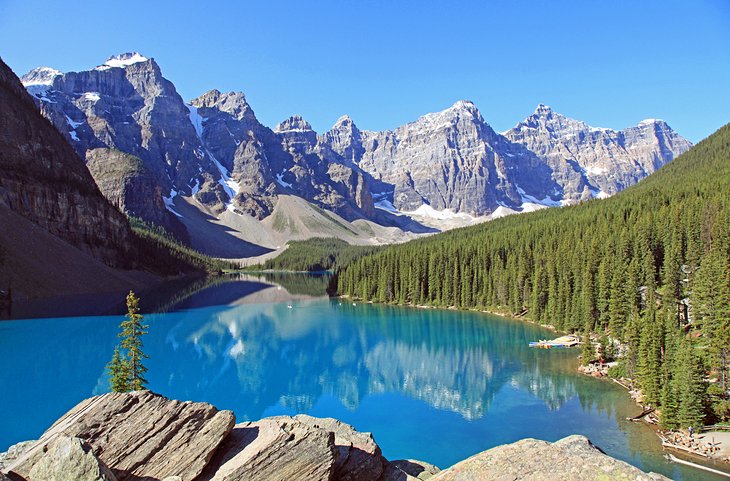
Western Canada Itinerary Highlights: Vancouver, Kelowna and the Okanagan Valley, Banff National Park, Jasper National Park, Lake Louise, Calgary
The best way to see the Canadian Rockies is by car, with a road trip beginning either in Vancouver and ending in Calgary, or doing it in the reverse order. A scenic seven-day trip will take you from Vancouver to Kelowna for a stop along the beautiful Lake Okanagan , and on to Banff National Park . From here, do a side trip up the Icefields Parkway to Jasper and end your trip in Calgary . This route runs through some of the most spectacular scenery in Canada.
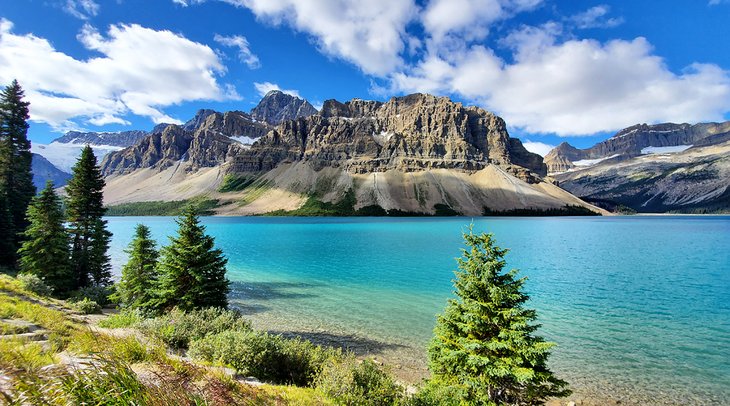
Kelowna is a pleasant city that caters to skiers in the winter, with nearby ski resorts of Big White and Silver Star . These are two of the best ski resorts in Canada . In summer, this is a popular area for renting a cottage, golfing, or exploring the lakes by houseboat.
Banff and Jasper National Parks , including the area around Lake Louise , are highlights of this route, and offer some incredible day hikes . You can plan your own Banff to Jasper itinerary along the Icefields Parkway . Even if you are not interested in getting active, there are scenic pullouts along the Parkway to see the turquoise lakes, glaciers, waterfalls, and other sites.
The town of Banff , in the park of the same name, is a beautiful mountain tourist town with all kinds of accommodation, including camping . In town, the dining and shopping options are substantial, with too many stores and shops to count.
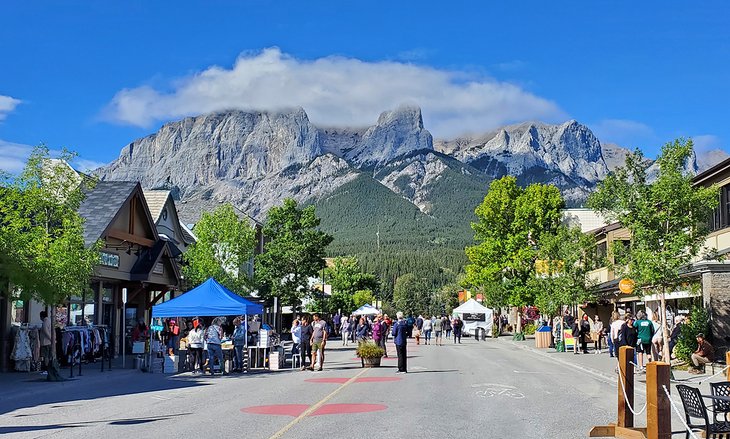
Just outside the park to the east, the small mountain town of Canmore is a great base, with plenty of resorts if you don't want to stay in Banff. Beyond Canmore, an hour and a half east of Banff, is the city of Calgary , home to the famous Calgary Stampede held in July.
Flights run regularly between Calgary and Vancouver. Another option for returning to Vancouver is a train trip on the Rocky Mountaineer , a high end rail journey through the Rocky Mountains.
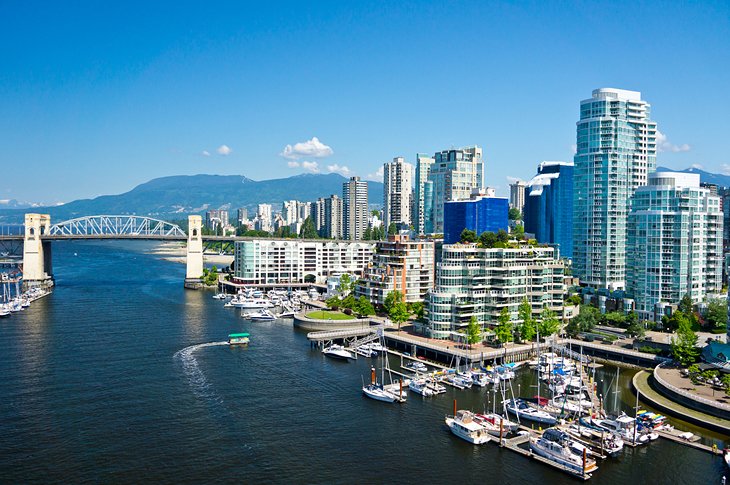
West Coast Itinerary Highlights: Vancouver, Whistler, Victoria, Salt Spring Island, Tofino
Spend a couple of days seeing the sights of Vancouver . Drive or catch a bus up to the posh ski town of Whistler for a day, a fun destination any time of year, and head back down to Vancouver where you can catch a ferry to Victoria , the capital of British Columbia. For some people, depending on how much time you allow in Vancouver and Victoria, this might be enough to fill seven days.
However, if you find you still have more time, plan a Vancouver Island itinerary or some excursions from Victoria. For a day trip from Victoria catch a car ferry to Salt Spring Island for a day of sightseeing, or visiting local farms and artisan studios.
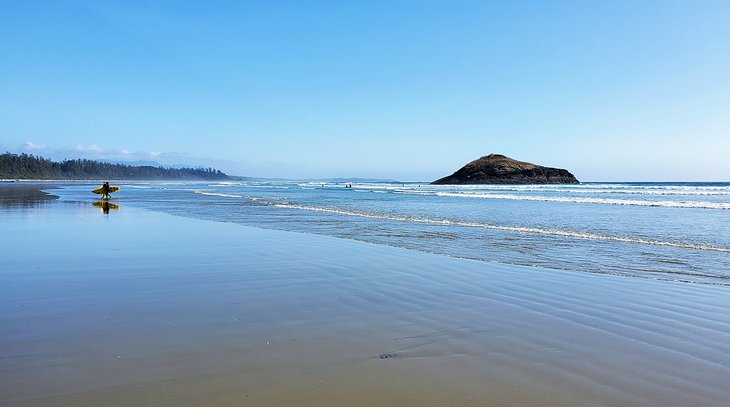
With a few days available, you can plan a Vancouver Island Road Trip. Drive up Vancouver Island to Tofino for a night or two, where you can stay in one of the beautiful seaside resorts . Spend some time surfing or walking along the beaches in Pacific Rim National Park , enjoy some of the beautiful day hikes around Tofino or near the village of Ucluelet , and see the pristine coastal forest all along this remote stretch of the island.
A car makes this trip simple and is the best way to see the attractions. If you are using public transport, it will be cheaper and include a bus to Whistler and walk-on ferries to Victoria and Salt Spring Island. With a car, be aware that taking a car ferry may require some wait time, especially around holidays. If you add on a trip to Tofino a car is almost essential.
If you are looking for more things to do on Vancouver Island, consider taking the time to explore the best hikes on Vancouver Island , or set up your tent or RV at one of the scenic campgrounds . The campgrounds near Tofino are especially beautiful. You can also plan excursions out of Nanaimo and Parksville.
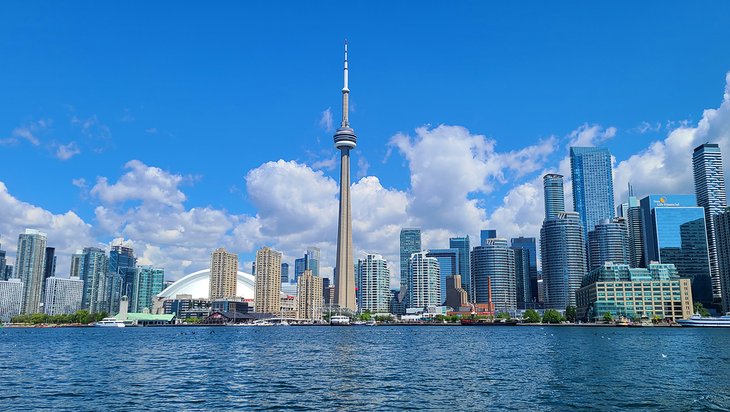
Central Canada Itinerary Highlights: Toronto, Niagara Falls, Ottawa, Montreal, and Quebec City.
With Toronto being a major point of entry for many travelers to Canada, this is the best place to start a tour of Central Canada. Spend a few nights in Toronto to see the sights, take in a Broadway show, and do a day trip to Niagara Falls . There are several tour operators offering day trips to the falls, which usually include a stop at the lovely little town of Niagara-on-the-Lake , one of Ontario's most romantic small towns.
From Toronto, you can drive or take a train to Ottawa , Canada's capital, to see Parliament Hill , some national museums, and in winter, you may even be able to skate along the Rideau Canal running through the city.
Montreal is another must-see city in Central Canada. You can get there easily from Ottawa, or directly from Toronto if you choose to skip Ottawa. Trains run regularly from both cities to Montreal, and by car, it is quite an easy drive (4.5 hours from Toronto to Ottawa, 5.5 hours from Toronto to Montreal, and two hours from Ottawa to Montreal).
With more time available, you can continue on to Quebec City to tour this historic French city. This is a city definitely worth visiting, and may even serve as an alternative to visiting Montreal if you are unable to visit both.
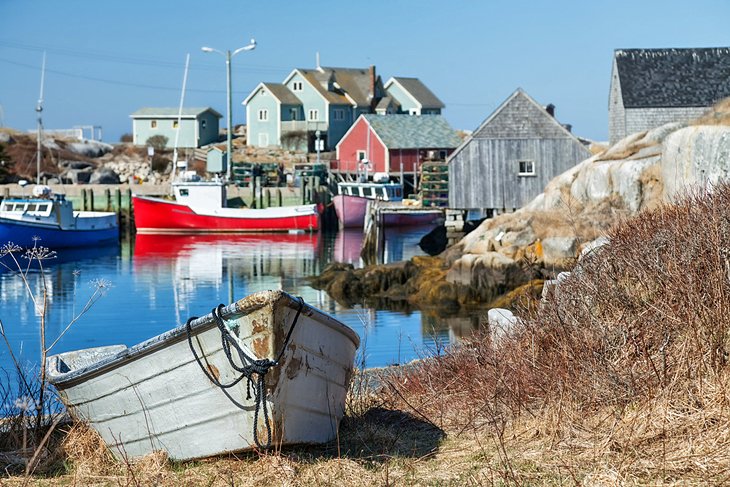
Nova Scotia and PEI Itinerary Highlights: Halifax, Lunenburg, Charlottetown, Cape Breton Island
Eastern Canada is a large area and you may want to explore a region rather than try to see everything. Beginning with Nova Scotia and PEI is a good start. The most practical way to tour this area is with a car.
With eight to 10 days, you can easily see the highlights of Nova Scotia and Prince Edward Island . Begin in Halifax with some sightseeing around the city, and then spend a day touring the surroundings, with visits to Peggy's Cove and historic Lunenburg , before moving on to Annapolis Royal . From here, continue up and along the Bay of Fundy , making your way to the Confederation Bridge and over to Charlottetown , Prince Edward Island.
Take at least a day to explore the PEI, with a trip to Prince Edward Island National Park and Green Gables , the fictional home of Anne of green Gables. If the weather cooperates, take some time to enjoy the seashore. PEI's Brackley Beach with its long stretches of golden sand, is one of the best beaches in Canada . When you are ready to leave, take the Wood Islands Ferry to Caribou , Nova Scotia and head up to Cape Breton Island . There is plenty to see and do here, but the most popular activity is driving the scenic Cabot Trail , which runs through Cape Breton Highlands National Park.
If you have time, make your way out to Louisbourg to see the Fortress Louisbourg National Historic Site. From here you can head back to Halifax.
If you have another seven or 10 days for exploring the Maritimes, tack on a tour of Newfoundland .
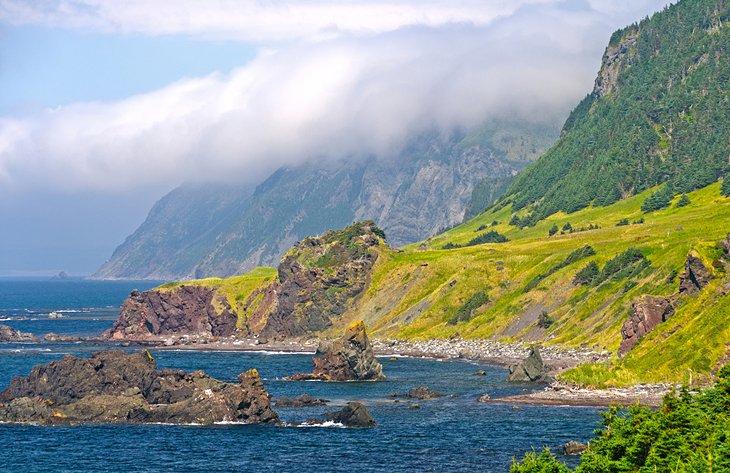
Newfoundland Itinerary Highlights : St. John's, Gros Morne National Park, coastal towns
Start your Newfoundland itinerary with a stop in St. John's , the provincial capital, to explore Signal Hill National Historic Site and George Street , in the lovely downtown area. When you leave St. John's, take the scenic drive along Conception Bay and over to the Bonavista Peninsula to the charming town of Trinity. This scenic little seaside village with colorful houses looks out onto oceanfront cliffs. Tour some historic buildings to get a feel for the culture, take a whale-watching tour, or go for a hike. If you are visiting in the late spring, you may even see an iceberg.
From here, continue up the coast through Terra Nova National Park and on to the village of Twillingate to experience a quaint coastal community. After a night in Twillingate make your way to beautiful Gros Morne National Park , for a boat tour or some hiking in this spectacular landscape. Stay in the park at Rocky Harbour, Norris Point, or at nearby Deer Lake.
If you have more time, consider making a trip up to L'Anse Aux Meadows , a UNESCO World Heritage Site, to see some Viking history. Afterwards, make your way back to St. John's. Keep in mind, driving in Newfoundland may take longer than you expect, with winding roads and last-minute decisions to turn off the highway and visit coastal towns or scenic areas.
- Read More: Top-Rated Tourist Attractions in Newfoundland and Labrador
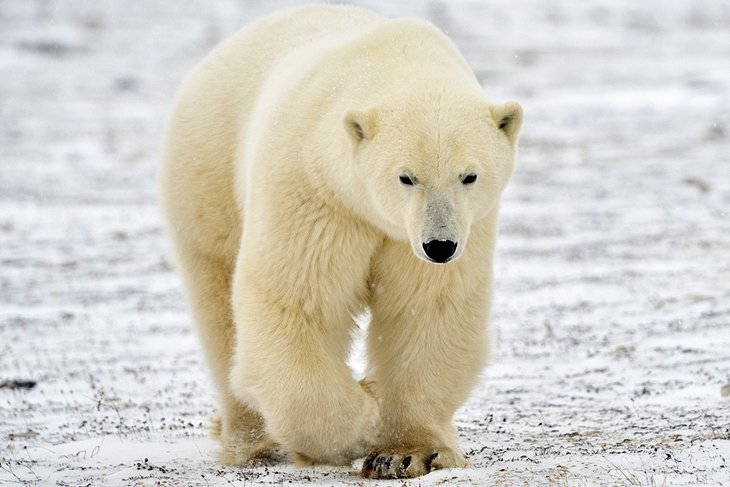
Northern Canada Itinerary Highlights: Churchill, Whitehorse, Yellowknife
There is no easy way to see all of Canada's north in one trip. The region is extremely remote, and the highlights are, in many cases, geographically distant from one another.
Here are some options for a Northern Canada itinerary:
If your goal is to see wildlife you should consider a trip to Churchill , Manitoba in the late fall to see the polar bear migration. Many different tours leave from Winnipeg , offering multi-day stays that include options to see the bears in a Tundra Buggy and stay in a Tundra Lodge. Most tours involve a flight from Winnipeg to Churchill, but it is also possible to take a train to Churchill.
The two main cities of the north are Whitehorse , in the Yukon , and Yellowknife , in the Northwest Territories . Both of these cities are accessible by car.
Many people incorporate the Yukon into a driving trip to Alaska . This route typically involves driving up through northern British Columbia and runs from Haines, going through Skagway, Carcross, Whitehorse, Dawson City, and into Alaska to the cities of Fairbanks and Anchorage , then back into the Yukon to Haines Junction and back to Haines. This route will give you a chance to experience some of the characters and cultures of the north, learn about the history of the Klondike Gold Rush, and see some of the beautiful landscape.
To reach Yellowknife , most people drive up the Mackenzie Highway from northern Alberta to Highway 3 running through Fort Providence. While in Yellowknife, be sure to get out on the waters of Great Slave Lake to battle the giant northern pike and trout waiting beneath the surface.
To see more of the north from Yellowknife, flights are in order. Possible options include side trips to Nahanni National Park , one of the jewels of Canada's north, or to the northern community of Inuvik, just 200 kilometers from the Arctic Circle, to see what life is like in the far north.
- Read More: Top-Rated Tourist Attractions in Whitehorse
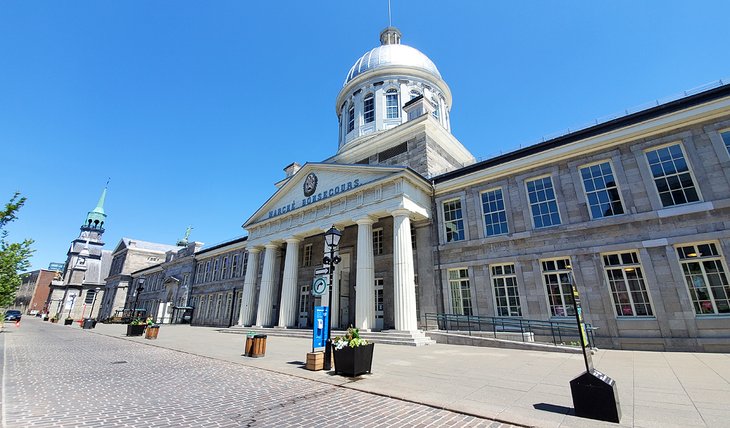
Canadian Cities Itinerary Highlights: Vancouver, Toronto, Montreal (Optional: Calgary, Halifax, St. John's, Quebec City)
If you are looking for a cross-Canada cosmopolitan adventure, the key cities are Toronto , Vancouver , Montreal , and the nation's capital, Ottawa . But if you want to probe a little deeper, you could easily add on Calgary , Halifax , St. John's , and even a side trip from Montreal to Quebec City . There are regular flights to all of these destinations and quick and convenient train connections that run between Toronto, Montreal, and Ottawa. Flights to the eastern cities of Halifax and St. John's are generally more expensive.
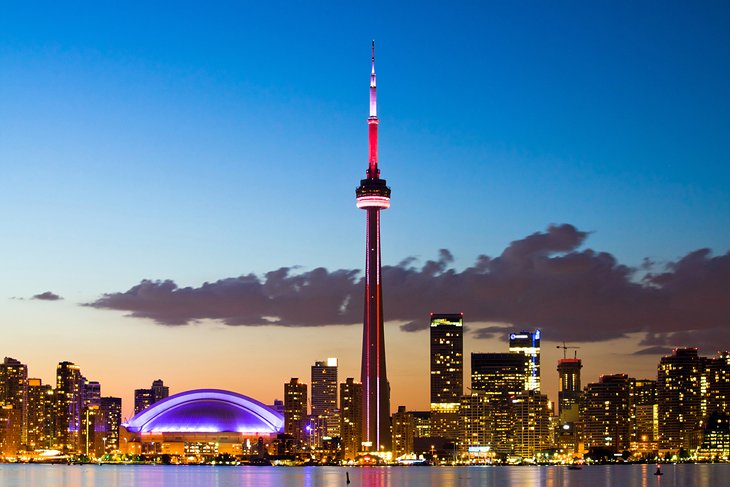
Vancouver is arguably Canada's most beautiful city, while Toronto is a great place to see a show, take a day trip to Niagara Falls, and enjoy the view from the CN Tower.
Montreal is an incredibly vibrant city known for its French culture, shopping and fashion, and trendy Old Town . With extra time, you could add on a trip to Ottawa , between Toronto and Montreal, to tour some of the best museums in Canada.
Nature lovers could make a stop in Calgary for a quick trip out to Banff National Park and Lake Louise. For a more complete picture of Canada, catch a flight to either Halifax or St. John's to enjoy some seafood and experience the culture and friendly people of Atlantic Canada.
Planning a trip to Canada involves more than geographical considerations; the weather should be high on the list of things to research as well. Canada is so massive that the country can be experiencing four seasons on the same day. For example, on a typical June day, it could be 30 degrees Celsius, hot and humid in Central Canada, fogbound and cool in the Atlantic provinces, pleasant with cool sea breezes in Vancouver, and snowing in the Rockies or far north.
The best months to visit Canada are July and August . During these months, you'll get the warmest temperatures and have the best chance to do all the activities you have planned. However, this is when all the Canadians like to do things as well, so prices tend to rise and the most popular places can get crowded. If you can get away in September, you'll be rewarded with warm days, cool nights, and less crowded attractions.
Vancouver and coastal British Columbia along with Eastern Canada have temperate climates - it rarely gets too hot or too cold. The farther you move inland from the moderating effect of the oceans, the more extreme the temperatures get.
Planning a trip in the winter is less popular, unless you are a downhill skier or hardy outdoorsman. The best winter month for a ski trip is March, with its more moderate temperatures, sunny days, and copious snowfall. December is early for consistent snow conditions; January and February can be bone-chillingly cold and have short days.
Winter can also be a great time to experience the arts. Enjoy the ballet, symphony, and theater, or spend some time at the museums.
More Related Articles on PlanetWare.com
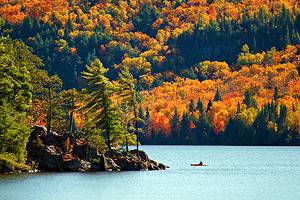
Ontario's Nature Escapes: If you want to add a little summer adventure to your Canada itinerary, you may want to look to Ontario. Central Canada is home to some pristine natural areas, perfect for visitors looking to plan a canoe trip, fishing trip, or to simply soak up nature at a lodge. A good place to research ideas for canoeing or camping is with our guide to the Best Parks in Ontario . For fishing, see our list of the Top Fishing Lodges in Ontario .

More on Canada
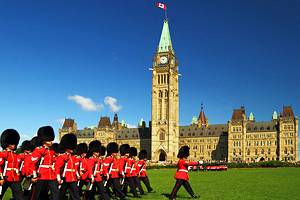
What Americans Need to Know Before Visiting Canada
Most important: You must have a passport or equivalent
In many ways, Canada is much like the United States, and historically, the two countries have been casual about crossing back and forth over the border, almost like we are one big happy family.
But even though the U.S. and Canada maintain a healthy friendship, certain restrictions and differences in laws can affect a U.S. citizen visiting Canada.
Before you head north , check out the nine things you should know about visiting Canada. In addition, get the lowdown on Canada's top attractions , the cost of traveling , and common myths and misconceptions .
You Must Have a Passport
All U.S. citizens arriving in Canada must have a valid passport or passport equivalent, such as a passport card or NEXUS card . Gone are the days of casual cross-border visits with only a driver's license; those disappeared after 9/11. There's some leniency when it comes to children coming to Canada. Travelers 15 years of age, or younger, need only present a birth certificate or certified copy to the border patrol.
You Can Bring Fido but Not Fresh Fruit
Be sure to educate yourself on what can and can't be brought over the border to Canada when you visit. For example, you can bring your pet (with proper documentation), but fresh fruit is a no-no. Take advantage of shopping for duty-free liquor and cigarettes at the duty-free stores, but you can only buy limited amounts .
Canada is a popular hunting destination but be sure to read up on the country's laws regarding prohibited, restricted, and non-restricted guns and be sure you have all the proper paperwork.
You can take gifts into Canada, but anything valued at over $60 CAD is subject to duty and taxes.
Your U.S. Driver's License Is Valid
At first glance, driving in Canada looks the same as it does in the U.S., but dig a little deeper and you'll notice some differences.
The good news is, your U.S. driver's license is perfectly transferable to driving in Canada. However, you'll need to learn some of the other laws and conditions.
Speed limits are different in Canada and posted in metric, so kilometers, not miles, are used to indicate maximum speeds in any given area. Distracted driving laws are in effect in all Canadian provinces and territories , which means cell phones must be used hands-free when driving. Canada also makes it a no-no to smoke in a car if you have a minor (under 16 years old).
Driving conditions in winter can be extremely hazardous. Have a charged cell phone and an emergency kit when you head out in snowy weather. If your car is not ready for winter driving, consider renting a car that is better equipped.
U.S. Currency Is Not Accepted Everywhere
Though many border towns and large metropolitan areas will accept U.S. currency , it is not widely accepted in other parts of Canada, like smaller or more remote towns, where they only deal in Canadian currency. Tourist attractions and major malls will probably give you a reasonable exchange rate, while other businesses may just accept U.S. currency at par.
You Could Get Dinged With Cellphone Roaming Charges
Scott McLean
Your U.S. cellphone will work in Canada, but the charges will be astronomical if you don't let your carrier know you are heading out of the country and have them work out a texting and calling package for you while you're away. If you don't set up a special plan, turn off your cellular data in settings and only download email when you're hooked up to WiFi.
You Could Be Denied Entry
Canadians love their neighbors to the south and are a friendly lot, but they don't let just anyone across the border. Canadian Border Services Agency guards can get sticky when it comes to criminal records or suspicious behavior. You should be aware of what can get you denied entry ; that includes DUIs and improper identification or papers if you're traveling with minors who are not your own.
You'll Still Need Health Insurance
Canada does have an excellent universal health care system, but only for Canadians. If you are visiting Canada, you might want to purchase travel health insurance coverage for your stay, unless your health insurance provider covers you outside the U.S.
Legal Drinking Age Is 18 or 19
You may have to wait until 21 years old in the U.S.A., but make your way north and the legal drinking age goes down to 18 or 19-years-old in Canada , depending on the province. The drinking age also applies to the ability to buy liquor and beer, which in most parts of Canada is at specially designated liquor and beer stores, not in grocery or convenience stores.
The Taxes Might Surprise You
Your restaurant or hotel bill might surprise you if you don't know that Canada adds a federal sales tax on all goods and services. Most other provinces also have their own tax, which means, depending on where you are in Canada, your bill could have up to an additional 15 percent tacked on. The tax refund program for visitors to Canada was dropped in 2007 , so the taxes you pay while you're in Canada stay in Canada.
What You Need to Know About Visiting Canada From the U.S.
Reasons You May Be Denied Entry at the Canada Border
Before You Travel to Canada
Is U.S. Currency Accepted in Canada?
Tijuana, Mexico Visitor's Guide
Driving in Mexico: What You Need to Know
Do Children Need a Passport to Visit Canada?
How to Apply for a NEXUS Card
What Documents Do I Need for Mexico Travel?
Driving in Paris, France
How to Buy and Use the National Park Pass for Seniors
Driving in France
Rocky Point, Mexico Travel Guide
Driving in Arizona
What You Can & Can't Bring Into Canada
What to Know About French Customs Regulations

TRAVEL to CANADA – Tips and Information Guide (2024 Edition)
Everything you need to know about travel to Canada in our comprehensive 2024 Canada travel guide.
Have you ever wanted to see the Northern Lights? Or to explore the beautiful cities of Vancouver, Quebec or Calgary? What about venturing out into the world-renown national parks of British Columbia?
Unspoiled nature and incredibly vibrant urban areas create the perfect mixture of reasons to travel to Canada.
“The Great White North,” is a vast country that offers virtually unlimited opportunities for visitors of all kinds.
Whether searching for wildlife, landscapes, adventure activities or the culture of city life, travelling in Canada will give you a variety of experiences you are sure to remember.
There really is so much to do it can be overwhelming to plan to visit Canada. But getting started is not that difficult.
Read on to learn everything you need to plan for travel to Canada!
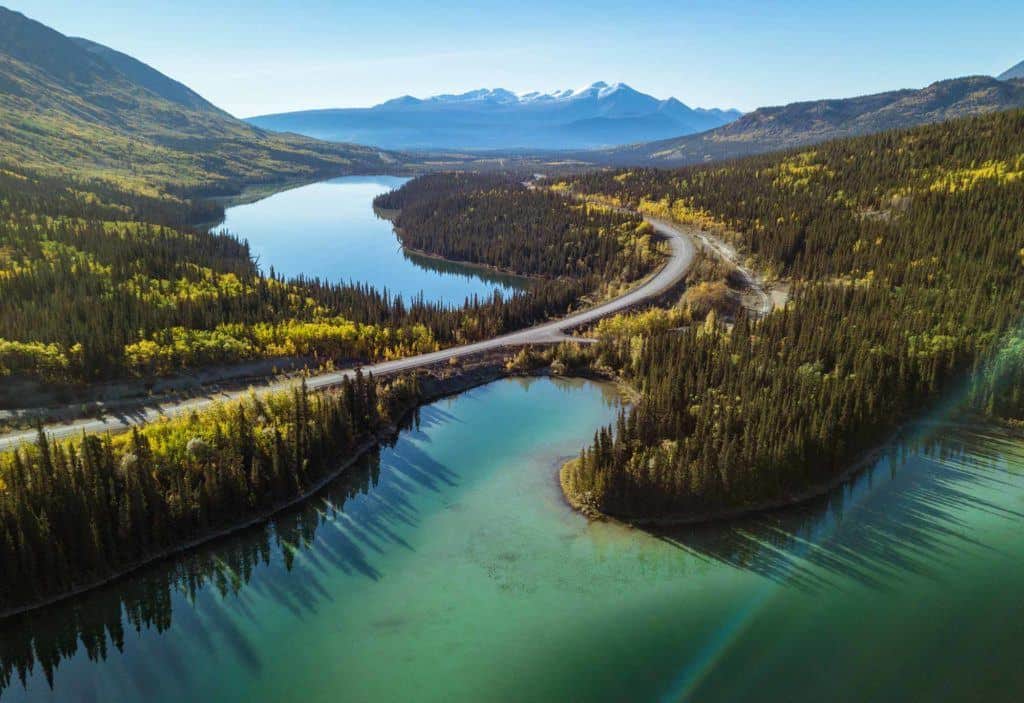
TRAVELLING IN CANADA: AT A GLANCE
Here are the basics of travel to Canada.
TOP 5 TRAVEL EXPERIENCES IN CANADA
With so much to see and do in Canada, it really is hard to pick the top experiences. We have written a comprehensive guide on the best things to do in Canada here.
However, we think that to truly appreciate Canada you need to plan to do these 5 activities during your visit.
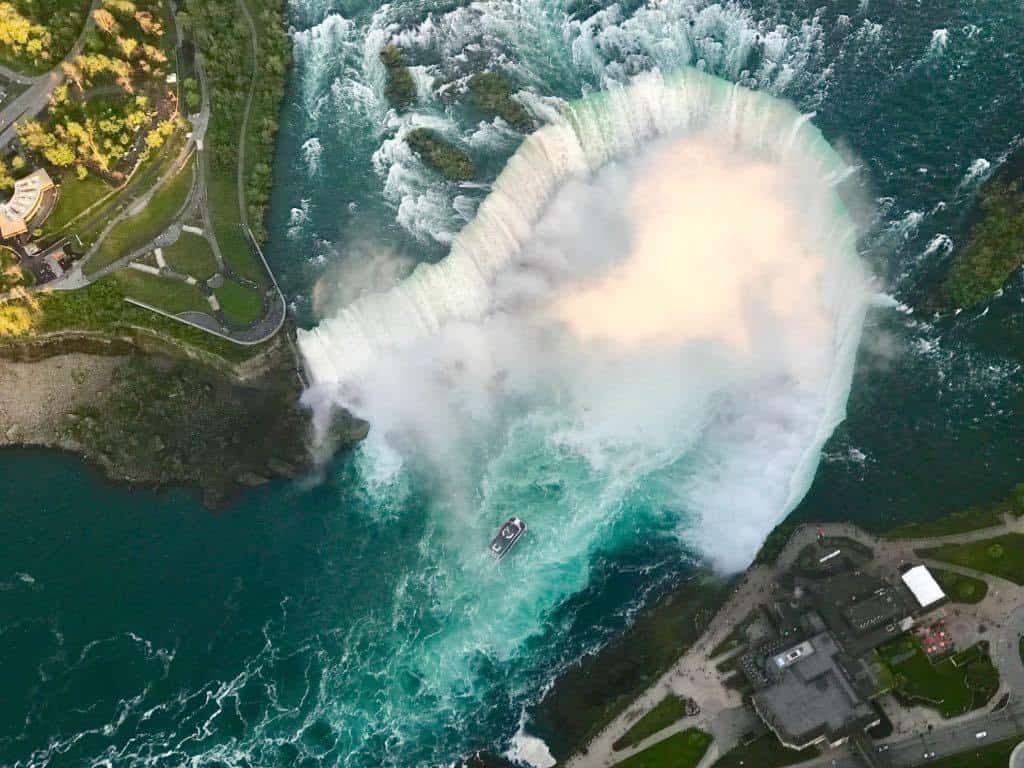
Check out Niagara Falls
Niagara Falls is one of the world’s most famous waterfalls and well worth a visit. Find yourself in awe watching the water tumble over the top of the falls. Or hop on a boat and cruise up to the falls from the river!
Read about all our favourite Niagara Falls attractions .
Explore the Canadian Rockies
From picturesque mountain peaks to stunningly blue glacial lakes, the Canadian Rockies in British Columbia have so much exploration to offer! This part of Canada could be a trip in itself!
Check out our ultimate guide to Hiking in Banff
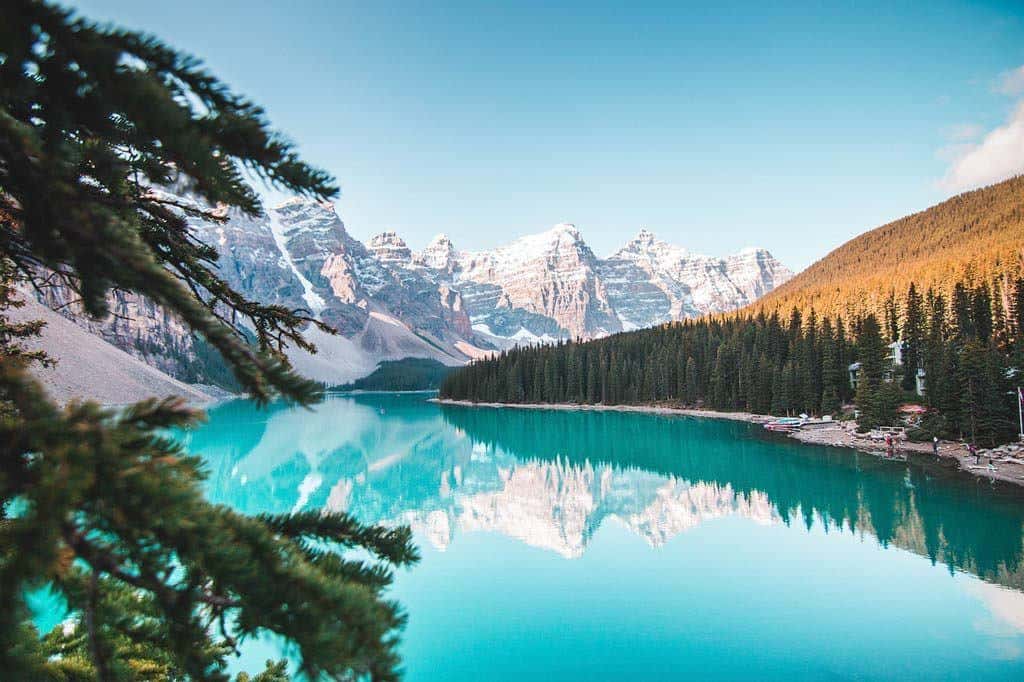
View The Northern Lights
Witnessing northern lights is one of the most amazing natural phenomena. The city of Whitehorse in the Yukon territory might be a perfect place for it! Your chances are highest between September and April since the nights aren’t dark enough during the summer.
Check out the Northern Lights in Whitehorse , Yukon Territory.
See Polar Bears
Churchill in northern Manitoba is known as the ‘Polar Bear Capital of the World’, making it an obvious choice to visit for travellers wanting to get close to the planet’s largest apex land predator.
See polar bears in Churchill, one of Canada’s best wildlife experiences .
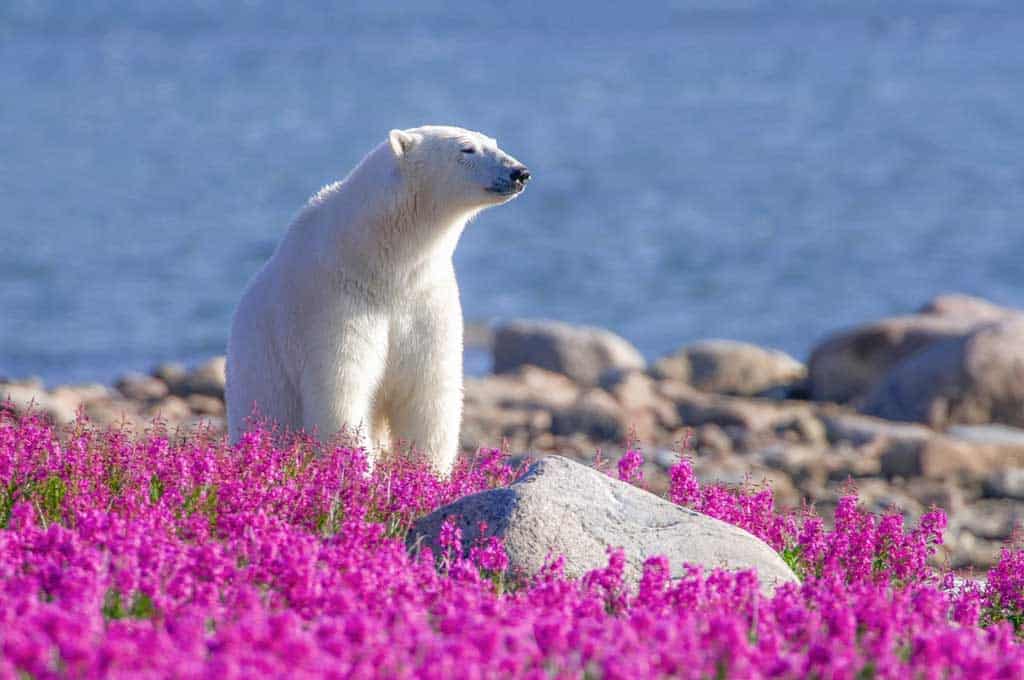
Drink the Sourtoe Cocktail
Taking a shot of alcohol with a frostbitten toe may not be on everyone’s bucket list. But if it’s on yours, you absolutely must try to Sourtoe Cocktail in Dawson City. It’s a strange, yet unique experience when you visit Canada.
Read more about the Sourtoe Cocktail and lots of other great things to do in Dawson City .
Other Things to do in Canada
Scale the CN Tower in Toronto. If you’re unafraid of heights, strap into a safety harness and walk around the top or just check out the views.
Visit Stanley Park in Vancouver. The world’s happiest city has much to offer . But most visitors start at this famous park downtown.
Take a drive on the Icefield Parkway. This incredible stretch of highway connects Banff and Jasper National Parks and is full of amazing landscapes and stunning wildlife!
Hang out with Polar Bears in Manitoba. View these dangerous, but remarkable, animals as they waltz around Churchill like they own the place.
Take a gondola ride in Banff. Situated in the heart of the Canadian Rockies, Banff boasts unrivaled beauty best seen by way of the gondola.
Eat poutine . A strictly Canadian plate, poutine is french fries and cheese curds covered in gravy. Try varieties all across the country!
Take a flight over glaciers in Kluane National Park. The only way to beat the spectacular views of driving or hiking the Canadian Rockies is to check them out from above !
Tour La Citadelle de Québec in Quebec City . One of the most visited cathedrals in Canada, you will feel lost in the grandeur of this sacred place.
Ride the Rocky Mountaineer train . The most relaxing way to enjoy the Canadian Rockies is touring them on this train ride from Vancouver to Banff .
Eat lobster in the Maritimes. Lobster doesn’t get much fresher than that caught and served up in New Brunswick and Nova Scotia.
Go dog sledding in the Yukon. Yes, there are humane ways to enjoy this absolutely incredible experience . Dress warm and enjoy the ride!
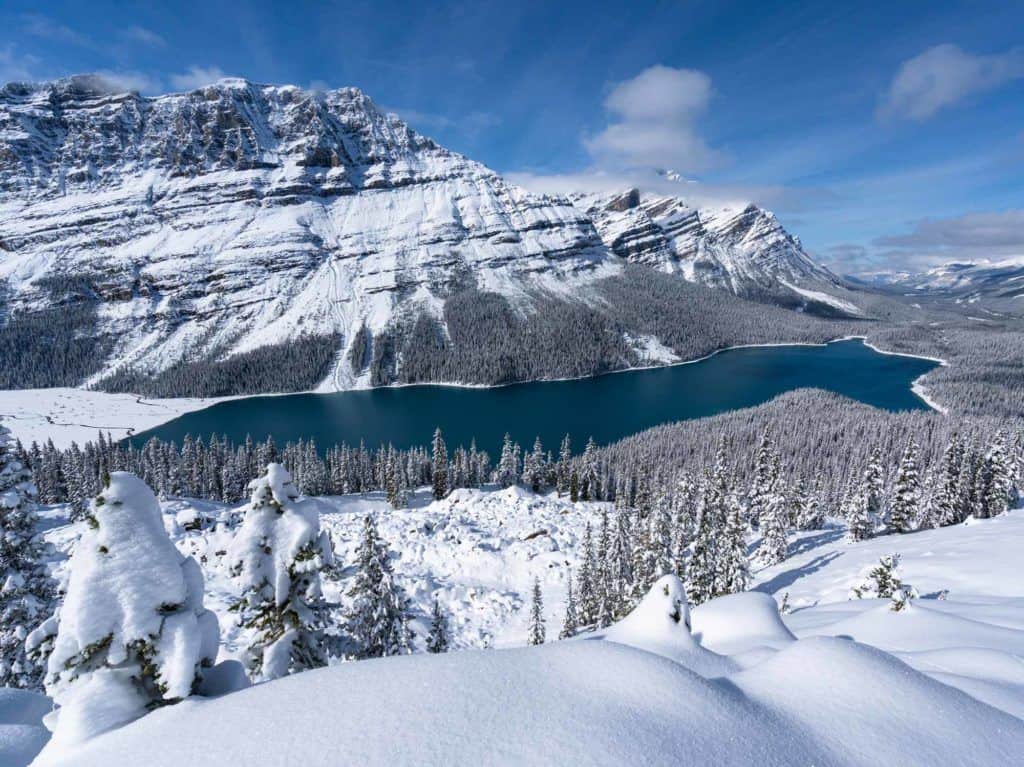
BEST PLACES TO VISIT IN CANADA
There are plenty of amazing places to visit in Canada. Depending on your interests, trip duration and time of year you will find plenty of things to do during any length of stay.
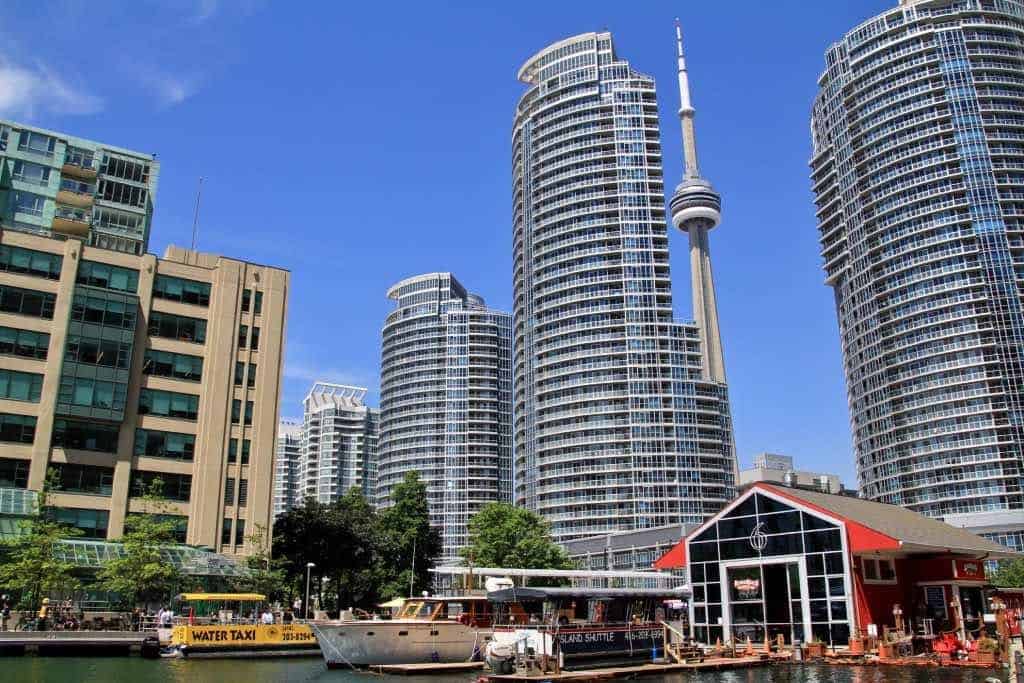
Toronto is not only the largest city in Canada but also truly one of the most stunning cities in the world. It’s famous for its diversity and travelling here will be a great chance to learn about different cultures! The people are incredibly nice, the sights are beautiful.
Check out our Toronto City Guide.
Montréal is a fascinating mix of Europe and North America. It’s a definition of a vibrant city – full of festivals, museums and must-visit restaurants. There’s an abundance of things to do there. Brush up on your French before your trip!
Check out our Montreal City Guide.
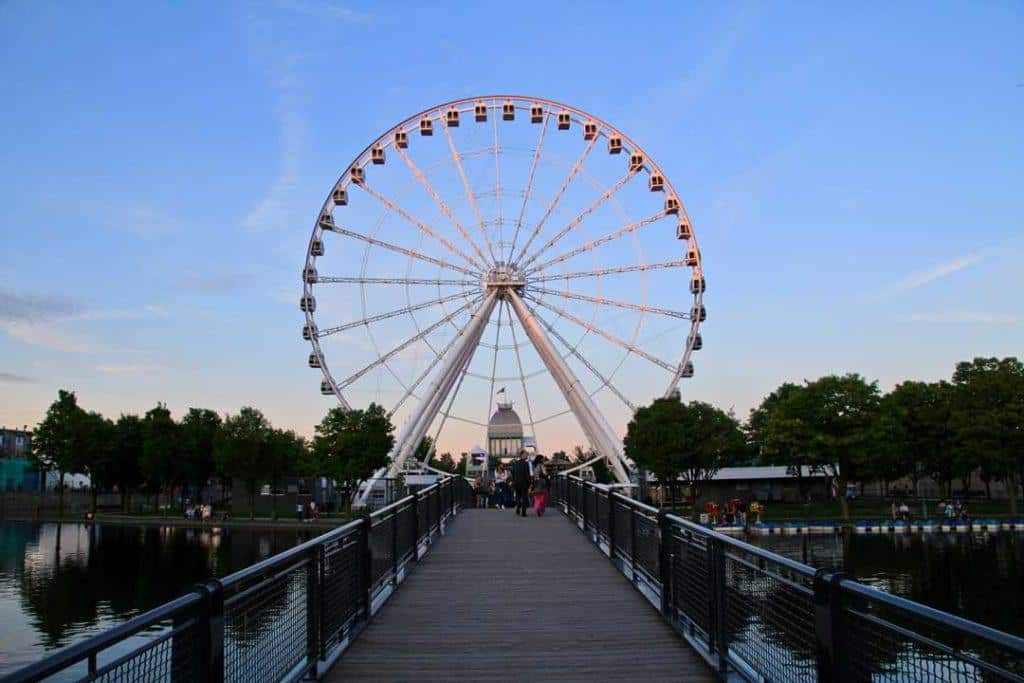
Vancouver is consistently ranked as one of the top places to live in the world. With picturesque scenery all around, tons of outdoor activities, numerous opportunities for wildlife encounters and many great day trips you absolutely have to add Vancouver to your Canada itinerary.
Check out our Vancouver City Guide.
Banff / Lake Louise
Lake Louise is one of Banff National Park ’s most famous sights. The extraordinarily turquoise water is a real feast for the eyes. Plus there is spectacular hiking, biking and even kayaking that you can do to further enjoy the beauty of the nature around. You can visit during the summer or spend your winter vacation here!
Check out our Banff City Guide .
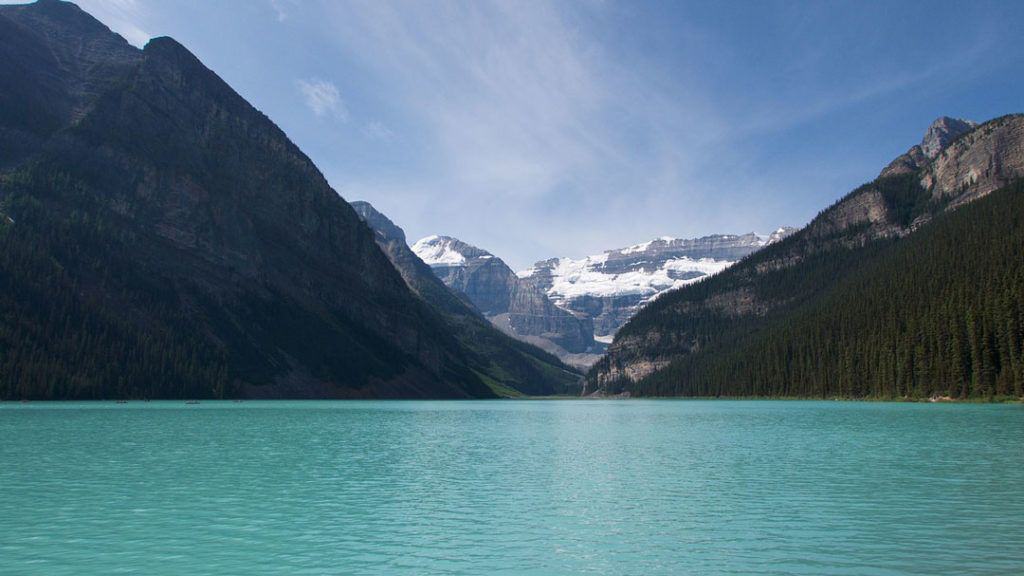
For more information on specific things to do in the top places to visit in Canada, reference our following city travel guides:
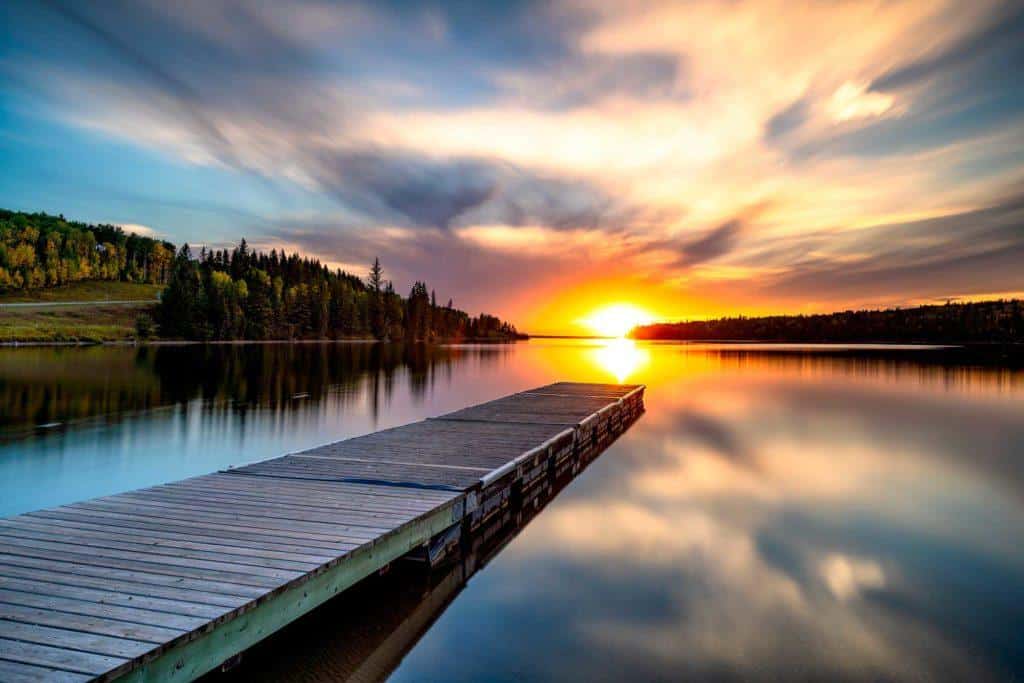
BEST CANADA TRAVEL ITINERARY
Canada is huge and there are so many amazing things to do there that planning an itinerary for your travel can be a little overwhelming.
We’ve divided these itineraries into Eastern Canada and Western Canada options for both 1 or 2 weeks. Having at least 1 month to road trip across the entire country would be ideal.
But short of this, your best option will be to plan to visit each side of the country separately.
Of course, no one-size-fits-all plan will suffice. But if we were to head back to Canada these are the top places and things that we would want to do!
1-Week Canada Travel Itinerary Highlights
Eastern canada 1-week itinerary.
- Fly into Toronto (2 days) / day trip to Niagara Falls
- Go to Ottawa (1 day)
- Go to Montreal (2 days)
- Go to Quebec City (2 days)
- Fly from Quebec City
Western Canada 1-week Itinerary (Road Trip)
- Fly into Calgary (1 day)
- Tour Canadian Rockies – Banff/Jasper/Yoho National Parks (3-4 days)
- Vancouver (3-4 days)
- Fly from Vancouver
2-Week Canada Travel Itinerary Highlights
This is an idea of how we’d spend 2 weeks in Canada.
Eastern Canada Itinerary
- Fly into Toronto (3 days)
- Day trip to Niagara Falls
- Go to Ottawa (2 days)
- Go to Quebec City (3 days)
- Return to Toronto
Western Canada Itinerary (Road Trip)
- Fly into Calgary (1-2 days)
- Banff National Park (1-2 days)
- Jasper National Park (1-2 days)
- Yoho National Park / Glacier National Park (1 day)
- Revelstoke National Park (1 day)
- Stop in Revelstoke (1-2 days)
- Drive to Vancouver (4 days)
- Day trip (ferry) to Victoria on Vancouver Island
- Fly out of Vancouver
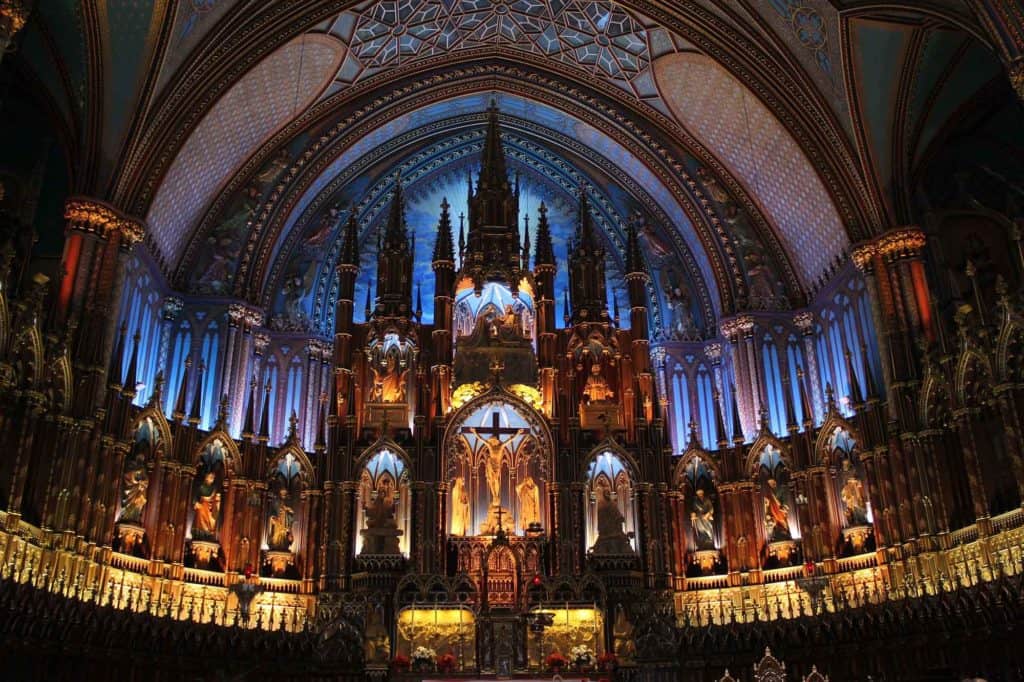
CANADA TRIP PLANNING
Best time to visit canada.
Since the country is so vast and diverse, there really isn’t a time of year unsuitable for travel to Canada.
Depending on what you want to do, you should pick the month of your trip accordingly.
Summer Travel (June – August)
The warmer summer months, such as July and August, are the most common times to visit Canada.
As in many countries in the northern hemisphere, summer in Canada is an ideal time of travel and adventure for many tourists. Expect to come across more tourists and higher prices during this time.
But don’t worry about the crowds and expense. Canada is beautiful during the summer!
It’s summer temperatures tend to not be as extreme as other summer destinations. Some parts of the country, particularly those further north and at higher elevations, will still see the snow melting well into June and July.
This is a great time to explore Canadian cities. But it is also the ideal time to visit any of the stunning national parks.
Winter Travel (December – February)
Winters in Canada can be very cold. But this is also a great time of year for winter activities, such as dog sledding , snowboarding/skiing and ice climbing.
But, keep in mind that some parts of the country deal with extremely uncomfortable temperatures.
For example, Winnipeg is Canada’s coldest city. Temperatures there can drop to -40°C at times!
Many of the places that are popular during the summer months are not as popular during the winter.
So if you would like to see parts of the country with fewer crowds than winter may be a great option for you.
Shoulder Season
The shoulder season in Canada is similar to other parts of the world. Spring and Fall tend to see less tourist traffic than the summer and winter months.
The months that are not very popular are April and November. They are often neither cold nor hot enough to enjoy certain activities.
However, the prices are much lower during this part of the year. So if you factor this into your planning, maybe this isn’t such a bad time to travel to Canada.
CANADA TRAVEL BUDGET GUIDELINE
Budgets for travelling in Canada can vary greatly. This depends on where you want to go, what you want to see and do, how you want to travel and the level of comfort you expect in your accommodations.
Canada is a highly developed country. As such many day-to-day expenses such as meals and accommodation can range in price greatly.
Here are a few ideas of what to expect in planning your budget to travel to Canada.
Budgeting Tips:
To make your money go further here are a few budgeting tips:
- Take public transportation or walk whenever you can.
- For longer trips, look for rideshare options on places like Craigs List and travel forums and groups.
- Buy food at local markets and cook your own meals as often as possible.
- Look for free events and festivals to attend in the cities you visit
- Consider couch surfing from time to time. And camping should be on your list of things to do anyway
- Look for last-minute deals on accommodation, travel and activities.
But there are a few things you should know about the different budgets at which you can choose to travel.
Note: Budgets shown as Single Traveller / Couples per day.
Budget Traveller ($40-75 Single / $100+ Couples)
If you are a budget traveller visiting Canada on your own you will have quite a challenge to keep yourself within budget.
The most affordable accommodation, besides Couchsurfing, are hostels and Airbnb. But not all places you’ll want to travel will have these options.
If you’re on a tight budget then you probably won’t eat at restaurants on a regular basis.
Your best options might be fast-food restaurants and buying your own groceries and cooking when that is an option.
Canada has open-air markets and lots of chain grocery stores where you can buy groceries at affordable prices.
When it comes to public transportation, the prices are different in each area. But they’re not exactly cheap anywhere.
Daily city transportation can cost around USD$10 and single tickets are around USD$3.
Additionally, you will need to budget separately for the various activities that you would like to do.
For example, ski passes in winter can be pricey. And daily entrance fees to national parks are reasonable but will add up.
Mid-Range Traveller ($125 Single / $175 Couple)
If you are travelling to Canada with a mid-range budget then you have some flexibility in your plans that you wouldn’t have on a tighter budget.
The biggest changes will be in accommodation and meals. You’ll be able to stay in moderately priced hotels and eat most of your meals in proper restaurants (even if it’s only fast food).
You might also choose to rent a car from time to time or to upgrade on tour options to do an activity that might otherwise not be in the backpacker budget.
Couples travelling at this budget will save considerable expense by staying in hotels and Airbnb options instead of hostels. Transportation costs could also be reduced for couples choosing to rent a vehicle.
Luxury Traveller ($350+ Single / $450+ Couple)
If you can afford to travel with a little more luxury you’ll find plenty of options to enjoy yourself in Canada.
Large cities, as well as certain vacation destinations, have top-notch hotels and resorts. And you’ll find great stays in boutique lodging all throughout Canada.
You will also be able to afford to eat at the best restaurants and indulge in local delicacies and staples across the country.
Aside from more luxurious meals and accommodations, there are tons of things you can do when travelling in Canada with a more substantial budget.
You will be able to rent a vehicle or hire transportation around town. When travelling across the country you will be able to save time by flying.
Additionally, your choice in activities will expand to more unique experiences. From riding the Rocky Mountaineer train to flights through glacial ice fields , there is no shortage of experiences well worth the higher costs.
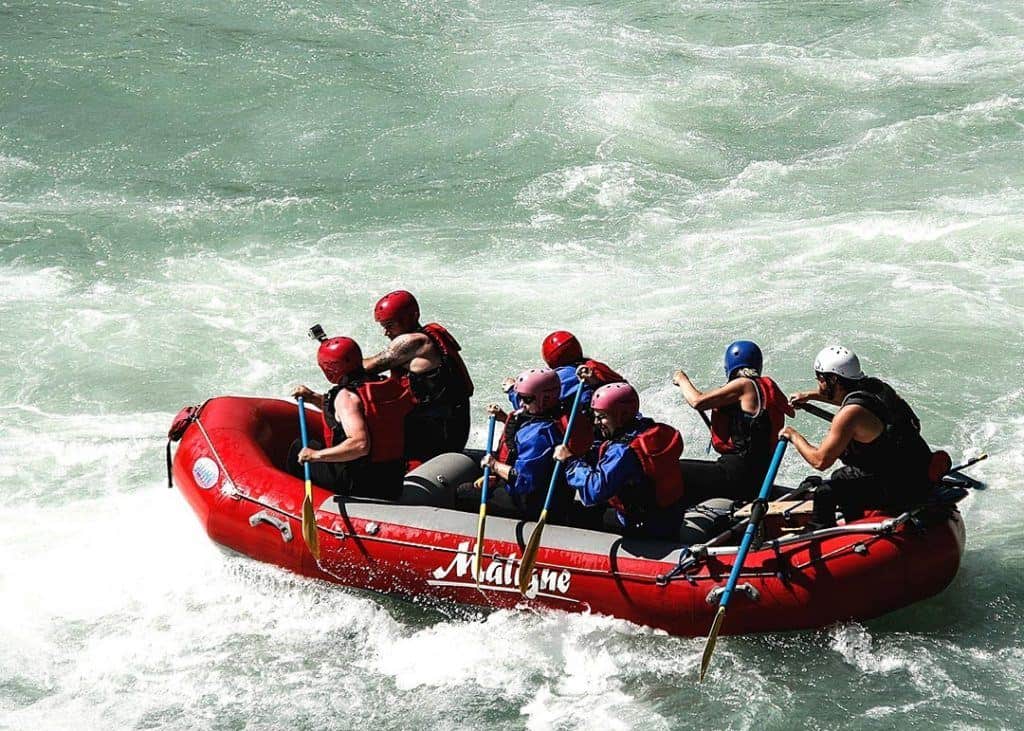
GETTING TO AND AROUND CANADA
Entry requirements.
Canada is relatively accessible for travel. Passport holders in 54 countries can visit Canada without obtaining a visa.
Canada will permit these travellers to stay in the country for up to six months.
Click here to see if your country is on that list. Others must obtain a temporary resident visa.
Travellers must also have an Electronic Travel Authorisation (eTA).
When applying for the eTA , visitors have to provide certain biographical details and passport information. Also, you’ll be asked about your employment information, available funds and your health and immigration history.
Getting to Canada
Since it is one of the most developed Western countries, there are multiple ways to travel to Canada.
The choice is yours depending on your needs and origins.
But you may want to consider comfort, prices, duration of trip and preferred method of travel as you plan how to get to Canada.
Canada has around 20 major international airports. This makes flying to Canada the quickest, most convenient way to enter the country.
The biggest and busiest airport is the Toronto Pearson International Airport. Direct flights to Toronto are available from a lot of cities across the world.
But you will also find international flights in and out of most major cities across the country.
Regardless of whether you put a lot of time into planning your trip or make a last-minute decision to visit Canada, there are almost always reasonable flight options available.
Sometimes it might also be cheaper to fly into the USA and then drive to Canada. So take that option into consideration.
Personal/Rental Vehicle
Many people travel to Canada as part of a North American exploration. Or you may find a better flight deal into a major US city like Boston, New York City, Chicago or Seattle.
As such you may find yourself driving to Canada from the United States.
In many places, it is very easy to pass between the Canadian/US border to visit nearby places in both countries.
Popular places include the Seattle/Vancouver area, Niagara Falls and Montreal/Vermont.
Roads between the US and Canada are generally in excellent condition. They are also marked well so navigation between the two should not be difficult.
Depending on your country of origin, time of stay and purpose for visit, passing through border security by vehicle is often less of a hassle than when arriving by plane.
If crossing into Canada from the United States, do check with your car rental company to make sure that you are able to do so without violating the terms of your agreement.
You will also want to make sure that the vehicle is insured in both countries.
If you’re going to travel to Canada from the United States, you can also travel by bus. Certain cities, like Seattle, Boston, Albany, Detroit or New York, have direct routes and inexpensive fares.
Some well-known bus companies that make trips between the US and Canada include Greyhound, Megabus and Quick Coach.
If you like to travel by train, then travelling to Canada from the US on a train is a great option. This combines relatively low costs, reasonable duration and incredible scenery.
In travelling from the US into Canada train you have two company options. VIA Rail Canada and Amtrak each have three routes that cross various borders between the US and Canada.
Further, all routes start and end in major cities so you can quickly orient yourself to other transportation options upon arrival.
Ferries can be a unique way to see parts of both Canada and the US that are not usually explored by most travellers.
At the moment, there are five ferries that travel to Canada from the United States.
Two depart from Maine and go to Yarmouth, Nova Scotia and Deer Island, New Brunswick (Bay Ferries Limited, East Coast Ferries).
Another two travel from Alaska to Port Hardy and Prince Rupert, both in British Columbia (Alaska Marine Highway System, BC Ferries).
Finally, you can get to Victoria, British Columbia from Seattle (Victoria Clipper).
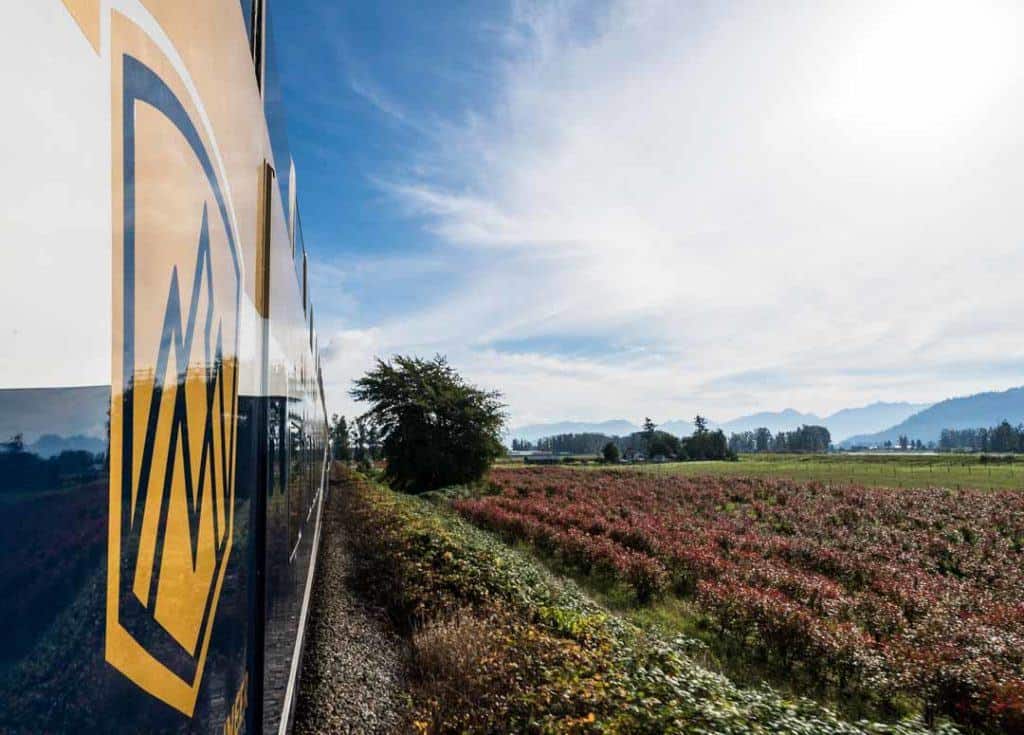
Getting Around Canada
It is pretty easy to get around when you are travelling in Canada. Expect to pay quite a bit more in Canada to travel between cities than in many less developed parts of the world.
And with higher costs, also expect longer durations in between destinations as distances in Canada can be great.
Travelling by Air
Travelling within Canada by air is the best way to cover ground quickly.
The county has many international and domestic airports. Sometimes, especially if you’re short on time, your best option is flying across the country.
In certain remote areas, there aren’t any other options besides air travel. When it comes to domestic flights, Air Canada has the best network of flights.
A few other companies include Air Creebec, Air St-Pierre, Pacific Coastal Airlines among others.
Travelling by Car
Rental cars are accessible and typically reasonably priced in more populated cities.
Much of Canada is best seen by rental car. There are many trips you can take to explore places considered off the beaten path for most.
Keep in mind that fuel prices can be high, particularly in less-trafficked regions of the country.
But a rental car would be a great way to explore the various cities in eastern Canada. It would also be the best way to get around the various national parks and other natural beauty in western Canada.
Travelling by Bus
In most cities, buses are the main form of public transportation. Toronto has the largest system, with around 140 bus lines.
Travelling by Taxi & Rideshare
Taxis are available everywhere in Canada. However, they are a very expensive way to travel.
You should ask the driver in advance what the price is going to be.
The prices are based on mileage and can’t be negotiated and are usually around USD$2 per kilometre.
In many of the larger cities you can also find rideshares such as Uber and Lyft.
These are often substantially more affordable than taxi. But note they are not always available outside of urban areas.
Travelling by Subway
Subway systems exist only in Toronto and Montréal. These systems cover the cities quite well. In Montréal, the subway network has 4 lines.
The daily tourist card costs USD$9 and a three-day pass costs USD$17. In Toronto, there are 3 subway lines available, and the daily pass costs USD$8.50.
In Vancouver they have the Skytrain network, which now connects the airport with downtown, making it very convenient to get around.
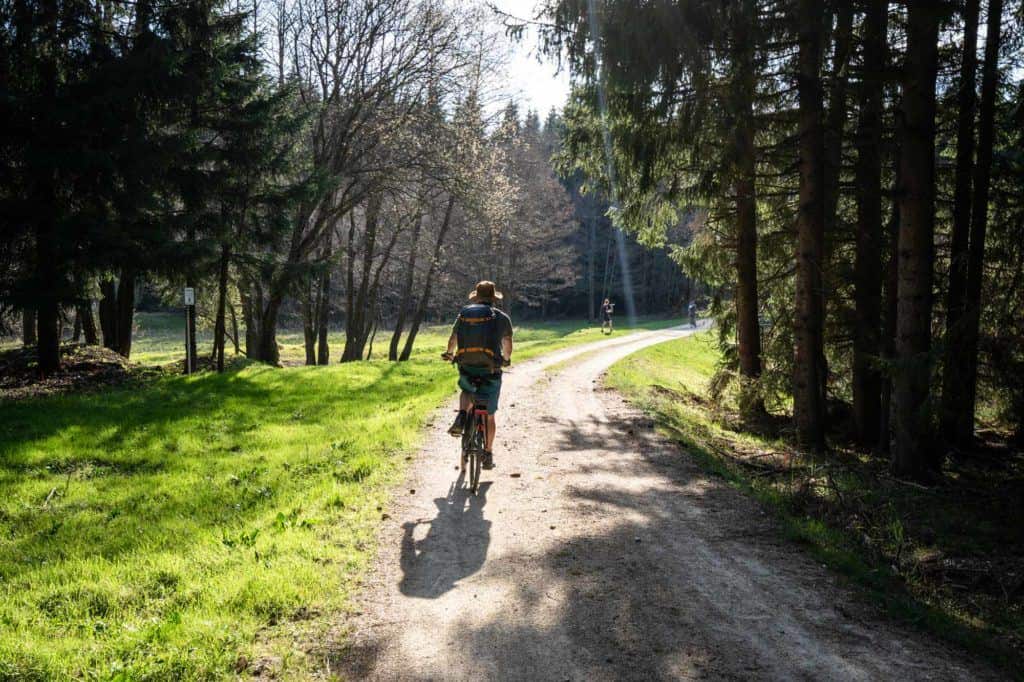
APPS AND TECHNOLOGY
Here are a few apps we think you should definitely acquaint yourself with prior to your travels:
- XE Currency – Transfer, monitor and calculate currency as the need arises. This app may not be totally necessary as you are typically tied into rates the banks charge for services. But it is handy to have around.
- Express VPN – This will protect your sensitive information wherever you travel – not just in Canada. Be sure to have this to keep your online information secure as you travel.
- iOverlander – iOverlander is any Canadian road trip enthusiast’s best friend. Find every resource you need on the road – from free or cheap campgrounds to places to eat or refill RV supplies if travelling by campervan or RV.
- Gas Buddy – This app will help you find the most up-to-date fuel locations and prices when driving nearly anywhere in Canada. This is especially important to have when covering large distances or across remote parts of Canada.
BEST THINGS TO EAT IN CANADA
Some Canadian specialities are worldwide famous. While some require some research to discover!
Here are some of the most popular dishes in Canada:
- Poutine : Probably the most well-known Canadian staple consisting of french fries and cheese curds topped with light-brown gravy
- Lobster Rolls : a sandwich made with lobster meat, lemon, and seasoning best served fresh in Nova Scotia or New Brunswick
- Butter Tarts : crumbly crust filled with a butter, sugar and egg cream
- Nanaimo Bars : a sweet, crispy and crunchy dessert bar with layers of chocolate and custard
- Montreal Smoked Meat : Delicious pastrami or brisket smoked and seasoned in a way particular Montreal
- Bannock : delicious native bread either baked or fried and similar to nan. Bannock is served in a variety of ways and included in almost every meal.
- Yellow Split Pea Soup : soup made with dried peas, veggies and salt pork
- Montreal Bagels : smaller and denser than its famous NY bagel, but usually with the typical everything seasoning
- All-dressed Potato Chips : a name given to some of the fanciest and most interesting flavours you can imagine for potato chips
- Maple Syrup : The maple leaf is iconic of Canada and the syrup from the maple tree is just as famous and delicious and well worth a try as often as possible
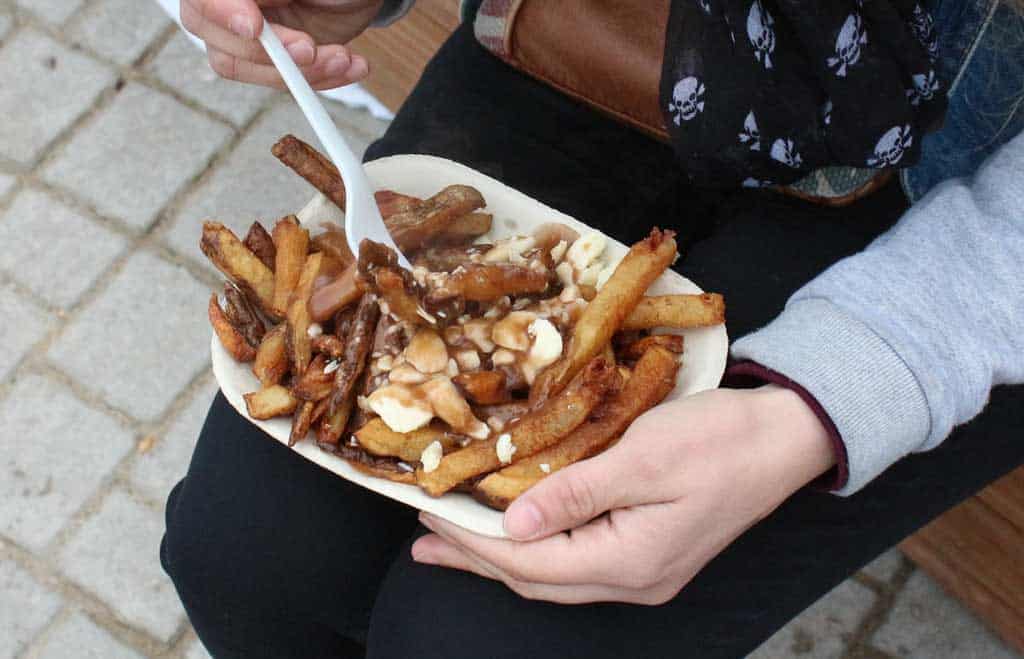
PLACES TO STAY IN CANADA
Canada is not exactly known for cheap accommodation. A highly developed country, rates can be relatively similar to those in Europe and the United States.
However, the prices vary and with advanced planning, you should be able to find a reasonably priced room.
Types of Accommodations
There are over 100 hostels spread out through dozens of cities across Canada. Staying in hostels is not only accepted, it is expected among budget travellers.
You can expect prices and amenities to be comparable to those in Europe. But remember many of the smaller towns and villages will not have hostels as an option.
Canada offers an abundance of hotels. These are typically the best option for travelers in a mid-range budget and are available in most cities and small towns and villages across the country.
Of course, prices range by location and amenities. And if you are travelling during the busier summer season be sure to book in advance.
Another good option for budget accommodation in Canada is Airbnb. In recent years Airbnb has been growing and there are more and more amazing places popping up in Canada to stay for very affordable prices every day.
As is typical in many destinations where Airbnb accommodations are available, you’ll likely find great value and a little more personal space with an Airbnb stay.
CANADA TRAVEL TIPS
Travel to Canada is more or less the same as travel to any country. But there are some subtle tips and tricks that will help make your visit safe, pleasant and more affordable.
GENERAL CANADA TRAVEL TIPS
While there are many basic travel tips we suggest you use when travelling to Canada, there are also plenty of Canada-specific tips that will make your visit the best it can be.
Here are a few we recommend you consider as you plan your trip to visit Canada:
- Pack (and dress) according to the weather. Depending on where and when you travel to Canada the weather can catch you off guard. From extreme heat to mind-boggling cold and everything in between, be sure to pack and wear what will keep you comfortable and safe.
- Have travel insurance. Canada has a fantastic health care system. But having travel insurance is always the best way to protect yourself financially from any mishaps on the road. Not sure you need it? Read this post .
- Be aware (and warned) of wildlife. Bear and moose look cute in pictures and videos. But they can be deadly in person. Canada abounds in wildlife so be mindful when you are out exploring.
- Know the emergency number. 911 is the same call for help in Canada as it is in the US. In some areas, 311 is also helpful for non-emergency situations.
- Tax and tipping are not included in meal prices. Know that tax will be added at the end of the meal and, while not required, tipping is customary at the 15-20% level.
- Pick up a little French. Depending on where you travel, it might be necessary. But you’ll find French is almost everywhere on signs and sometimes it will help to make local friends who can assist you in making the most of your trip to Canada.
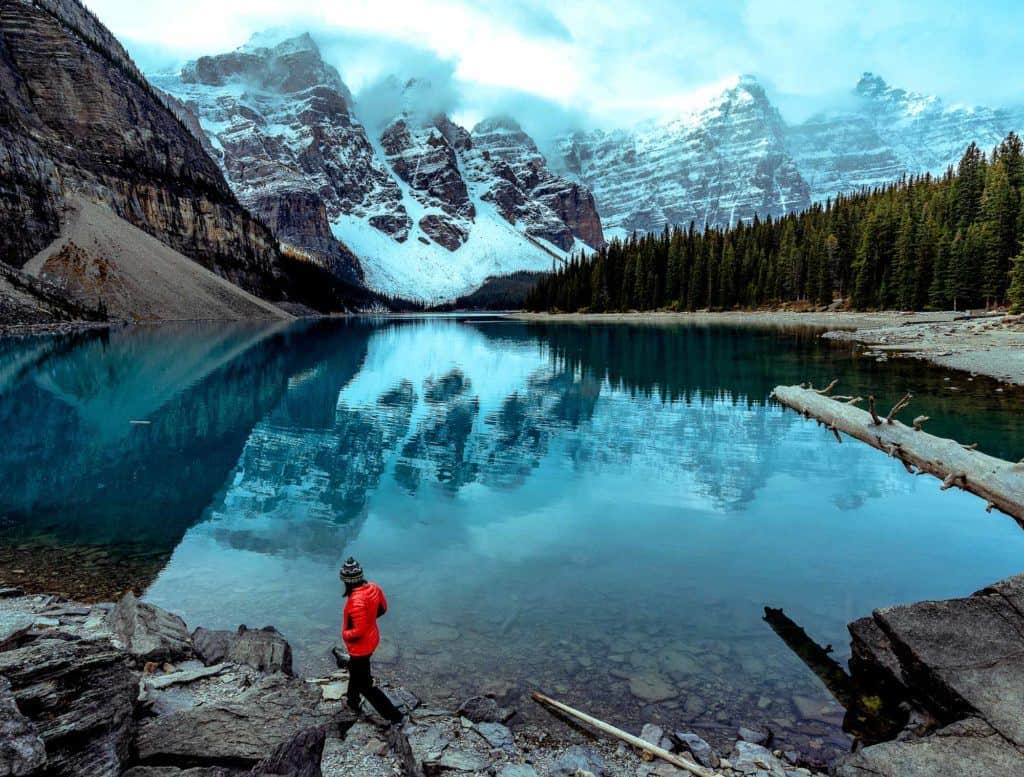
CANADA PACKING LIST
We always travel with a core packing list wherever we go. And when it comes to Canada, many factors will affect what else you need to bring along with you.
Check out our travel essentials and be sure to add any of the other additional items listed below.
Important Note! Before you book any international trip, we honestly recommend getting travel insurance. You never know when things will go wrong, and medical bills can add up quickly if you get sick or injure yourself overseas.
Our personal recommendation based on our own experience is World Nomads.
STAYING SAFE IN CANADA
Canada is a very safe country to visit. It has a very low crime rate and Canadian people are known for their hospitality and seem to always be willing to help someone in need.
Violent crime is basically non-existent in popular tourist spots.
Just like anywhere else in the world, there are some areas in big cities should be avoided. Ask the locals about those neighbourhoods so you can enjoy your trip in peace.
Also, take care of your personal belongings, since tourists are often victims of petty thefts.
Canada is also one of the safest countries for female travellers.
You shouldn’t have any problems if you’re travelling solo. Just keep in mind the same general safety tips you would use anywhere else in the world.
If you’re visiting the Canadian wilderness, watch out for the wild animals.
Every year tourists are attacked by bears, moose and bison. But this is usually due to not respecting the space of the animals and approaching too close to them.
Please mind the wildlife when you see it!
Your best option is to explore and area with someone familiar with it. But if that’s not possible, just be careful and study your maps, have bear spray, whistles and bells and know any regional laws or warnings when it comes to wildlife.
Check out our best travel tips to help you navigate around safely.
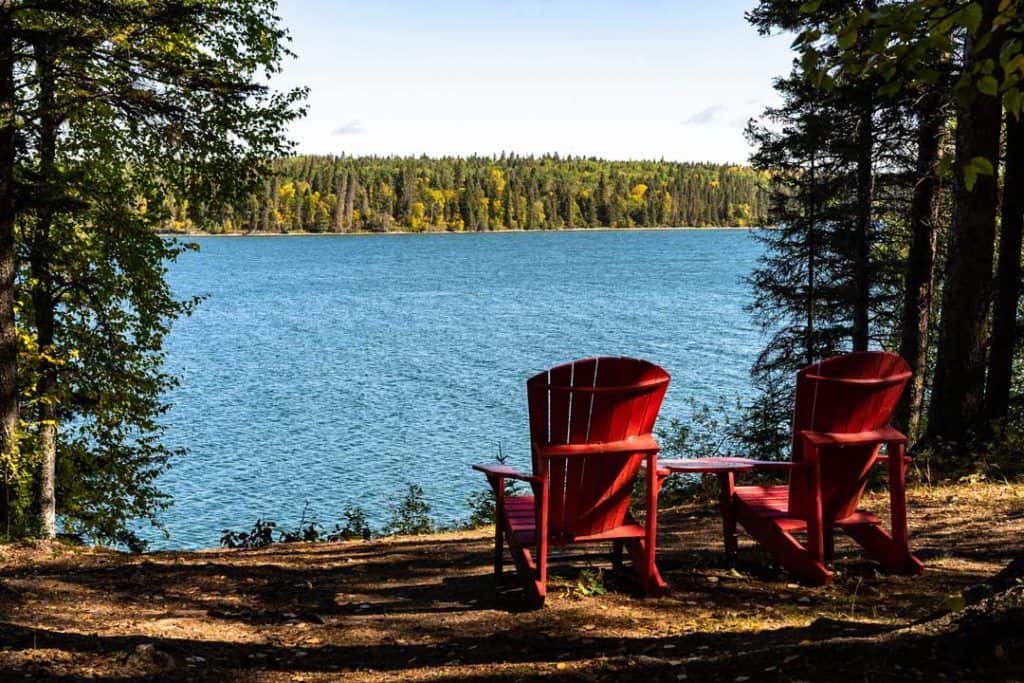
STAYING CONNECTED IN CANADA
Canada is a developed nation and staying connected while travelling in Canada is not very difficult. Of course, there are more remote places you can travel where cellular service will be limited.
And if you drive across the country you’ll experience long stretches of highway where you may have hit-or-miss cellular service.
In general, you can expect to connect to WiFi in a few ways for little to no cost. But we feel like your money will go a lot further if you consider a few other options.
Purchase a SIM Card
Purchasing a SIM card is one of the best ways to access local wireless networks in most countries.
In Canada, you can purchase a SIM card in any of the country’s 3 major carrier stores and at convenience stores and kiosks in major cities. Apply funds for prepaid service and purchase data as you need.
Then throw up a hot spot from your mobile device if you’d like to get online with your computer or tablet.
Rent a Portable WiFi Device
Portable WiFi devices are also readily available across Canada. Roam Mobile, WiFi Cube and MyWebspot Mi-Fi are just a few of the handful of options to look into if you don’t have a qualifying portable WiFi device of your own.
Access Free WiFI
Of course, the easiest and cheapest option to stay connected in Canada is to access free WiFi at a variety of places across the country.
Most hotels, hostels and Airbnb accommodations offer free WiFi.
And if you are out and about you can expect fast food and coffee restaurants such as Tim Hortons, McDonald’s and Starbucks to provide free WiFi as well.
BE A RESPONSIBLE TRAVELER IN CANADA
As is the case whenever you choose to visit and interact with people and places in a foreign land, Canada offers you the opportunity to be responsible in your journey.
Here are a few things to consider as you plan to travel to Canada:
- Leave the natural environment better than you found it. Pretty standard stuff here: pack out your trash, stick to the trails, pick up after yourself.
- Leave wild animals alone. Canada is full of wildlife encounters sure to change your life. But don’t touch, feed or otherwise harass wildlife.
- Be your own transportation as often as possible. Adding a bit of walking or biking to your travel plans reduces the impact of taking vehicles that contribute negatively to the environment.
- Support locals as often as possible. Sure the bigger cities will be full of big brands and mega shopping centres. But as you wander into more remote parts of the Great White North be sure to support smaller, independent businesses as often as possible – including merchants and tour operators.
BOOKS TO READ ABOUT CANADA
Maybe you already know everything about Canada. Chances are you don’t!
But even if you are well-read, here are a few suggestions that might be worth your time while you’re on the plane to Canada.
Canada (Mike Meyers) – Yes, Mike Meyers the comedian and actor has written a book that shows his take on his homeland from his hilarious, if not entirely quirky, perspective.
Alone Against the North (Adam Shoalt) – In a wild adventure that crowned him the “Canada’s Indiana Jones,” Shoalt embarks to explore the Again River in a way that shows that there are still parts of the world unexplored.
Why I Hate Canadians (Will Ferguson) – A humorous, satirical account of Canadian culture and history that sets out to show that opinions on Canada are best expressed through personal experience.
An Inconvenient Indian (Thomas King) – A serious, albeit darkly humorous, look at the Native American – White relationship that has taken place in Canada and throughout North America in search for ways for the collective culture to move forward in meaningful ways.
Read Our Canada Posts
Is dog sledding cruel the truth about dog mushing tours, the perfect banff itinerary you can’t miss (2024 guide), 25 awesome things to do in banff, canada, the ultimate guide to yoho national park in canada, the golden circle route – an epic yukon road trip itinerary, 17 awesome things to do in dawson city, yukon, the perfect 3 days in vancouver itinerary (2024 guide), 7 awesome day trips from montreal (2024 guide), the perfect 3 days in montreal itinerary, the 10 best day trips from toronto, 21 awesome things to do in toronto, canada [2024 guide], 11 fun things to do in hamilton, ontario.

6 Epic Canada Itineraries for The Perfect Adventure
Explore Canada – the Great White North – with these inspirational Canada travel itineraries. Whether it’s an adventure in the Rockies or a deep-dive into Quebec, plan your trip with this epic guide.
When I’m daydreaming about Canada , the wild outdoor landscape and warm locals are often the first two things I think of. In fact, it’s why I’ve been back a fair amount over the past few years.
Because it’s one of the largest countries in the world (the second by land mass), there are a lot of ways you can plan a trip to this exciting stretch of oceanfront, mountains and valleys at the top of North America . Bring your appetite and sense of adventure because no matter where you go – you’ll find surprises around every trail and cobbled street.
But how can you plan the perfect Canada itinerary? Get your suitcase packed – we’re going to take a jaunt through the best Canadian vacations – all mapped out for your next holiday.
Canada Itineraries
Best of canada in one month itinerary.
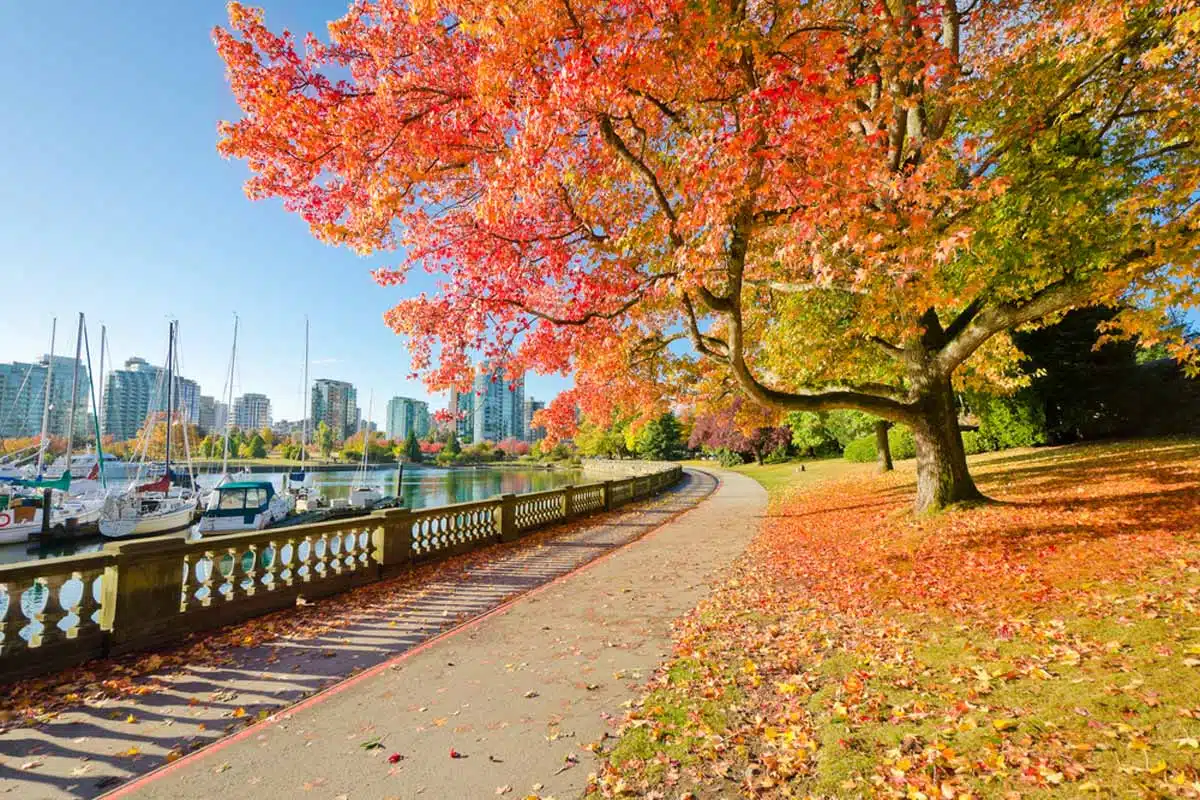
Ok, so seeing all of the best of Canada in a month is no easy feat. But I’m confident this 30-day Canada itinerary will show you enough of the country to scratch that itch for adventure in the north.
This Canada itinerary moves from the West Coast to the East Coast, stopping by the most famous cities, cultural landmarks, and national parks along the way. It’s a whirlwind tour that covers a lot of ground (around 3,000 miles), but you’ll have plenty of time to explore and learn more about each location over the course of a full month.
Route Summary
Vancouver >> Calgary >> Banff and Lake Louise >> Jasper >> Toronto >> Montreal >> Old Quebec
Distance: 3,000 miles (4,800 km)
Length of Trip: 1 Month
How to Do It: Planes and Cars
Highlights of the Trip
Walking around vancouver.
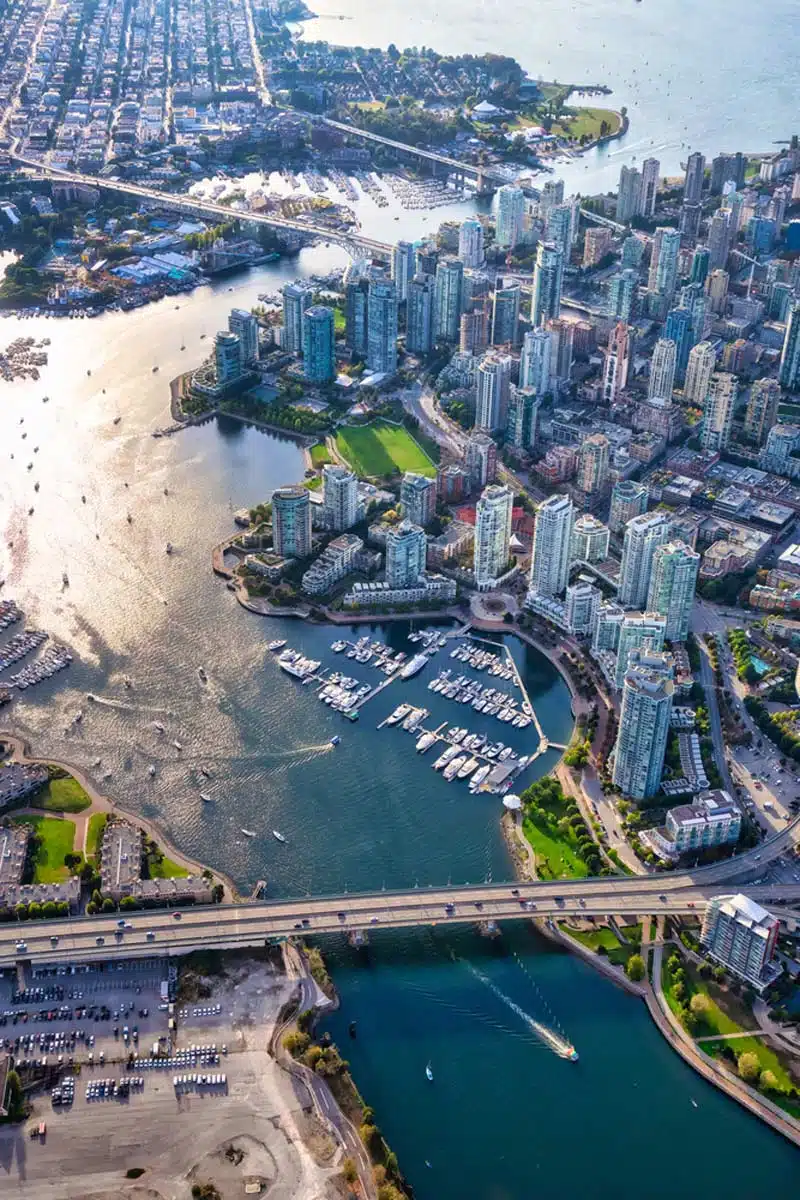
Set aside time to explore, Vancouver is an excellent walking city. Visit Stanley Park and VanDusen Botanical Garden to see some of the most beautiful green spaces in the city. Schedule a visit to Capilano Suspension Bridge Park to walk the long, towering bridge in the rainforest.
Suggested Stay: Level Downtown – Howe
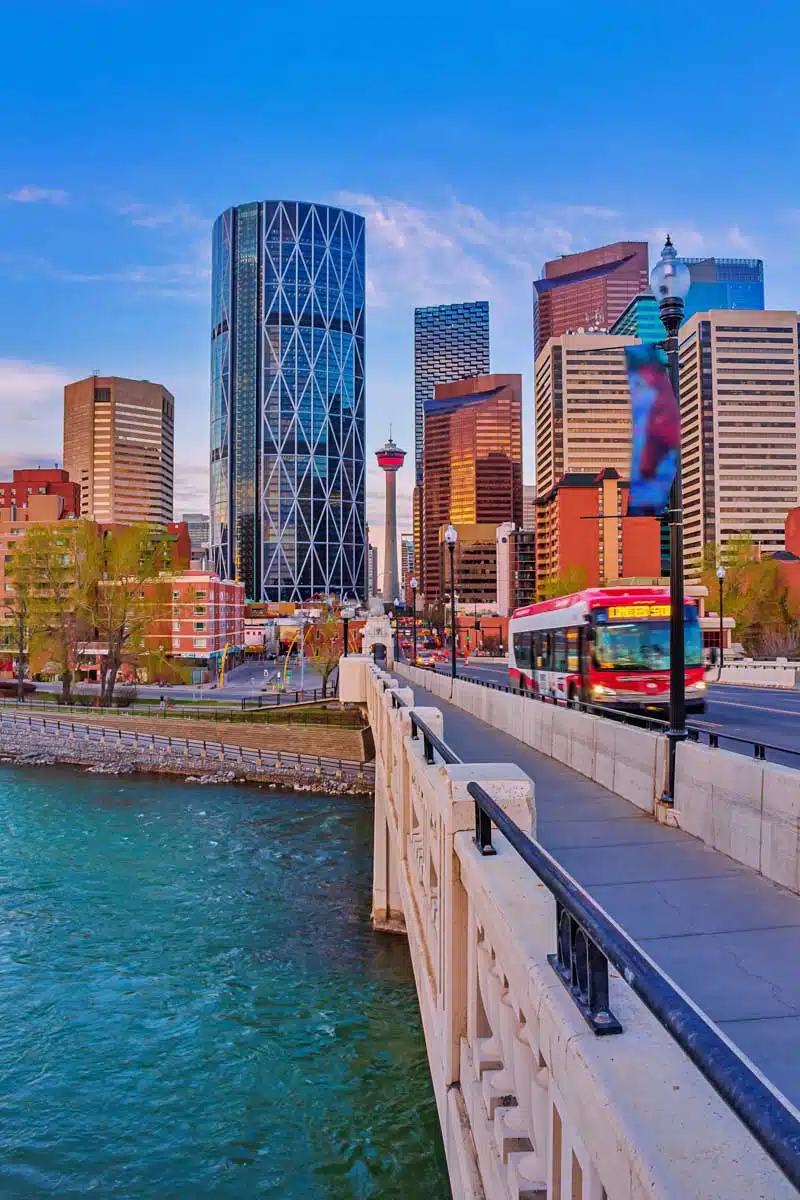
Calgary is a great home base to explore the Rocky Mountain National Parks. But there’s also plenty to do within city limits. Make time to try a Caesar cocktail (a bloody mary made with clamato) at the Westin – where the legendary Canadian cocktail was born. Then spend an afternoon chilling by Bow River at Prince’s Island Park or head inside the atmospheric Wednesday Room and order a plate of “dirty fries,” which is not your mother’s plate of poutine.
Suggested Stay: Le Germain Hotel Calgary
Banff & Lake Louise
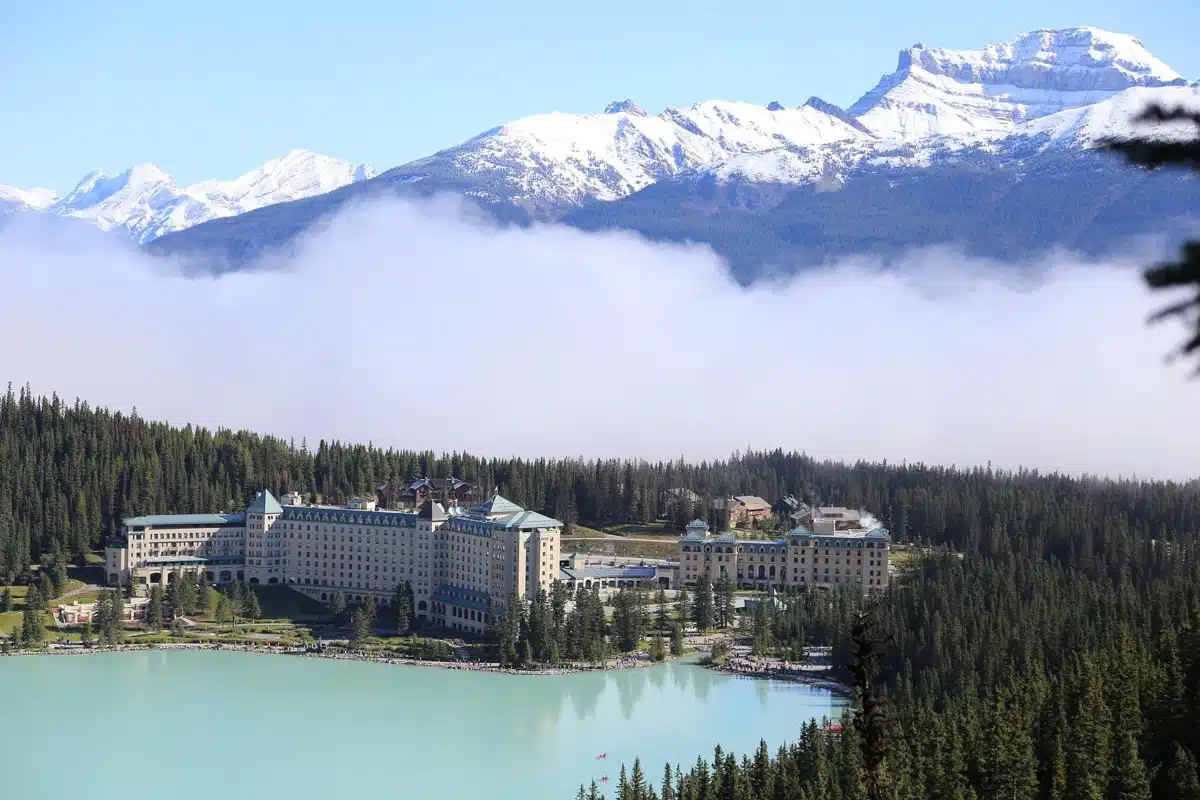
No first trip to Canada is complete without a trip to the Canadian Rocky Mountains. Bring your hiking boots to capture the best views of the unreal blue waters of Lake Louise, the towering peak of Mount Rundle, and glacial trails along the Icefields Parkway in Banff .
Suggested Stay: The Rimrock Resort Hotel
Hiking in Jasper
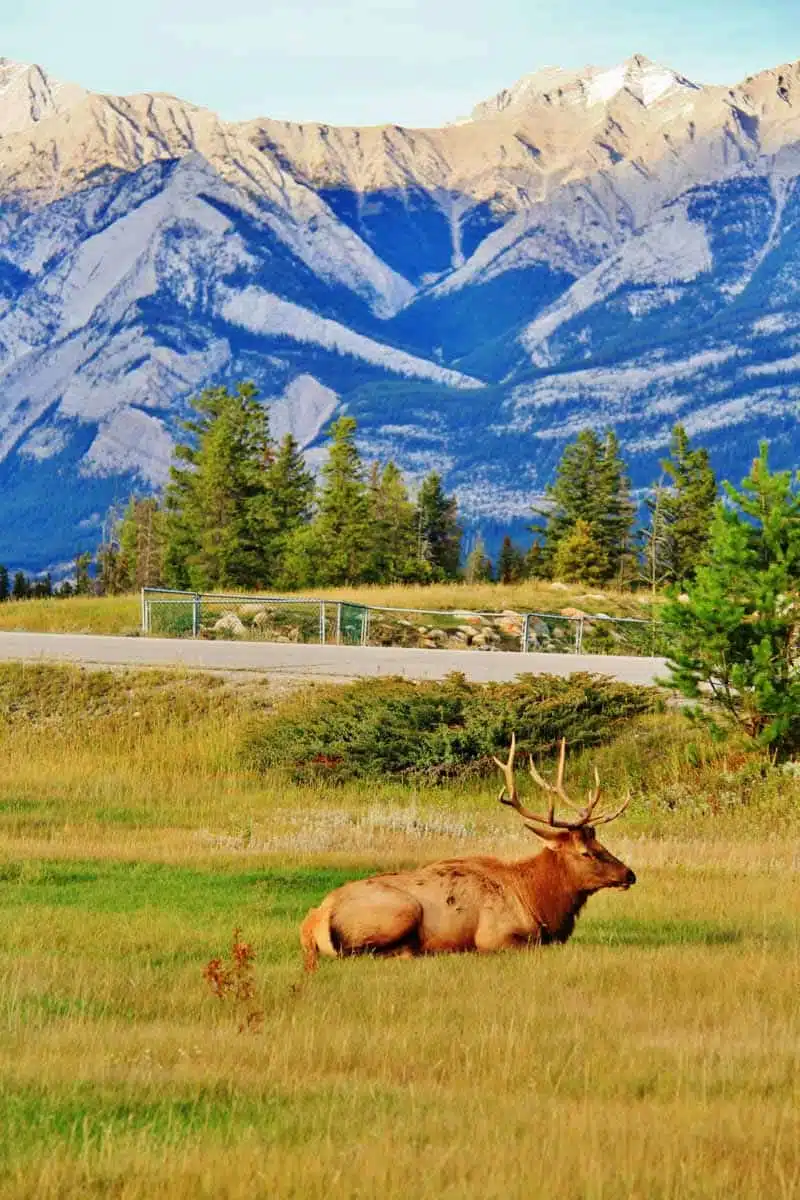
More hiking? Yes. Jasper National Park is the ultimate Canadian Rockies trip, with hikes like the Valley of the Five Lakes perfectly showcasing the beautiful blue waters and rugged mountains. Bring your backpacking gear if you really want to dive into local scenery on epic trails like Tonquin Valley.
Suggested Stay: Fairmont Jasper Park Lodge
Toronto Sightseeing
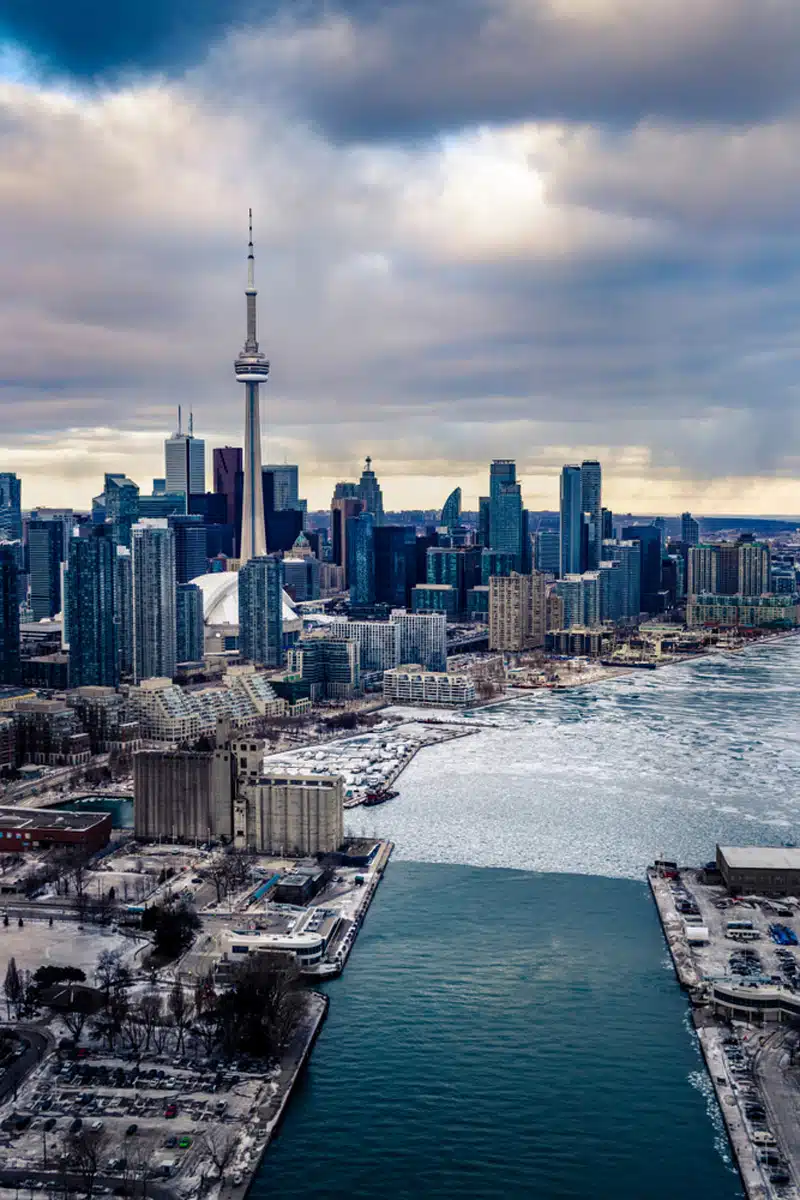
Now that you’ve spent some time in the great outdoors, head to Canada’s largest city, Toronto, where you can explore the bustling St. Lawrence Market before exploring the vast art collection at the Royal Ontario Museum and capturing panoramic views at the CN Tower.
Suggested Stay: Ace Hotel Toronto
Shopping in Montreal
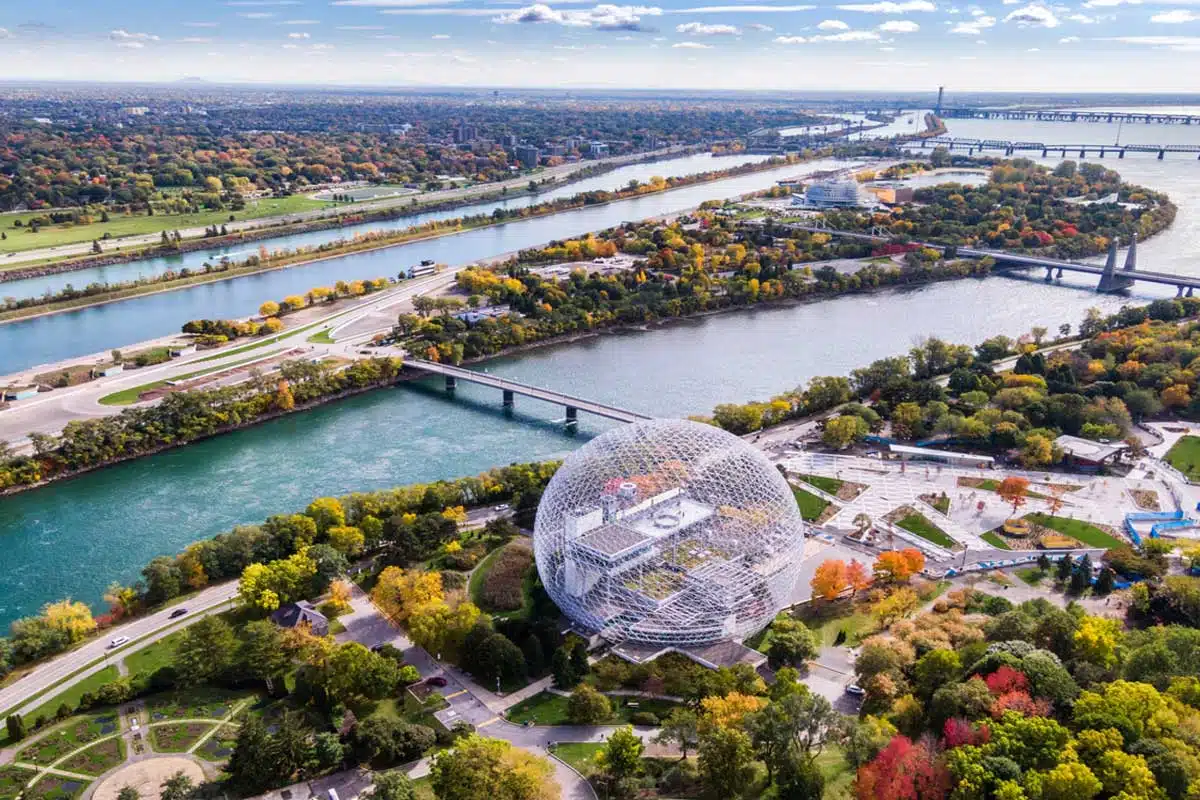
Grab a hearty breakfast at St-Viateur Bagel before vinyl hunting at Cheap Thrills and exploring an ocean of denim at Jeans, Jeans, Jeans . Check out the incredible Marché de Noël Signé Local Christmas Market if you’re there in December.
Suggested Stay: Le Mount Stephen
Architecture in Old Quebec
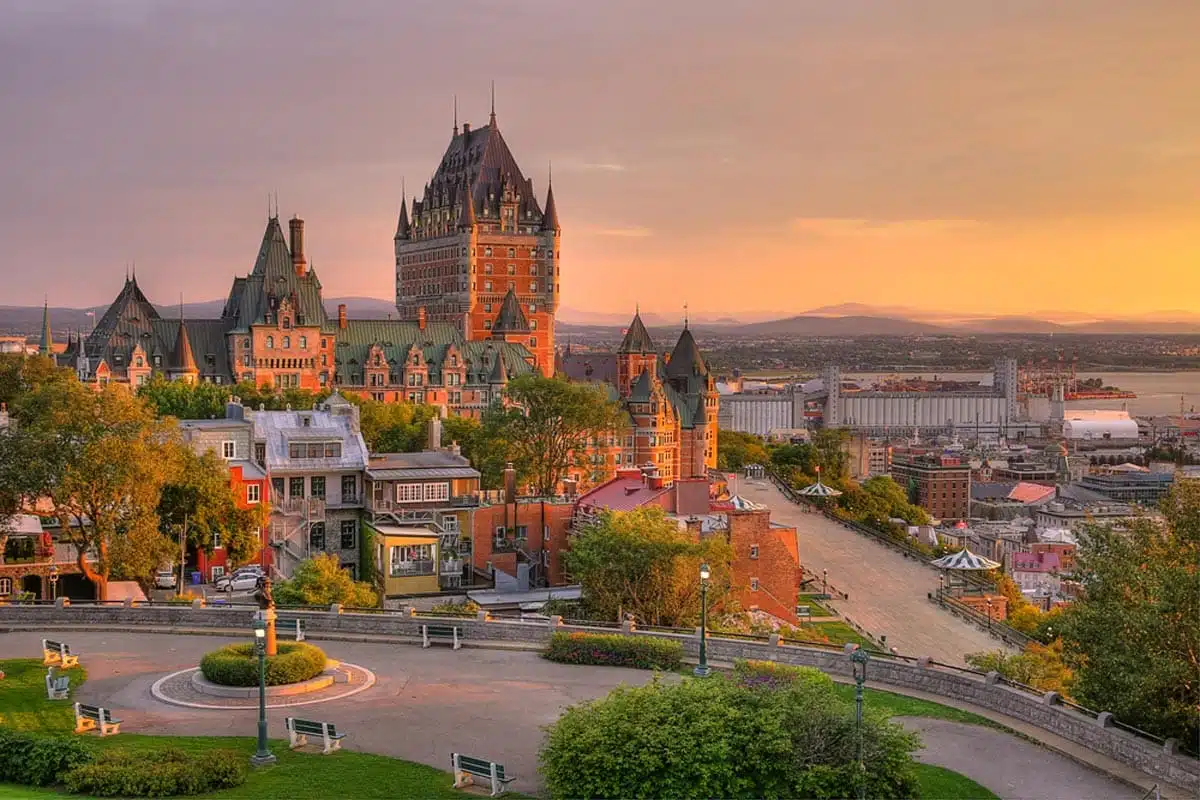
From the Neoclassical La Citadelle de Québec to the Second Empire style of L’Hôtel du Parlement, you’ll see some of the most impressive French colonial-style buildings anywhere in the world.
Suggested Stay: Auberge du Trésor
Canadian Rockies Itinerary
Want the perfect 10-day Canada itinerary to see the fabled Rocky Mountain parks ? Head to Alberta, where you can see some of the most insanely beautiful landscapes anywhere in Canada.
If you’re dreaming up a colour palate of the bluest of blue waters, pine-laden mountainsides, and endless wildlife as far as the eye can see – you’re spot on.
Set aside at least a week for this one, but we think a Canada itinerary of 10 days is necessary to check out the outdoor adventure and luxury resorts in this iconic stretch of Wilderness in the north.
Canmore >> Banff >> Jasper >> Yoho >> Kootenay
Distance: 410 miles (660 km)
Length of Trip: 10 Days
How to Do It: Car
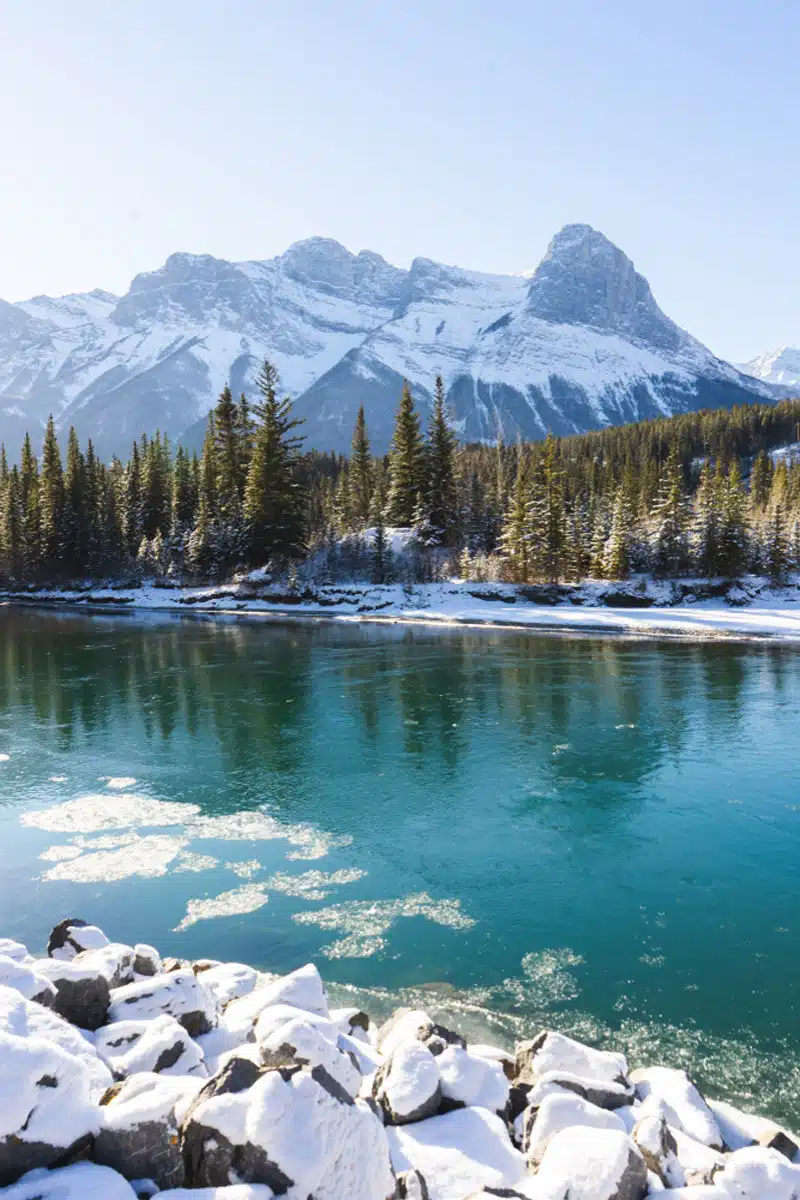
Looking for an underrated Rocky Mountain park? Hit up Canmore for some of the most epic hiking trails and scenic views anywhere in the Rockies. Enjoy a leisurely walk at Quarry Lake, or tackle Mount Yamnuska to take Canmore Peak head-on.
Suggested Stay: The Georgetown Inn
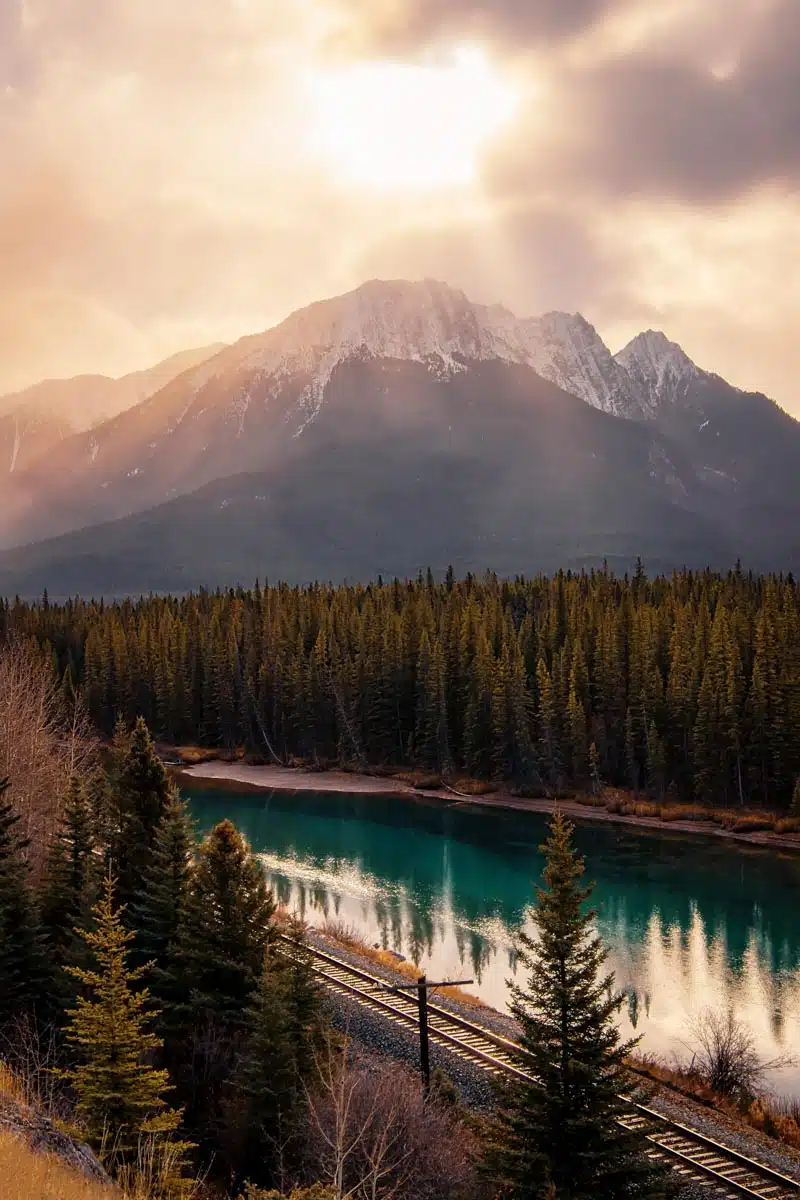
Spend some time in Banff Town shopping, dining at Park Distillery , or riding the Banff Gondola before exploring one of the most scenic parks in the country. Get ready for sights like the legendary Lake Louise and the lush valley overlooking the Rockies at Cascade Amphitheater.
Suggested Stay: Fairmont Banff Springs
Icefields Parkway
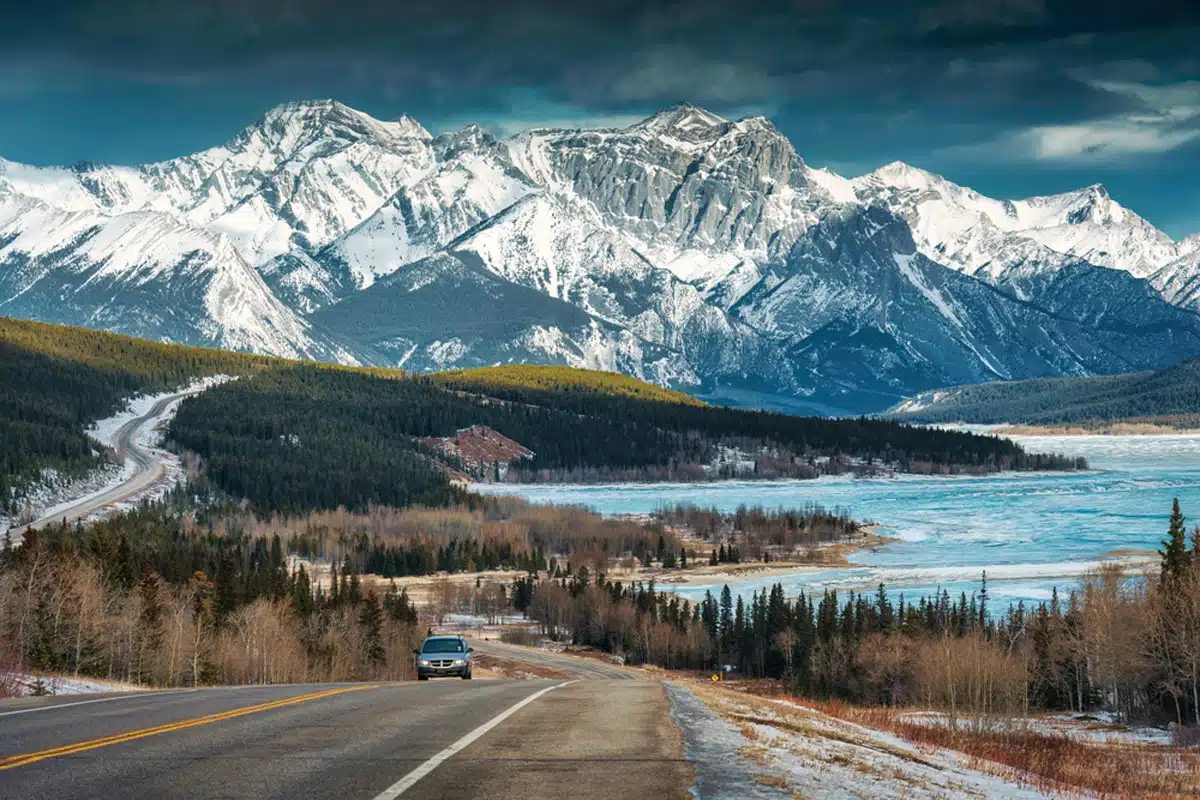
Drive the iconic Icefields Parkway to Jasper, being sure to stop at the Glacier Skywalk on the way. Break up your drive with an Athabasca Glacier Tour or a shorter hike at Mistaya Canyon, where you’ll take in the beauty of the Canadian Rockies waterfalls and mountains.
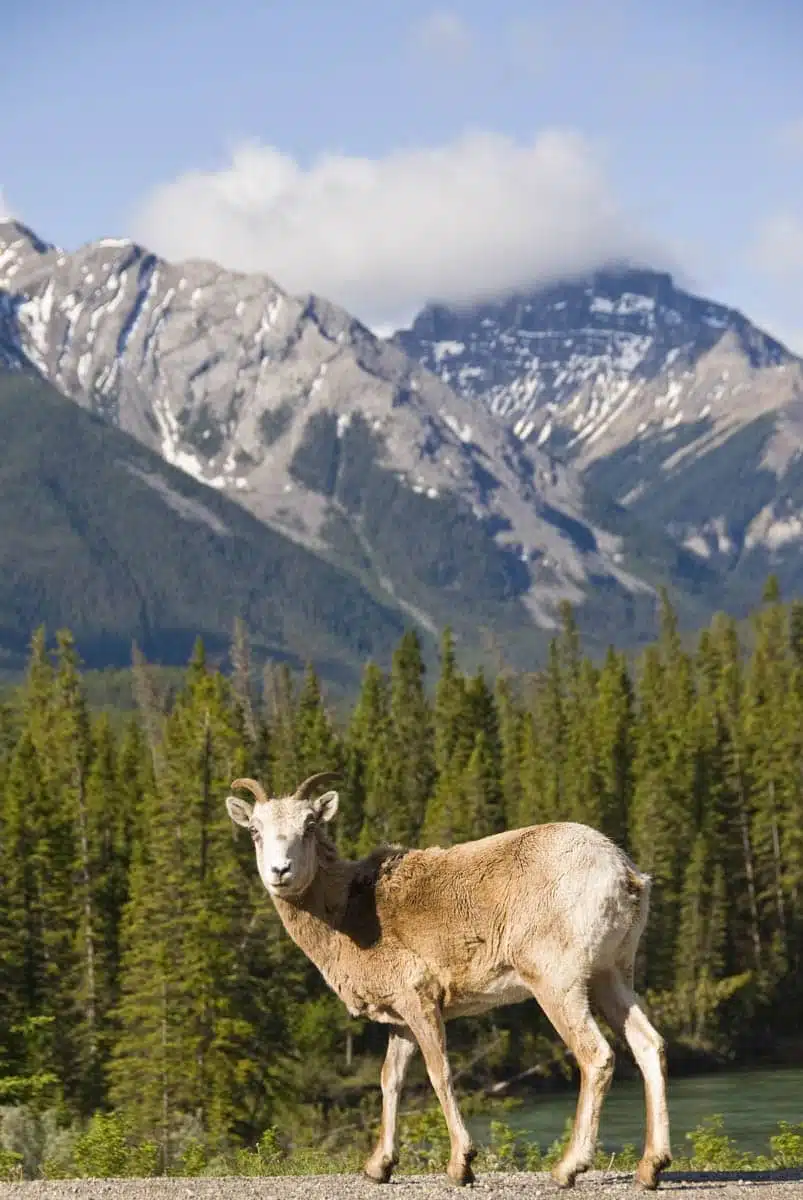
Explore the hanging glaciers at Edith Cavell Meadows and scenic mountain waters at the Valley of the Five Lakes or Pyramid Lake before shopping in Jasper Town and grabbing an authentic Canadian dinner at Maligne Canyon Wilderness Kitchen .
Suggested Stay: Pyramid Lake Resort
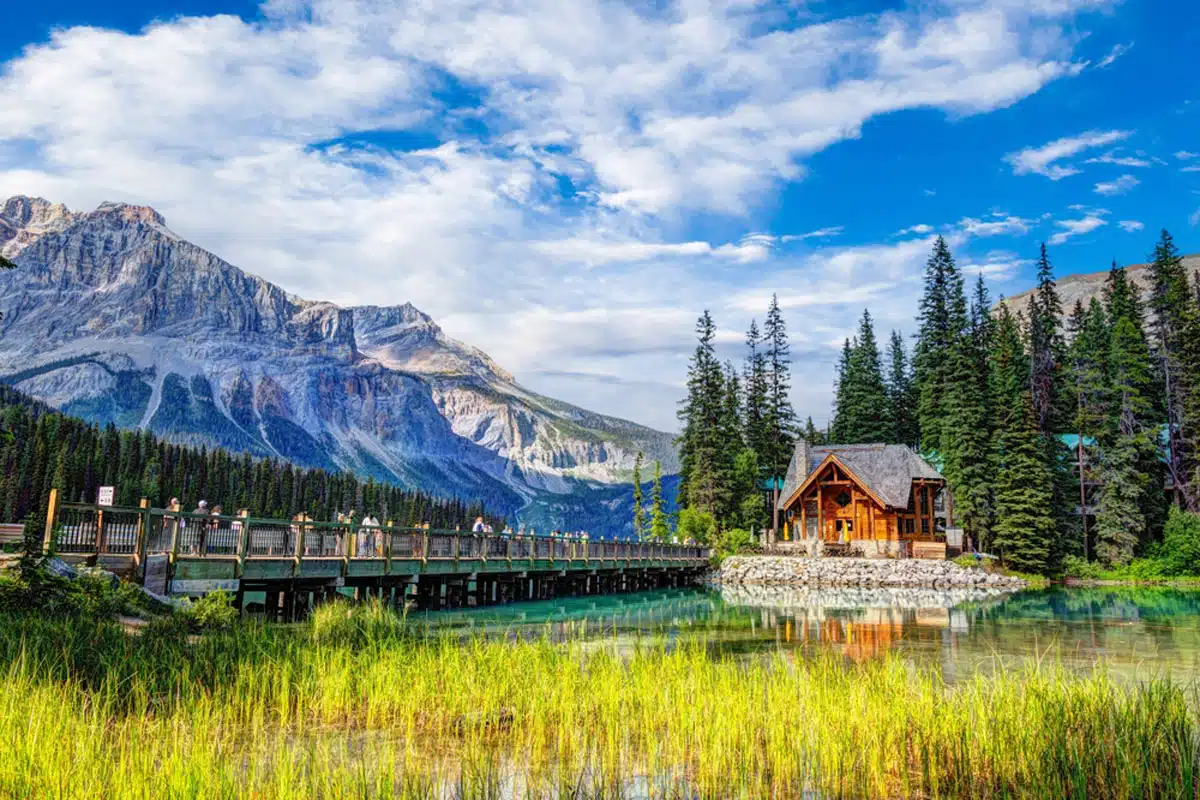
Visit one of the tallest waterfalls in Canada at Takakkaw Falls, see the surreal blue-green waters at Emerald Lake and Lake O’Hara, and check out the stunning Natural Bridge over the Kicking Horse River.
Suggested Stay: Canadian Rockies Inn
Kootenay National Park
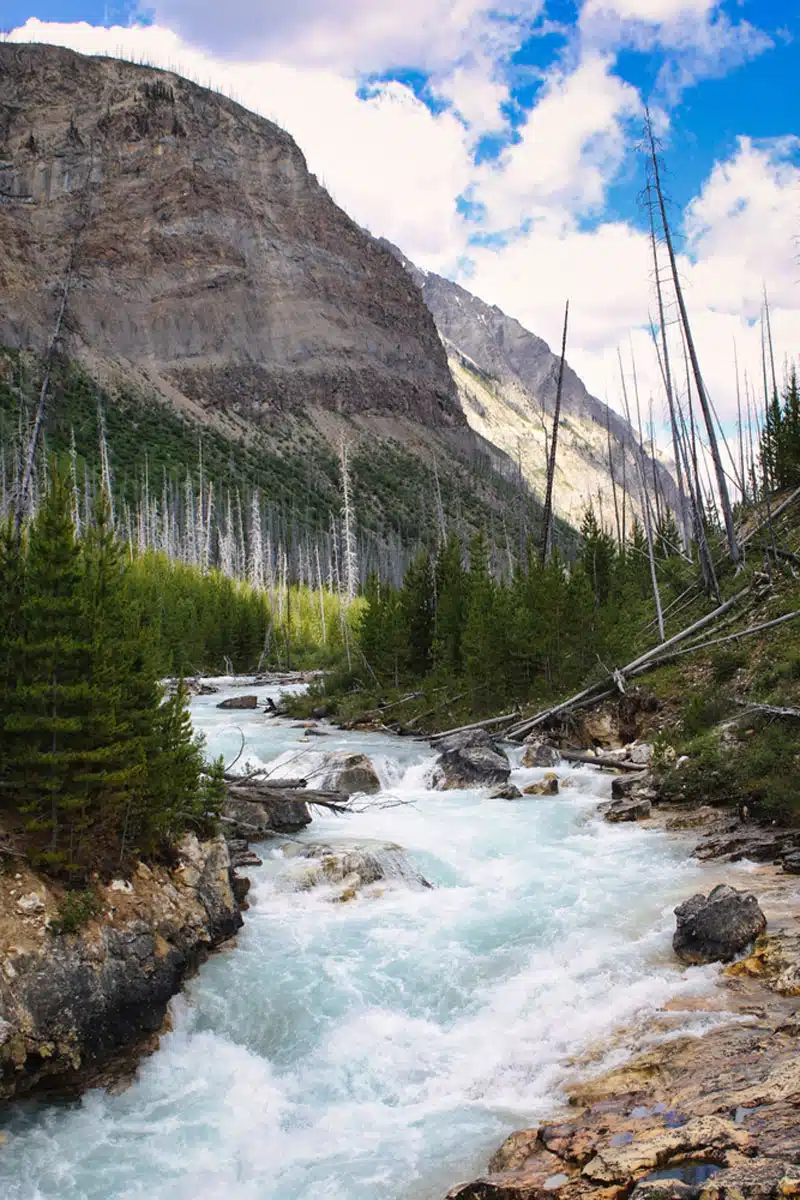
Explore the wild side of the Rockies with one of the lesser-visited parks in the area. You may see grizzly bears, bighorn sheep, and wildcats along the many hiking trails at this underrated stop on your Canada vacation itinerary.
Suggested Stay: Kootenay Lakeview Resort BW Signature Collection
Plan the Ultimate Canadian Rockies Adventure with this Step by Step Itinerary
Niagara Falls to Algonquin Provincial Park
Another 10-day trip to Canada itinerary starts at the iconic Niagara Falls before exploring two of Canada’s most iconic cities. I love this Canada itinerary because it has the perfect mix of rugged nature and urban splendour, and it also features some of Canada’s most under-the-radar locations. Get ready for vibrant cuisine, breathtaking waterfalls, and luxury accommodations on this fabulous 10-day Canada itinerary.
Niagara Falls >> Toronto >> Ottawa >> Algonquin Provincial Park
Distance: 340 miles (550 km)
How to Do It: Bus, Train, and Car
Niagara Falls
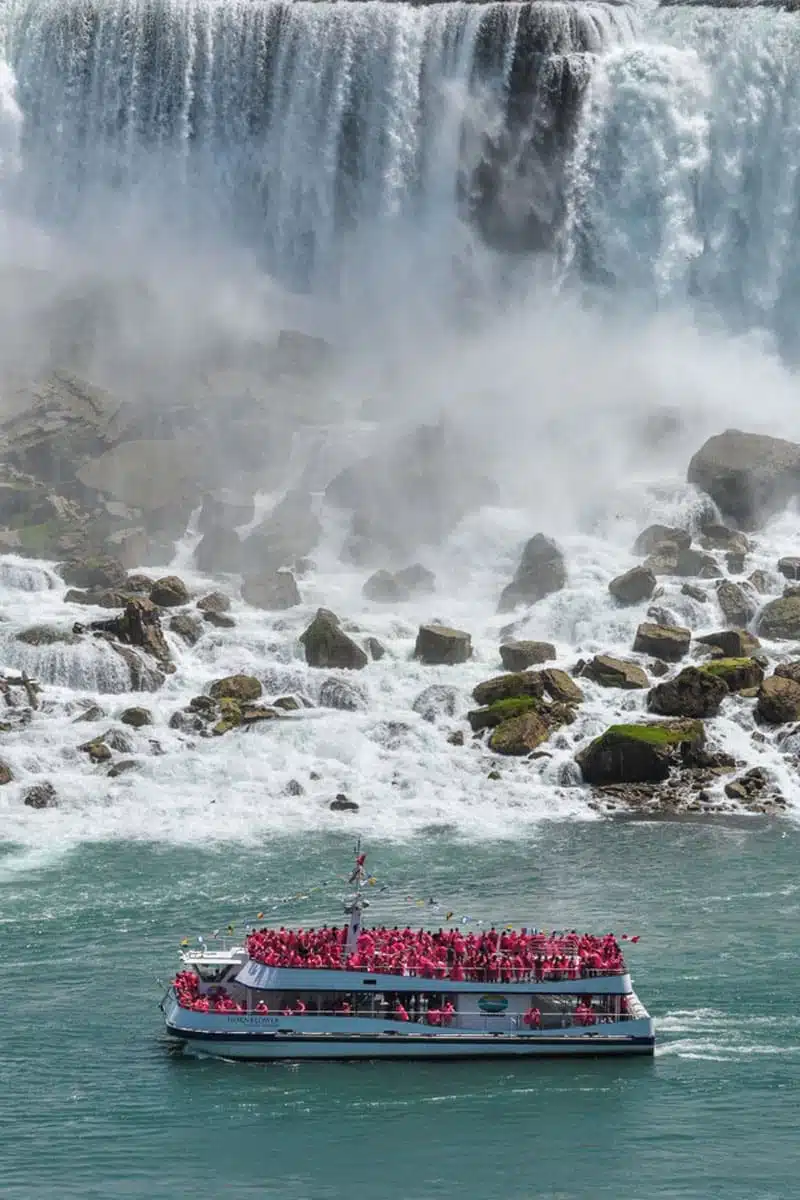
Take one look at Horseshoe Falls, and you’ll be awe-struck by the sheer force behind the falls at one of the most iconic landmarks in Canada. Be sure to see the falls from famous vantage points like the Cave of the Winds, where you can catch great views of Bridal Veil Falls.
Suggested Stay: Hilton Niagara Falls/ Fallsview Hotel and Suites
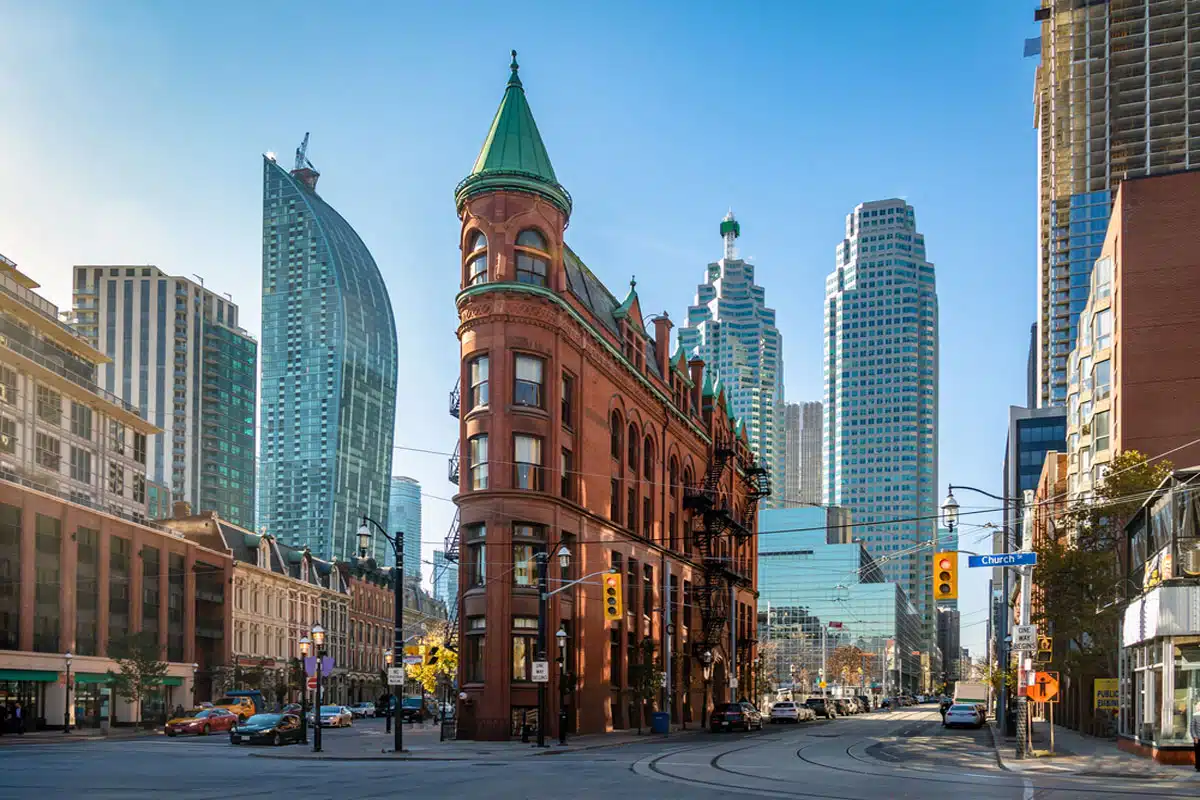
If you’re a city person (raising my hand), you’ll fall in love with Toronto the minute you land in the metropolitan city along Lake Ontario. Checking out the downtown views from the CN Tower or seeing it from a cruise of the Toronto Harbour are must-adds to your Canada itinerary. Also, make time for the incredible museums ( Royal Ontario is the most popular) and try delicious cuisine at restaurants like the chic Byblos Downtown .
Suggested Stay: The Hazelton Hotel
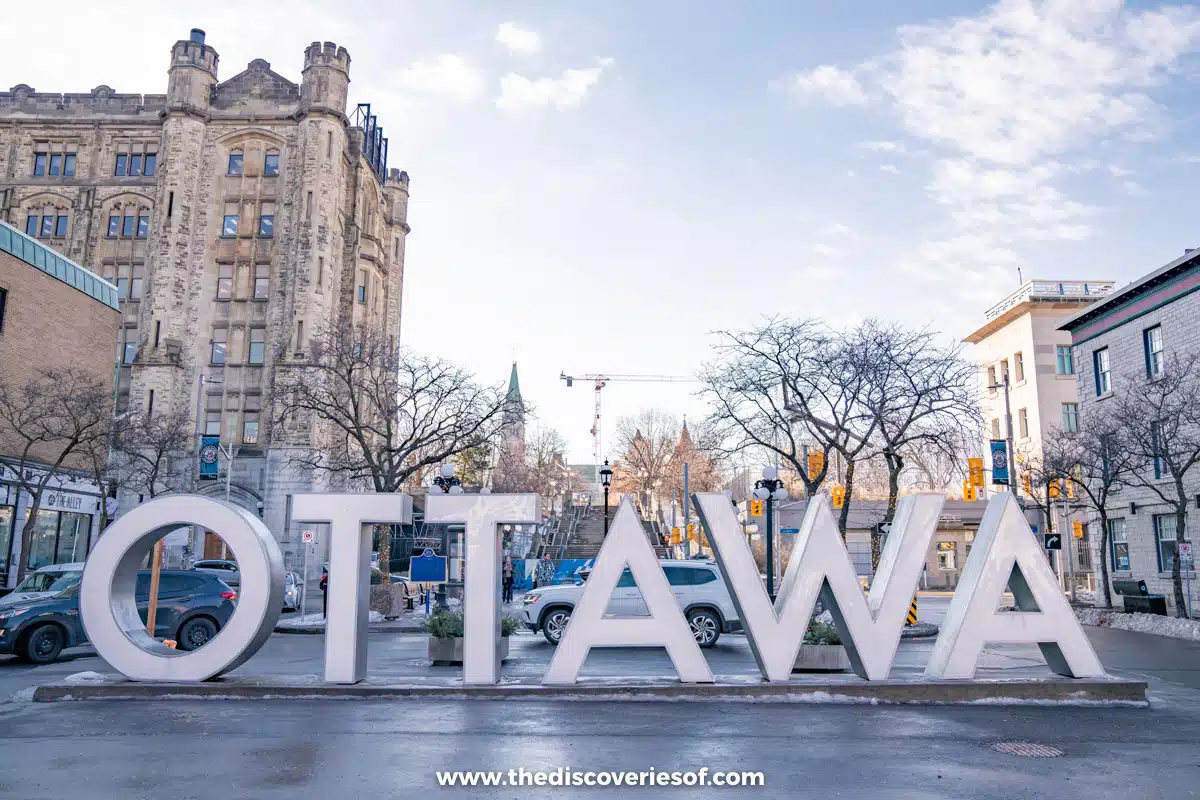
You might not see it on every travel blog, but the best Canada travel itinerary should include Ottawa . Why? The capital of Canada is full of amazing things to do, like the Canadian Museum of Nature and a boat ride (or ice skating) on the Rideau Canal. Don’t miss the Notre Dame Cathedral, which hosts some of the most mesmerising Gothic architecture you’ll ever see.
Suggested Stay: The Metcalfe by Gray Collection
Algonquin Provincial Park
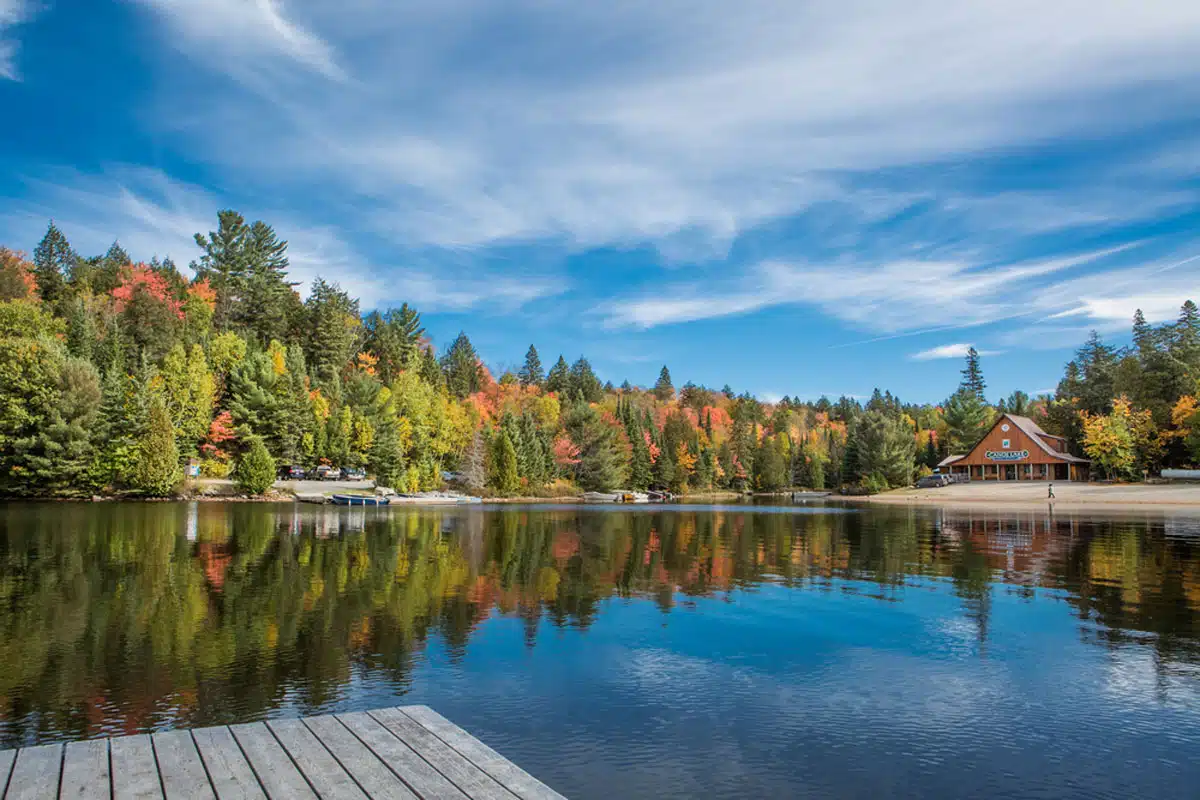
Any Canada road trip itinerary must include some time in nature. It’s non-negotiable, really.But I’ll give you the best outdoor locale you’ve never heard of – Algonquin Provincial Park. Spend 2-3 days exploring the rolling hills, Pinetree-painted river bluffs, and miles of hiking trails in Ontario’s best nature reserve.
Suggested Stay: Killarney Lodge
Quebec Itinerary
Visiting the province of Quebec on your holiday offers you one of the most incredible experiences in North America. A 7-day Canada itinerary including Montreal, Quebec City, and Saguenay-St-Lawrence Marine Park allows you plenty of time to explore the gorgeous French province of Canada. You’ll find cobbled streets, colonial architecture, and beautiful scenery around every corner. End your trip with a scenic train ride to Saguenay-St-Lawrence Marine Park, where you’ll enjoy some of the most impressive whale-watching anywhere.
How long should you spend here? I think a Quebec, Canada itinerary in 7 days is the perfect amount of time to dive into everything this Northeastern Canadian city has to offer.
Downtown Montreal >> Old Montreal >> Quebec City >> Old Quebec >> Saguenay-St-Lawrence Marine Park
Distance: 290 miles (470 km)
Length of Trip: 1 week
How to Do It: Train
Food and Shopping in Montreal
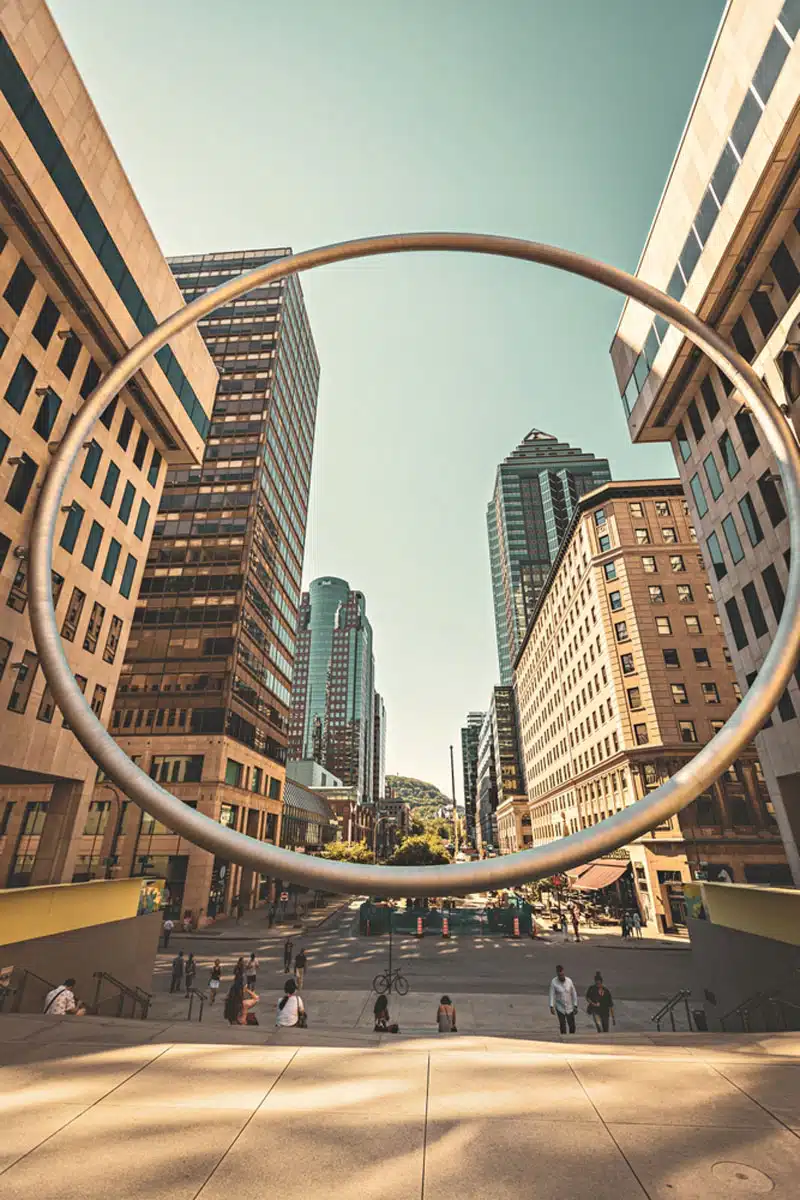
Shopping and dining in Montreal are among the best you’ll find on any Canada travel itinerary. You’ll discover surprising men’s and women’s fashion gems like Boutique Tozzi and near-perfect neighbourhood restaurants like Le Pégase, where you can sample incredible French cuisine on the cheap (and it’s BYOB).
Explore Architecture in Quebec City
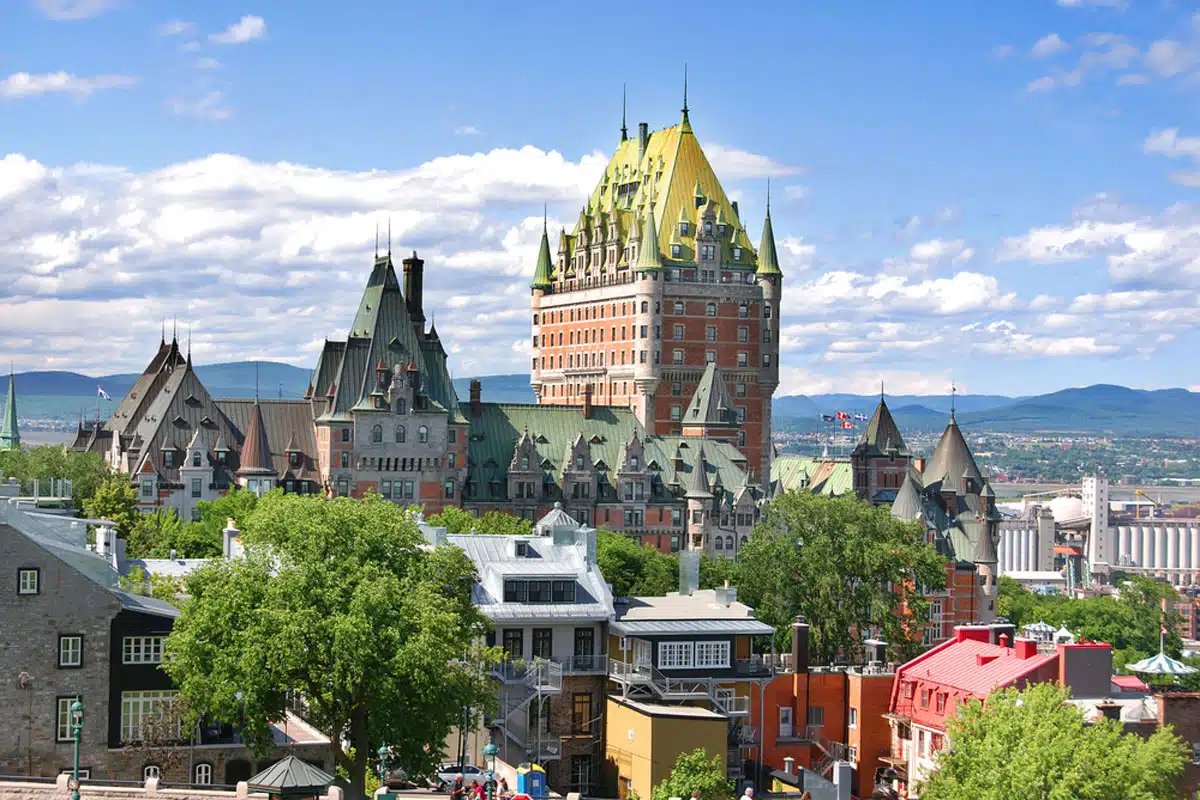
Whether you’re marvelling at the fortress-like walls at Fairmont Le Château Frontenac , the actual fortress of La Citadelle de Québec, or the storybook town centre of Place Royale – Quebec City is easily the most charming historic downtown that you’ll find on your Canada itinerary.
Saguenay-St-Lawrence Marine Park
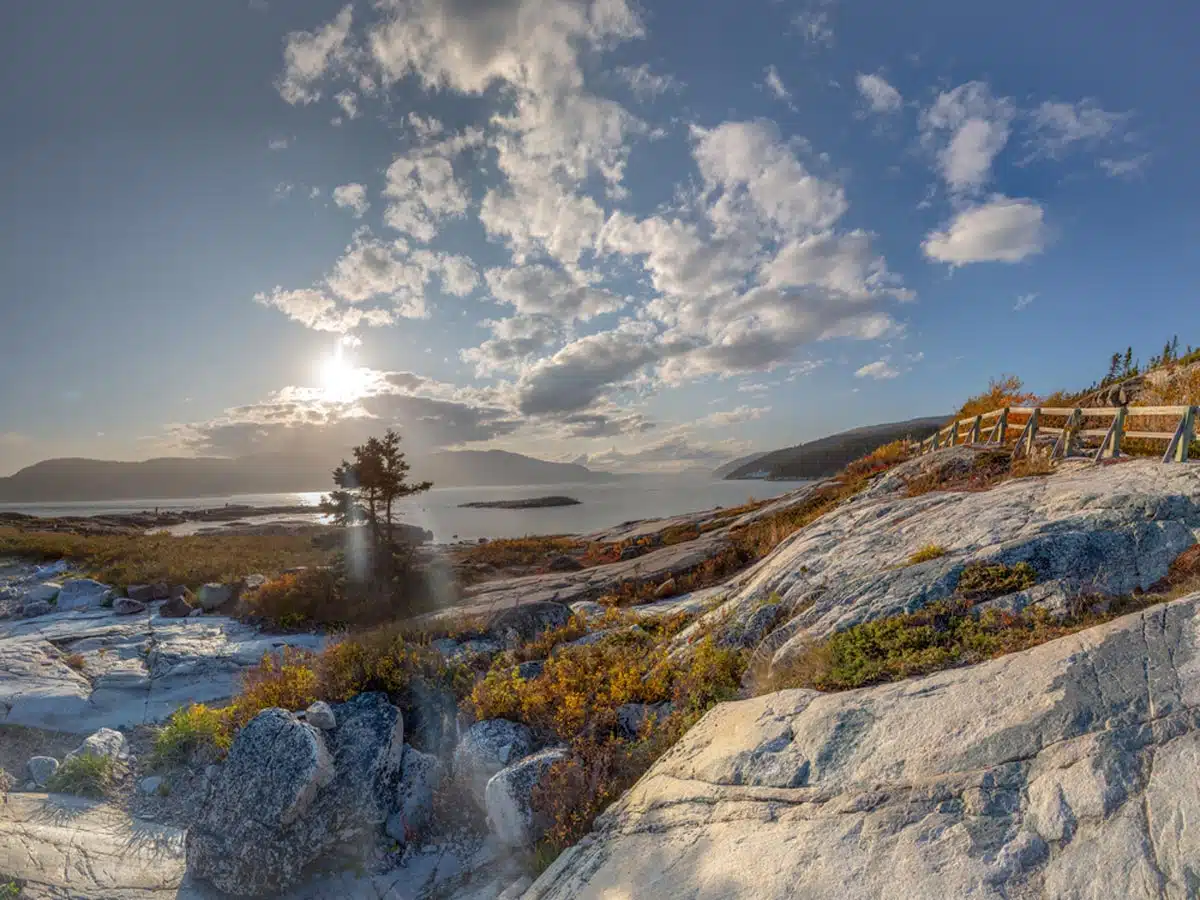
At the intersection of the Saguenay and the Saint Lawrence Rivers, Saguenay-St-Lawrence Marine Park offers some of the best whale-watching in Canada, if not all of North America. Take a guided tour down the Saguenay to see over a dozen whale species along the fjords and river banks of Eastern Canada.
Suggested Stay: Chateau Murdock Gite et Esthétique 1950
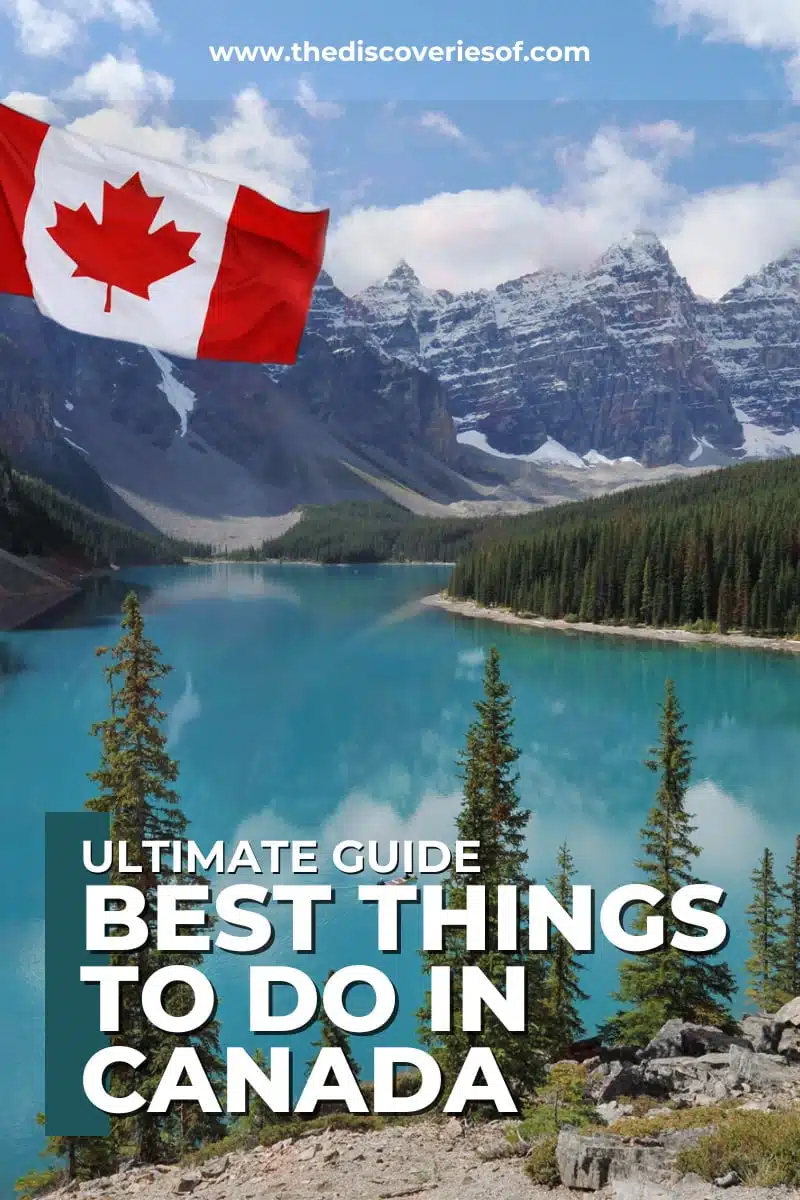
Saskatchewan to Alberta
This is the national park tour you won’t want to miss on a 14-day Canada itinerary. Moving from the idyllic prairies and dark night skies in Saskatchewan to the towering Rocky Mountains and turquoise lakes of Alberta, you’ll see the best of the best nature, wildlife, and stargazing on this sweeping 2 week Canada road trip itinerary. You’ll spend a lot of time on the road, but you’ll discover some of the best of rural and urban Canada on this epic adventure.
Winnipeg >> Moose Mountain Provincial Park >> Grasslands National Park >> Saskatoon >> Edmonton >> Rocky Mountain National Parks
Distance: 1,500 miles (2,500 km)
Length of Trip: 2 weeks
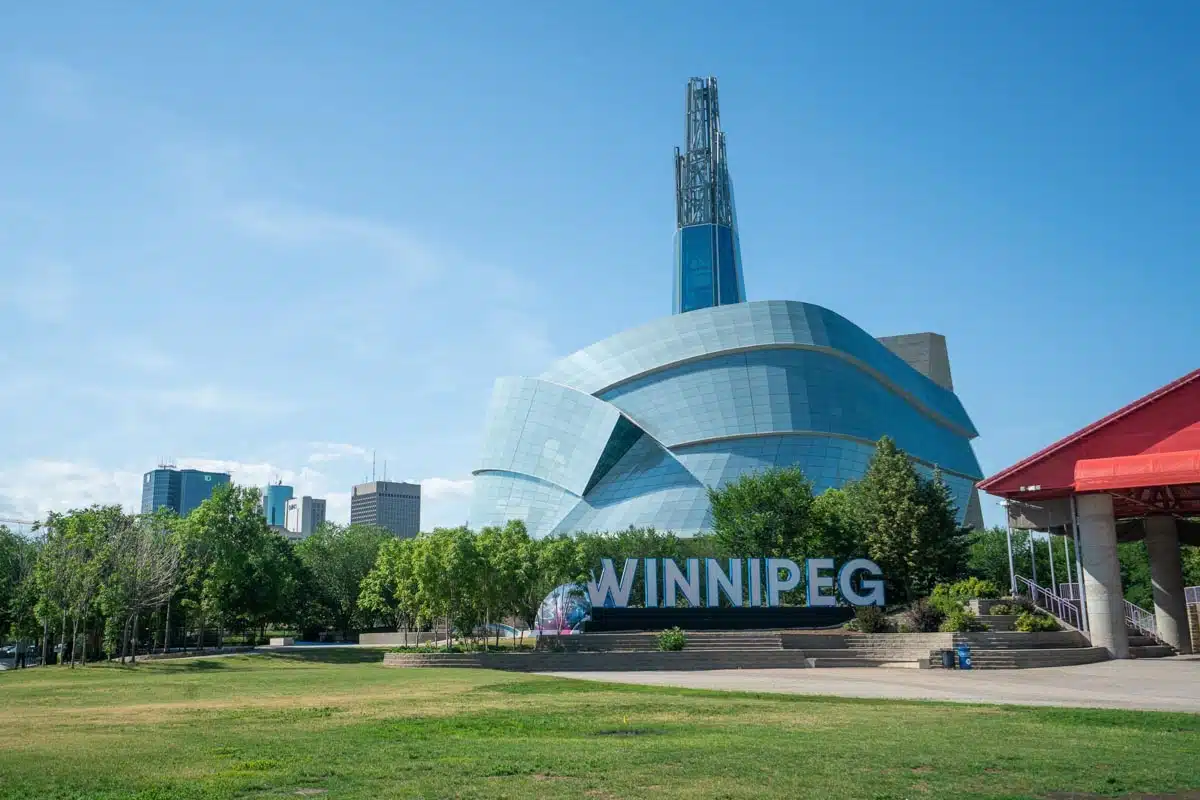
Check out surprise finds like The Forks Market, a daily marketplace and food hall near the Red and Assiniboine Rivers downtown. Or, explore the charming Assiniboine Park, where you can see live entertainment or just stroll through the park on the weekends.
Suggested Stay: Inn at the Forks
Moose Mountain Provincial Park
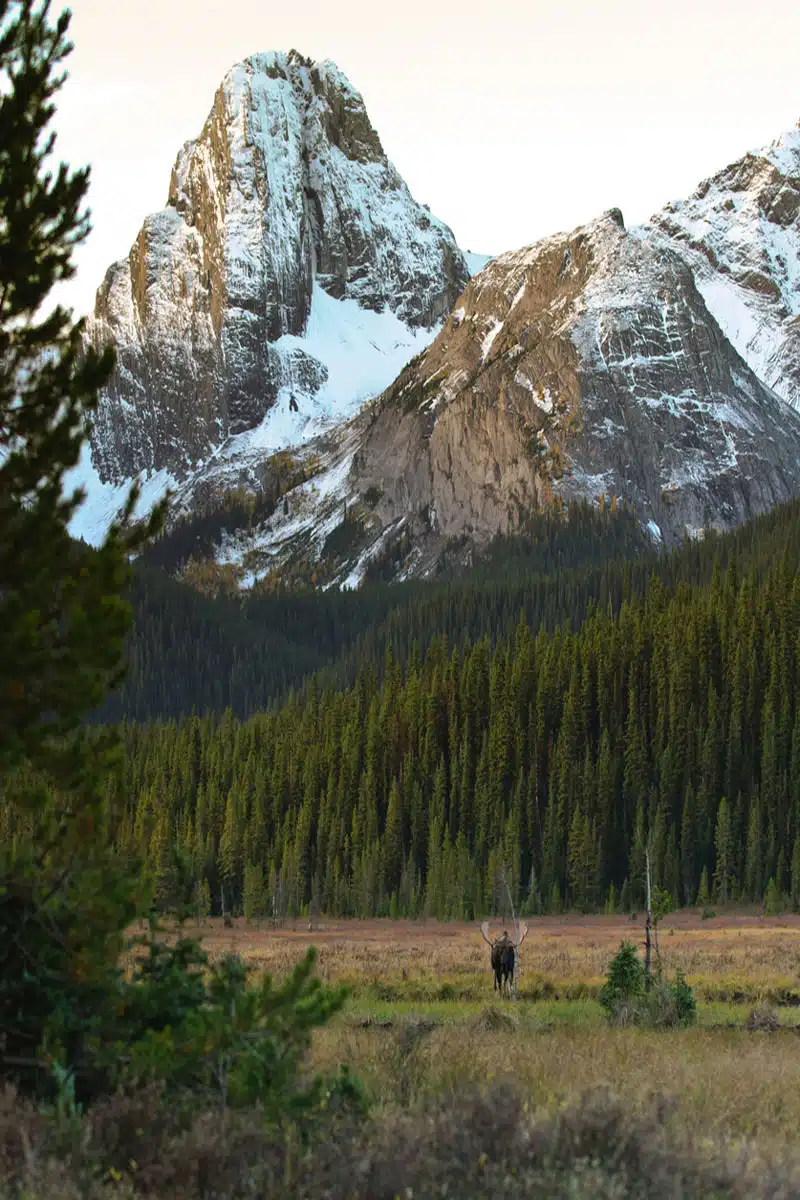
Bring your sense of adventure to this scenic stretch of Saskatchewan Forest that’s perfect for biking, hiking, or camping for a few nights.
Suggested Stay: Bear Claw Casino & Hotel
Grasslands National Park
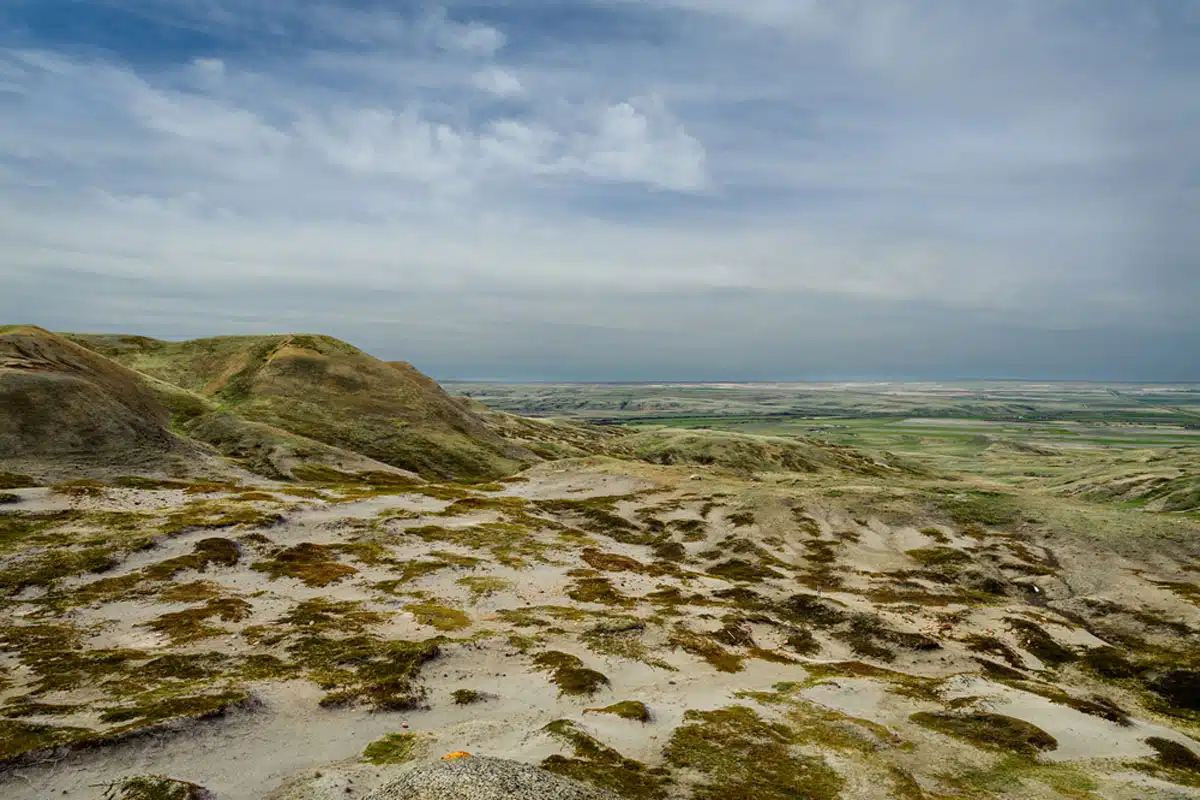
Maybe the most underrated of any national park in the country, you can see incredible wildlife like bison, coyotes, and rattlesnakes (gulp). But it’s stargazing and a chance to see the Northern Lights that really sets this park in the Saskatchewan prairies apart – check out Frenchman Valley Campground for some of the best views.
Suggested Stay: Sky Story Bed and Breakfast
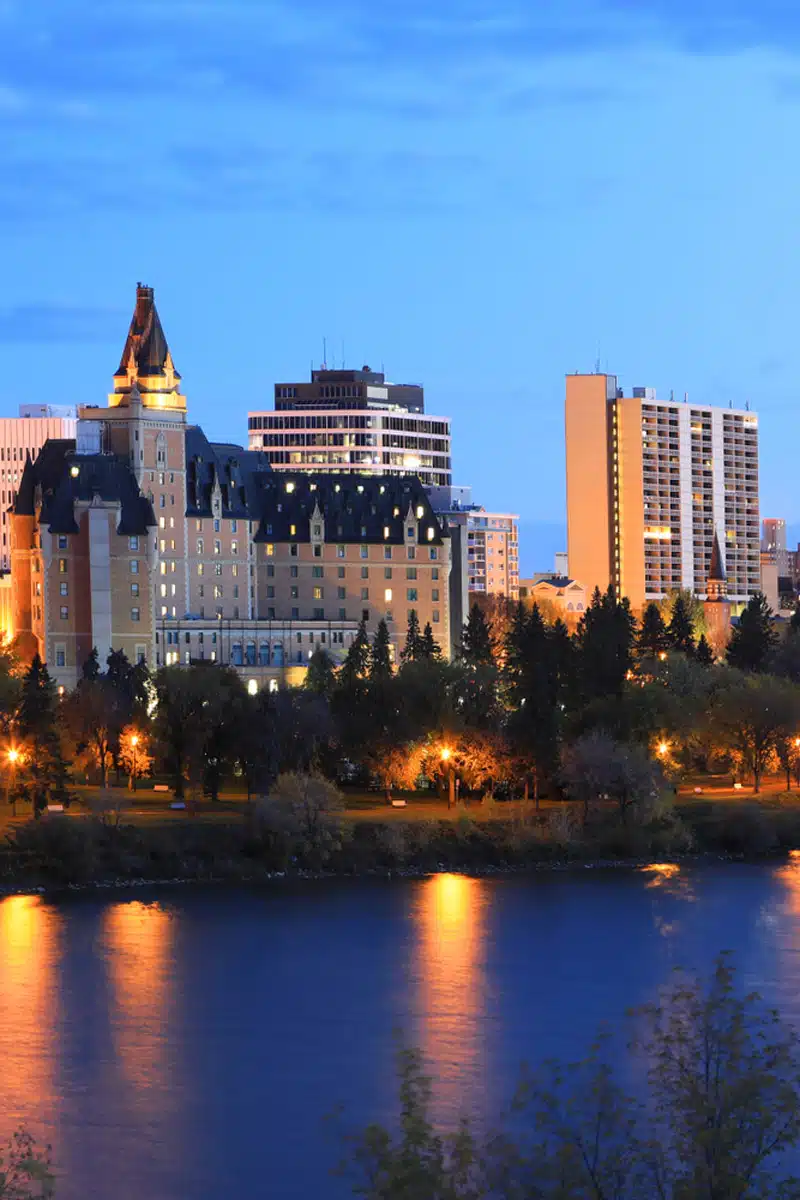
Saskatoon is an ice halfway point between Grasslands and Edmonton, but there’s plenty to see in town. Check out the local Farmer’s Markets on Wednesdays, Saturdays, and Sundays, or visit a museum like the Remai Modern , which features a comprehensive collection of linocut prints from Pablo Picasso.
Suggested Stay: Delta Hotels by Marriott Bessborough
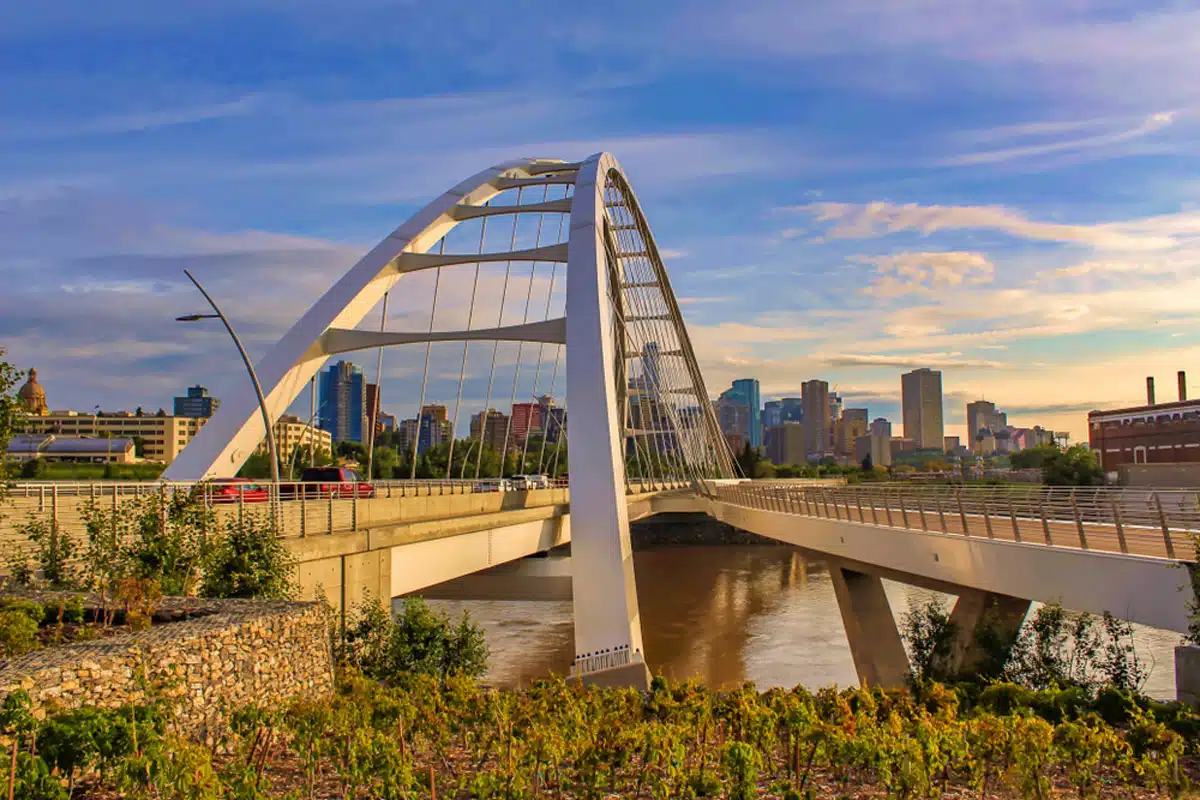
Edmonton is a standout on this Canada travel itinerary over 2 weeks for its gorgeous botanical garden (Muttart Conservatory), Neon Sign Museum, and delicious dim sum at Fu’s Repair Shop .
Suggested Stay: JW Marriott Edmonton ICE District
Canadian Rocky Mountain Parks
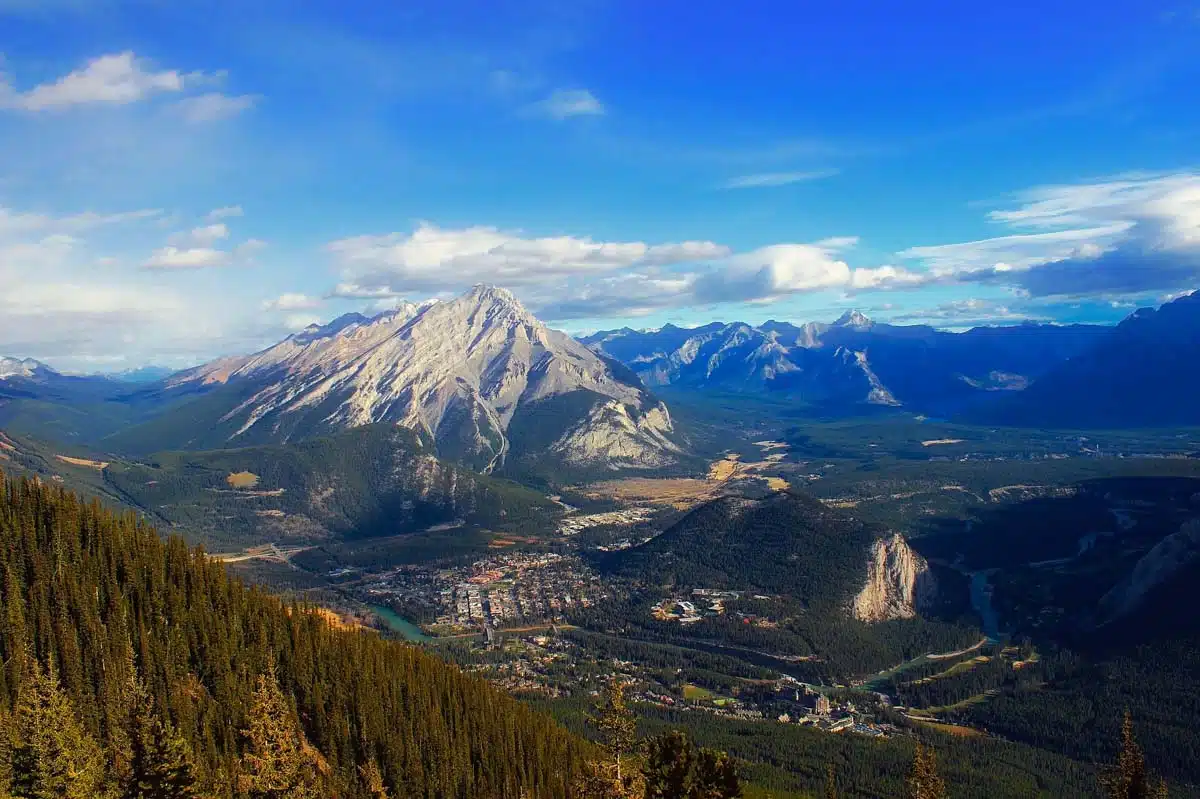
Visit the UNESCO World Heritage Site , home to 7 stunning national and state parks. I think visiting Jasper and Banff will give you a well-rounded preview of the cyan lakes and snow-capped mountains, but if you can add Yoho and Canmore, you won’t be disappoint
The Rimrock Resort Hotel , Banff | Fairmont Jasper Park Lodge , Jasper
Prince Edward Island to the Bay of Fundy
To explore some of the rocky shores and dramatic tides of eastern Canada, you’ll want to head over to Prince Edward Island and the Bay of Fundy. It’s a treasure trove for people who love the ocean, but you won’t need your swimsuit for many months of the year.
Instead, you’ll want to bring your hiking boots, archeology books, and appetite, as the coastal shores are famous for dramatic vistas, dinosaur fossils, and some of the best seafood in North America.
Prince Edward Island >> Joggins Fossil Cliffs >> Halifax >> Annapolis Valley
Distance: 385 miles (620 km)
Length of Trip: 1 Week
How to Do It: Car
Prince Edward Island
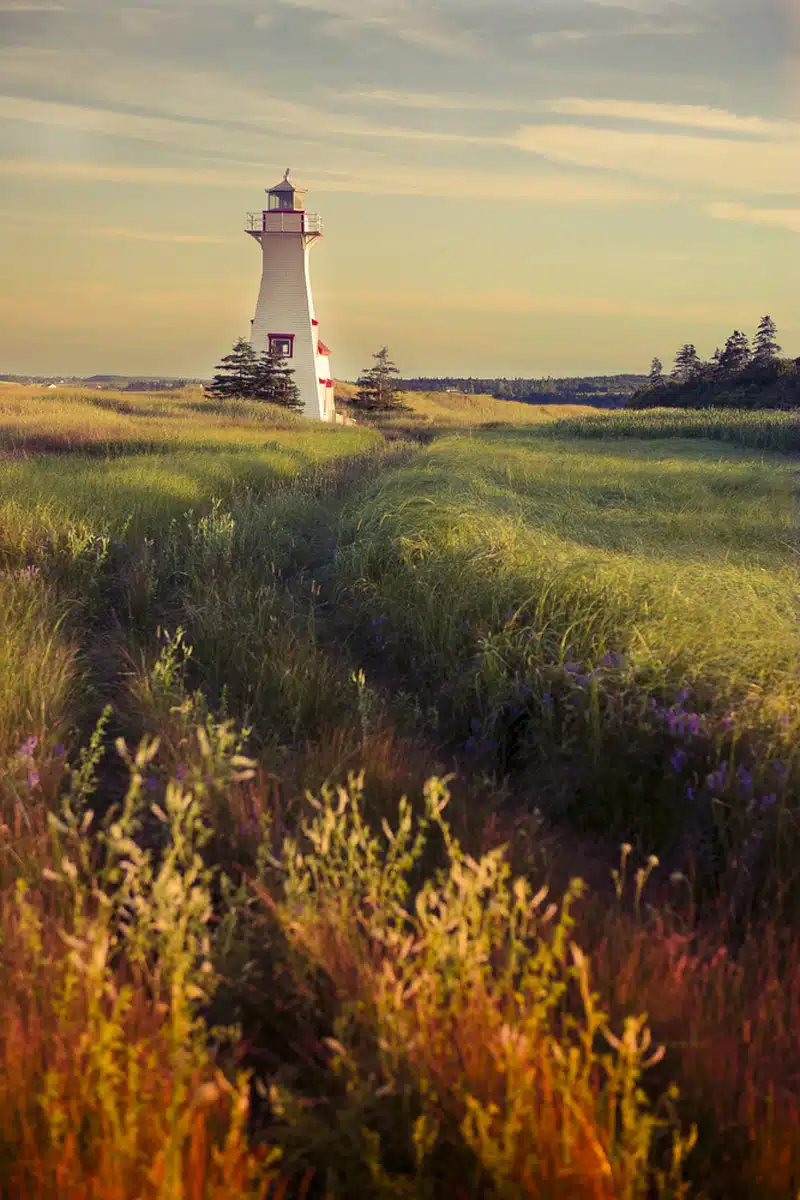
The charming towns, centuries-old lighthouses, and delicious seafood make Prince Edward Island a must-stop on any Canada itinerary for 5 to 7 days in Nova Scotia and New Brunswick. Be sure to check out the Victorian Gothic architecture in Charlottetown at Dunstan’s Basilica and incredible seafood caught just off the Gulf of St. Lawrence shores at the Merchantman Fresh Seafood & Oyster Bar .
Suggested Stay: Sydney Boutique Inn & Suites
Joggins Fossil Cliffs
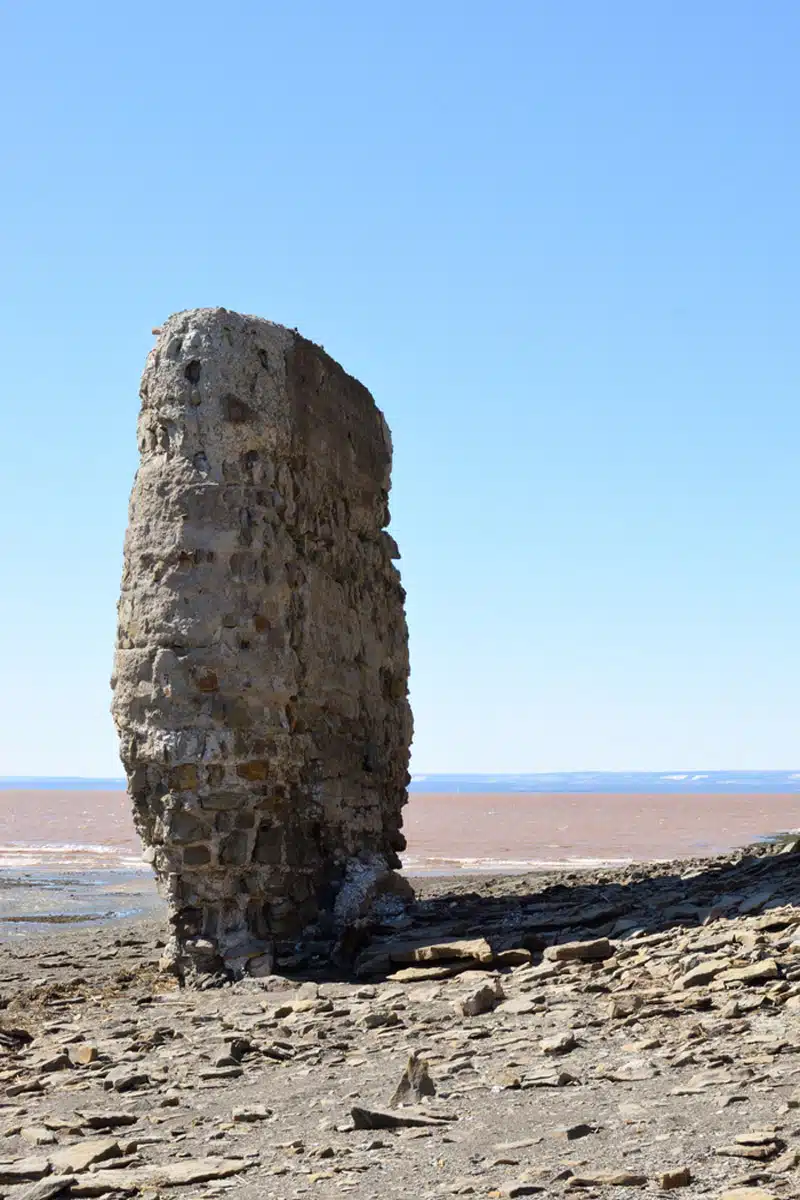
The famous high tides near the Bay of Fundy help form one of the most dramatic and mysterious coastal landscapes anywhere in the world. If you head out during low tide, you can uncover dinosaur fossils from millions of years ago.
Suggested Stay: Maplehurst Manor Bed and Breakfast
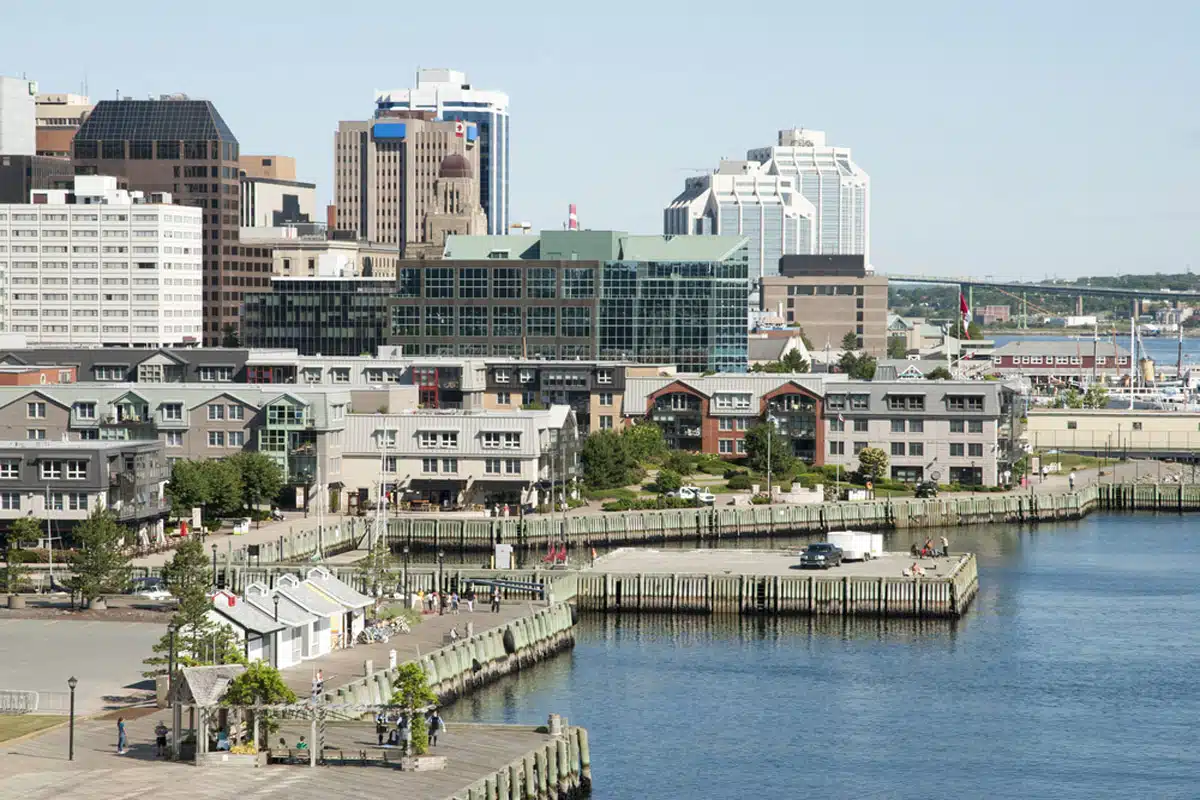
Get a taste of one of Nova Scotia’s gorgeous Atlantic towns when you stay in Halifax. Check out the Maritime Museum and Point Pleasant Park to learn more about the seafaring history in coastal Canada. Visit Halifax Seaport Farmers’ Market for a chance to see the nearly 300-year-old farmer’s market selling anything from craft beer to artisanal soaps and jewellery.
Suggested Stay: Halifax Marriott Harbourfront Hotel
Annapolis Valley
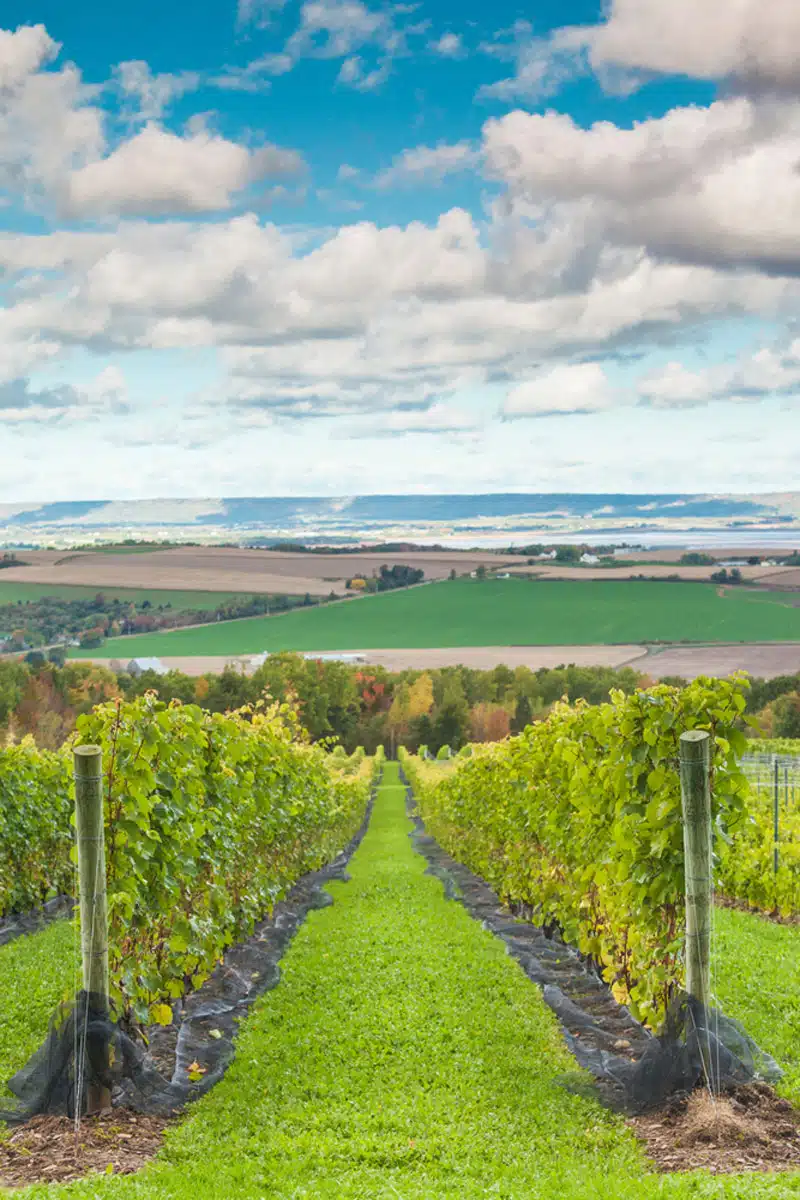
Maybe the most underrated region in Canada, the Annapolis Valley is home to incredible autumn colours, world-class vineyards like Lightfoot & Wolfville , and the collection of flora and fauna at Annapolis Royal Historic Gardens .
Suggested Stay: Queen Anne Inn
Canada Itinerary: Practical Tips for Planning Your Trip
- Hotel options are limited in areas like the Canadian Rocky Mountain Parks – book immediately after deciding where you plan to go.
- You can get a good look at a specific region over a 5 to 7-day Canada itinerary, but I’d recommend staying longer to explore more than one area.
- The weather in Canada is unpredictable and often extreme. Be sure to check out my packing list if you’re visiting the Canadian Rockies or any region of Canada prone to cold temperatures (read most of the country).
- If you’re planning a cross-continental itinerary, I would add a flight or two into your travel plans from one area to another to maximise your time.
Canada Travel Itineraries: Map
Add These to Your Canada Itinerary
- Canada Travel Guide – What You Need to Know Before You Book Your Trip
- Canadian Rockies Itinerary
- How to Plan the Perfect 2 Days in Banff
- 2 Days in Ottawa: A Step-by-Step Itinerary
- Why You Need to Visit Ottawa in Winter
Love This? Save and Share on Pinterest
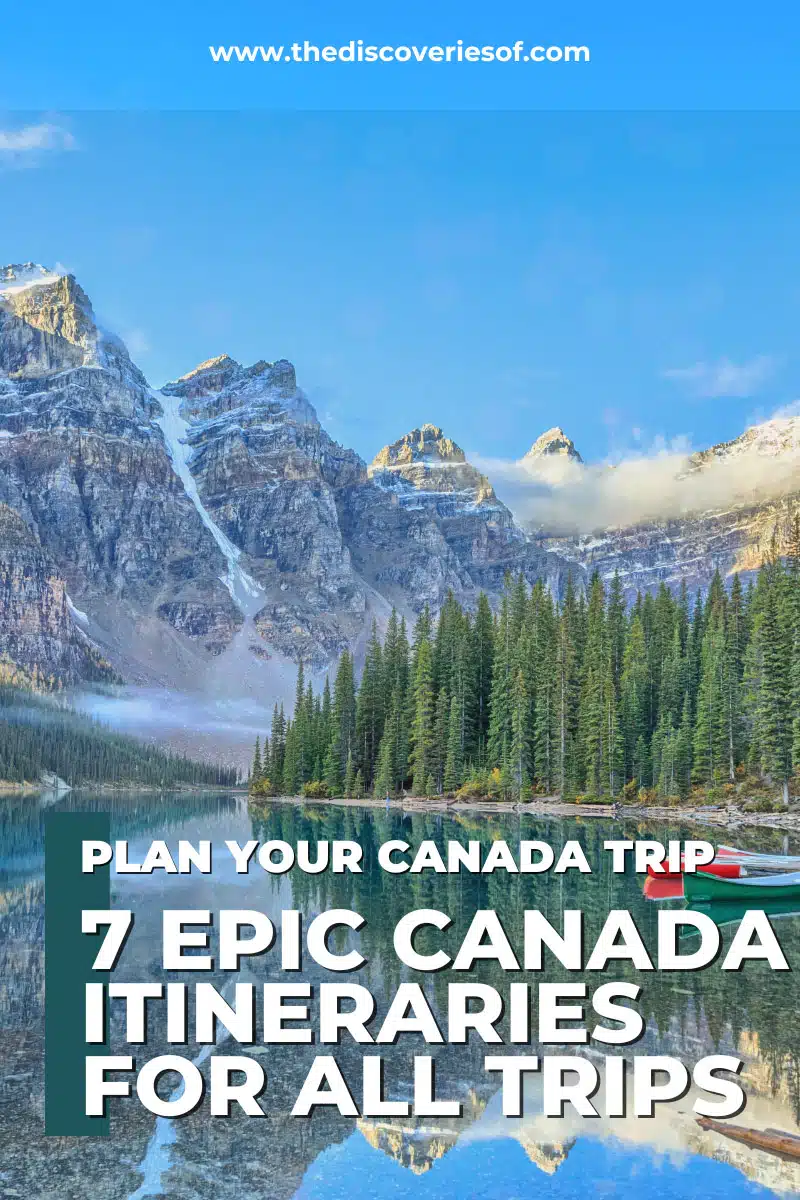
I’m Julianna Barnaby - a professional travel writer and geek extraordinaire. I started The Discoveries Of to help you to discover the best of new destinations from around the world.
Discovering new places is a thrill - whether it’s close to home, a new country or continent, I write to help you explore more and explore differently.
Related Posts
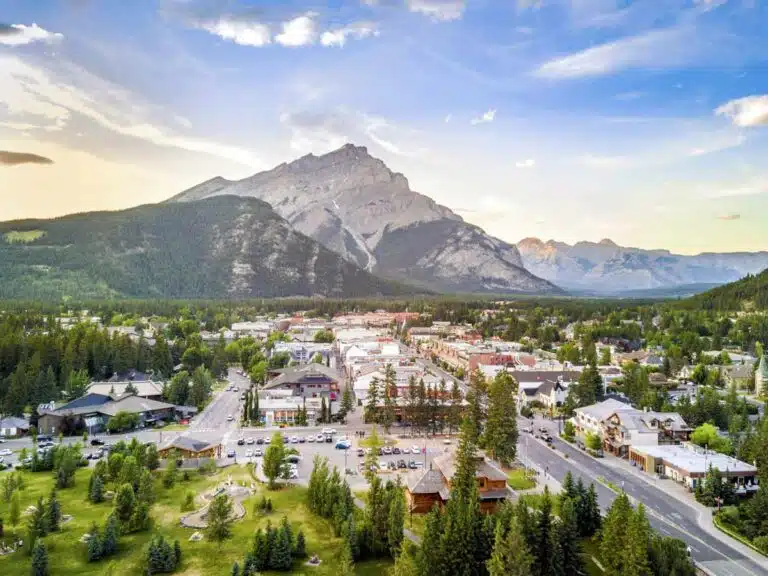
The Best Places to Stay in Banff National Park: A Complete Guide
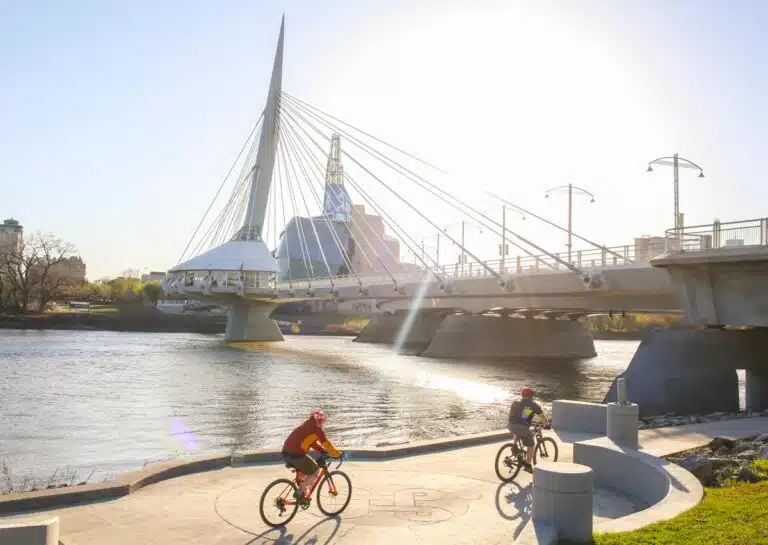
Awesome Outdoors Activities in Winnipeg You Have to Try
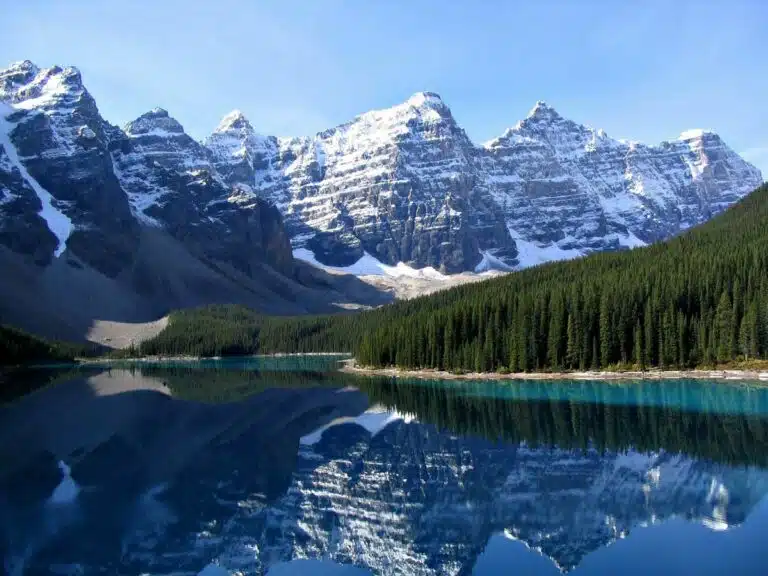
23 Incredible Things to do in Banff – Discover the Jewel of the Canadian Rockies
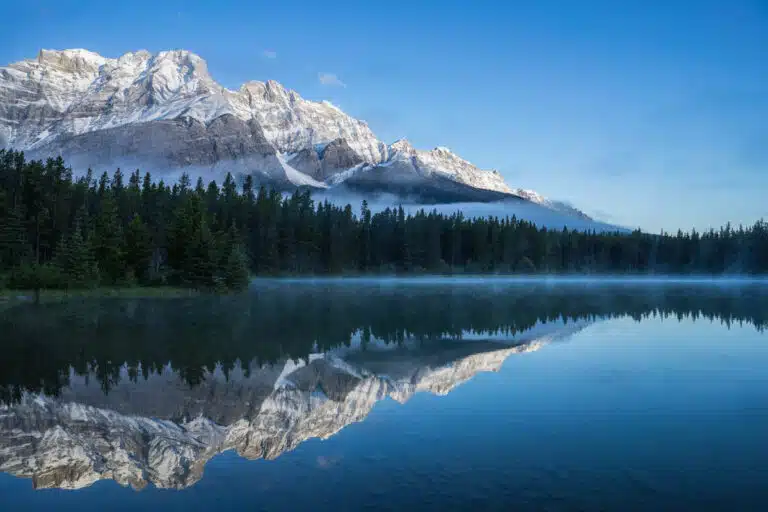
2 Days in Banff – A Rather Brilliant Banff Itinerary

Follow me on Instagram for travel inspiration, tips, and guides.

Canada Travel Guide
Last Updated: April 29, 2024
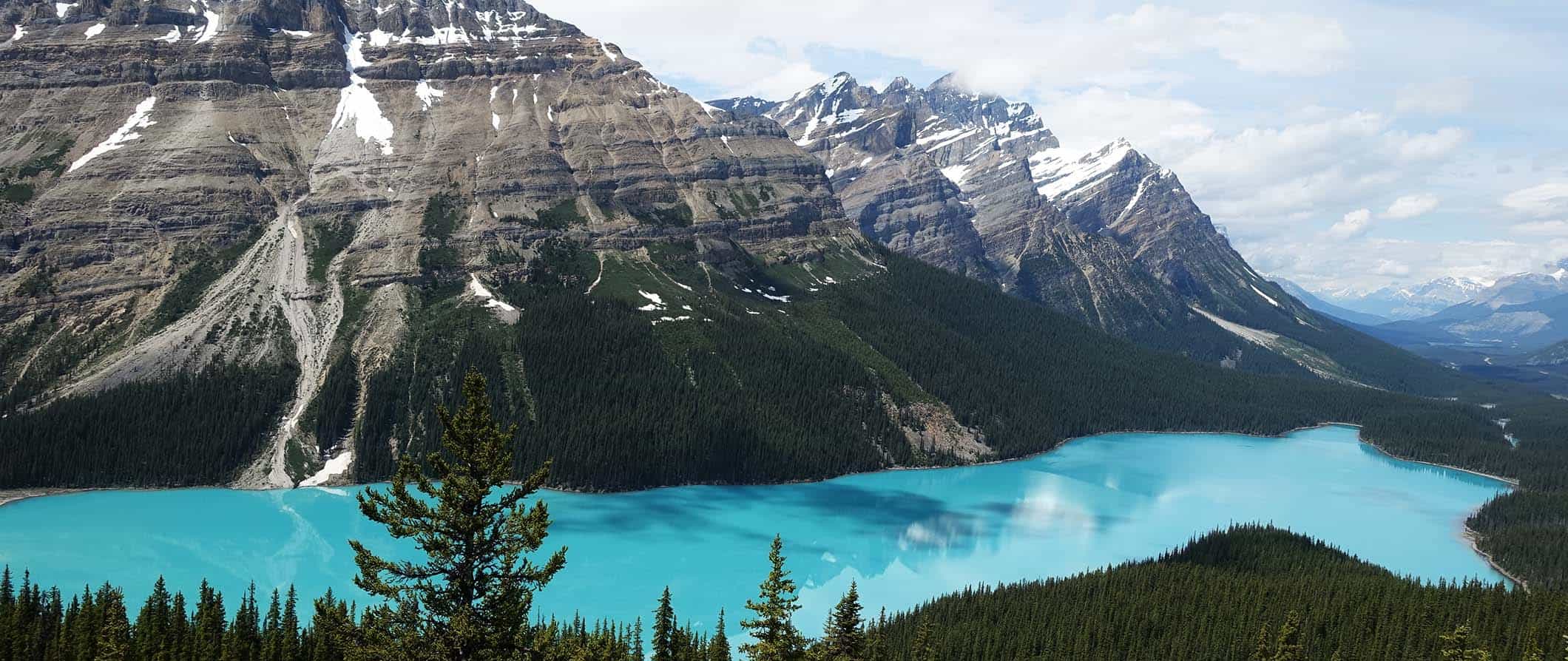
Canada is often skipped over on many round-the-world trips owing to its proximity to the US, poor flight connections, and few budget cross-country travel options.
But those people miss out on so much! Canada is one of the best countries in the world for RVing and road trips and it’s brimming with outdoor activities for all levels. Backpacking Canada is an amazing experience.
I love my friendly neighbor to the north and believe Canada is a really underrated destination. There’s a reason everyone around the world loves Canadians after all.
To top it all off, it’s also easy to get a working holiday visa here so you can stay longer and make money while you explore (there are huge seasonal industries across the country).
This travel guide to Canada can help you plan your trip, save money, and make the most of your visit to this friendly natural wonderland!
Table of Contents
- Things to See and Do
- Typical Costs
- Suggested Budget
- Money-Saving Tips
- Where to Stay
- How to Get Around
- How to Stay Safe
- Best Places to Book Your Trip
- Related Blogs on Canada
Click Here for City Guides
Top 5 things to see and do in canada.

1. Tour Toronto
Toronto is often considered the most multicultural city in the world, as over half of the city’s population is foreign-born. It’s an awesome, hip, artsy city. Don’t miss Kensington Market for good eats and cool shops, and there are plenty of tasty eats to be found in the city’s massive Chinatown as well. If you want to play tourist, head up the CN Tower for the best views of the city. For a bit of swimming in the summer, check out some of Canada’s easily accessible beaches on Lake Ontario where you can go kayaking, windsurfing, stand-up paddle boarding, and more. And if you’re traveling with kids, don’t miss the nearby amusement park Wonderland.
2. Explore Jasper and the Columbia Icefield
The Icefields Parkway connects Banff and Jasper in Western Canada and is one of the most scenic drives in the country (if not the world). Stop along the way at the Columbia Icefield, an enormous icefield that feeds into eight glaciers. You can travel onto the 10,000-year-old Athabasca Glacier where you can hike around and even drink from the crystal-clear icy glacial water. If you’re not squeamish about heights, walk out to the cliff-top glass-floored Skywalk to get a spectacular panorama of the entire area. It’s easy to reach via an enormous bus or opt for a hiking tour where you can walk the glacier. There’s even a restaurant at the top that’s a bit expensive but worth at least a coffee for the view.
3. Road trip the Maritimes
Newfoundland, Prince Edward Island, Nova Scotia, and New Brunswick make up Canada’s east coast. If you want to spend your days hiking, relaxing by the ocean, and whale watching, this is the place to do it. Nova Scotia is sometimes considered the most beautiful province with rolling hills leading to lush green coastal cliffs over frothy shores. There are colorful little fishing villages like Lunenburg, a UNESCO World Heritage Site considered one of the “Prettiest Painted Places in Canada.” It boasts delicious fresh seafood and friendly locals to chat with. Be sure to set aside a few days for an incredible road trip on the 298-kilometer (185-mile) Cabot Trail around Cape Breton and spend in the Highlands National Park where you can hike, camp, or fish. The east coast is stunning and sees very few tourists compared to other areas of the country.
4. Hang out in Montreal
Montreal offers a look at the French side of the country. Old Montreal is thriving with culture and a mix of old and new architecture within its European-style cobblestone streets, the Notre Dame Cathedral, museums, and river cruises. The other side of Montreal is extremely modern with an underground city and mall, funky jazz clubs, and amazing cuisine, which make this the hippest and most romantic city in the country. It’s also cheaper than most of the other large cities in Canada. Don’t forget to try the poutine and bagels when you visit!
5. Have fun in Vancouver
Other things to see and do in canada, 1. celebrate the calgary stampede.
During July, over 1 million people descend on Calgary for this multi-day rodeo, drinking festival, and carnival where everyone gets to be a cowboy. It’s a lot of fun, and you’ll meet tons of people from around the world. It’s one of Canada’s premier events so book early — prices rise and accommodation disappears fast! Also, wear cowboy boots and a hat if you want to fit in.
2. Hit the slopes
The mountains in Canada offer great skiing and snowboarding during the winter. Banff is a popular mountain town known for its excellent trails. It’s quite busy during the winter as locals and visitors alike hit the slopes, but it’s popular for a reason. While Banff is the most popular place to go, there are tons of other great skiing destinations in the country. Sunshine Village, Whistler Blackcomb, Lake Louise, Kicking Horse, and Mont Tremblant are just a few to check out (they stretch from British Columbia to Quebec so you’ve got lots of choices).
3. Discover Vancouver Island
Take a few days off from Vancouver to explore nearby Vancouver Island . Eat delicious seafood, hike, spot some whales (lots of orcas live near here), shop, and lounge on the beach. This is a place to just sit and relax. Since it is so close to Vancouver, it’s a popular getaway with the locals during the summer. Victoria, the capital of British Columbia, is located on the island. It’s a quiet but gorgeous little city worth a couple days of exploring. From here you can also visit places like Tofino, where the bustling surf community has evolved into a fun hippie town. If you’d rather hike an incredible yet challenging trail, the West Coast Trail is famous for its rugged beach and rainforest trails, man-made ladders through the trees, and rare wildlife.
4. Hike the rainforest
Hike the Pacific Rim National Park for a wonderful look at some temperate rainforests on Vancouver Island. It’s one of the most popular parks in Canada, home to Western Red Cedars, Pacific Silver Firs, and tons of wildlife including deer, wolves, bears, and cougars. The Long Beach area is one of the most accessible places for hiking, but the sand dunes behind Wickaninnish Beach on the South Beach Trail are also worth the trek.
5. Explore Calgary
Often skipped over by travelers since it’s not on the coast, Calgary actually has a lot to offer when it comes to free and low-cost activities. Have a picnic in one of its many parks, go rollerblading, watch a hockey game, or head up to the top of the surrounding peaks. There’s great hiking, kayaking, skiing, water rafting, and camping here and you can easily rent a bike and explore the city via its many bike paths. Although it’s been long dismissed as an oil town, it’s one of the liveliest cities in Canada.
6. Visit the galleries of Toronto
Toronto has some of the best museums and galleries in the country, so take a day or two to admire the art of the city. The Royal Ontario Museum (ROM) and the Art Gallery of Ontario (AGO) are the two most famous art museums, but there are a plethora of smaller, specialty galleries too, like the Textiles Museum of Canada and the Museum of Contemporary Art. Galleries often offer discounts on certain days of the week, so check before you go to save some cash.
7. Take a road trip
This huge country is best explored by car or RV. It’s the ideal way to find yourself in tiny little towns, majestic mountains, amazing countryside, and plenty of off-the-beaten-track places. If you have a lot of time, this is your best and cheapest option to see the country. The Trans-Canada Highway stretches from coast to coast, making a road trip relatively easy to plan. Just keep in mind that the weather can be unpredictable (especially in the winter). Of course, you’ll have to keep your eyes peeled for wildlife and you’ll want to be prepared for long stretches of driving without any rest stops or gas stations. However, it’s worth it — the changing landscapes and scenic vistas are out of this world! you could easily spend weeks or months touring the country and still barely scratch the surface. For the best car rental prices, use Discover Cars .
8. Stroll the nation’s capital
Ottawa is a very easy city to explore on foot. Home to museums, art galleries, and plenty of shops, it’s a charming city worth visiting for a couple days. You can take a tour of Parliament Hill (the historic buildings where the Canadian government operates) or cross the Ottawa River and visit Quebec (the great Museum of Civilization is just across the bridge). The Canadian War Museum and the National Gallery of Canada are two must-visit museums in Ottawa. Also, don’t miss the busy Byward Market, and be sure to check out the craft breweries in Westboro. Try a beavertail (a sweet pastry with sugary toppings) when you’re here!
9. Get off the beaten path in Nova Scotia
The locals boast that Nova Scotia is home to the friendliest people in Canada. They might be right. That, combined with over 100 beaches, picturesque lighthouses, great sailing, mouth-watering seafood (this area of Canada is the main fishing region), and a marvelous coastline, makes Nova Scotia an amazing place to visit in Canada. Plus, the province doesn’t see lots of tourists so it’s far less crowded and unspoiled compared to other regions. It’s perfect for road trips and camping.

10. Admire Quebec City
Quebec City’s Old Town offers cobblestone walkways, well-preserved 17th-century architecture, and the only North American fortress, the Citadel. The historical Quartier Petit Champlain is stunning and gives you an authentic French feeling with little cheese shops, bistros, creperies, and boutiques. It’s especially magical in December as it’s fully decorated with twinkling lights, snow-covered canopies, and lined with beautiful Christmas trees. In the warm weather, you can easily lose track of time wandering the streets admiring the flowers everywhere and colorful window shutters and storefronts. Don’t forget to sample the local ice ciders, head out for drinks on Grande Allée, and explore the streets below the stunning Château Frontenac.
11. Visit Kelowna
Warm in the summer and mild in the winter, this glacial valley has some of the best weather in the entire country. It’s no wonder that this is where many Canadians spend their vacations. There’s a marina and a few golf courses, not to mention that the Okanagan Valley is home to Canada’s best vineyards and wineries (a four-hour wine tour costs around 125 CAD). In the summer, Canadians rent fancy houseboats complete with waterslides to vacation on nearby Okanagan Lake. Overall, this is just a gorgeous slice of the country that shouldn’t be missed.
12. Head north to Churchill, Manitoba
This might be a small town in the middle of nowhere, but it also happens to be the Polar Bear Capital of the World, the Beluga Whale Capital of the World, and one of the best places to view the Aurora Borealis. You can ride in a tundra buggy (a special bus raised on giant wheels to keep you out of reach from polar bears) and head out on the open plains to see polar bears in their natural habitats. Mother nature is alive and thriving here. Day tours in a tundra buggy during the summer start at around 250 CAD, including lunch.
13. See the iconic Niagara Falls
This is one of the most visited attractions on the entire continent. You can never imagine how big it is until you see it up close (you never envision so much mist either). To see it up close, on a boat tour and head out into the waterfalls (be prepared to get soaked). Walks runs a daily boat tour that has exclusive access to the best spots and includes access to behind the falls (tours are 107 CAD). The town itself is touristy and cheesy so don’t spend more than a day or two (it’s fun for kids though).
14. Get lost in the Yukon
The Yukon is the perfect place to get your nature fix. The chances of seeing a bear, elk, or deer are incredibly high (or you can tour the Yukon Wildlife Preserve, where you’re guaranteed to see them). Go hiking in Tombstone Territorial Park, soak in a mineral hot pool at the Takhini Hot Springs, or swing by the Sign Post Forest with its unique collection of over 77,000 signposts. Hardly anyone ever visits the Yukon as visitors tend to stick to the major cities in the south of the country. Because of that, you’ll find yourself surrounded by unspoiled nature.
For more information on specific cities in Canada, check out these guides:
- Calgary Travel Guide
- Montreal Travel Guide
- Nova Scotia Travel Guide
- Ottawa Travel Guide
- Quebec City Travel Guide
- Toronto Travel Guide
- Vancouver Travel Guide
- Vancouver Island Travel Guide
Canada Travel Costs
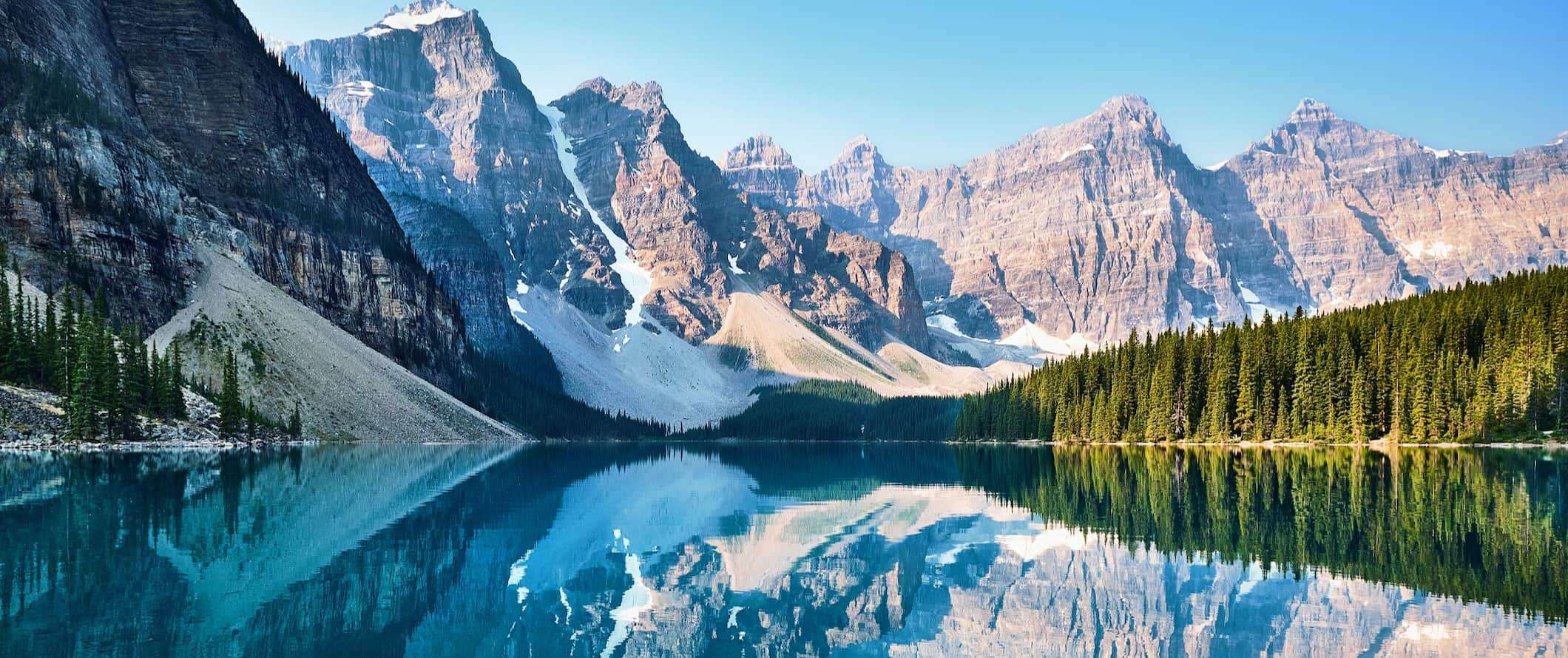
Accommodation – Rates vary a lot depending on what city you’re staying in. On average, you’ll end up paying 35-45 CAD per night for a dorm room at a hostel. Expect to pay at least 90-120 CAD for a budget hotel room. Prices rise drastically in larger cities (notably Vancouver, Toronto, and Ottawa).
Airbnb is available across the country, rivaling budget hotels for price and convenience. Expect to pay an average of 60-90 CAD per night for a private room, while entire homes/apartments start around 100 CAD. Keep in mind that many smaller towns won’t have many options. However, there are usually locally owned hotels or motels that are generally quite cheap. Also, Airbnb prices can double (or triple) when not booked in advance so book early.
If camping is your thing, you’ll have plenty of options across the country. Prices vary depending on the grounds but expect to pay between 25-35 CAD per night for a basic pitch for two people. Many of the major national and provincial campgrounds sell out early in the summer, so be sure to book in advance during the peak season (June-August).
Food – Overall, the food here is a collage of dishes from other cultures, owing to the country’s diverse history of immigration. On the coasts, seafood is king while the prairies have more of a meat and potatoes diet. Be sure to sample some of Canada’s famous staples like poutine (fries with gravy and cheese curds), beaver tails (fried dough with maple syrup), Canadian bacon, and the oddly tasty ketchup chips.
Overall, food can be inexpensive if you stick to cooking for yourself, eating street food, and dining at cheap fast-food places. Cheap sandwich shops and fast food are your best bet, usually costing less than 13 CAD per meal.
Pizzas cost 15-20 CAD while Asian food is usually 10-15 CAD for a main dish.
A meal out at a casual restaurant costs 20-35 CAD for a main dish and a drink. Casual fine dining costs double that.
Beer is around 7 CAD while a latte/cappuccino is around 4.60 CAD. Bottled water costs 2 CAD.
If you cook your own food, expect to pay 50-75 CAD per week for groceries. This gets you basic staples like rice, pasta, veggies, and some meat or fish.
Backpacking Canada Suggested Budgets
How much does it cost to visit Canada? Well, it’s complicated. How much you spend largely depends on where in Canada you’re going to visit. For example, Canada’s biggest cities like Toronto, Ottawa, and Vancouver are considerably more expensive than the smaller ones (like Halifax, St. John’s, and Quebec City). The rural areas are even cheaper but getting around costs more as you may need to rent a car or take expensive buses.
On a backpacking budget, you should plan to spend around 70 CAD per day. This assumes you’re staying in a hostel dorm, cooking all your meals, using public transportation, limiting your drinking, and sticking to free activities like hiking and enjoying nature.
On a mid-range budget of 185 CAD per day, you can stay in a private Airbnb, take buses between destinations, eat out for most meals, enjoy a few drinks, and do more paid activities like visiting museums or taking a food or wine tour.
On a “luxury” budget of 310 CAD per day or more, you can stay in a hotel, eat out for all your meals, drink more, rent a car to get around, and do whatever tours and activities you want. This is just the ground floor for luxury though, the sky is the limit!
You can use the chart below to get some idea of how much you need to budget daily, depending on your travel style. Keep in mind these are daily averages — some days you’ll spend more, some days you’ll spend less (you might spend less every day). We just want to give you a general idea of how to make your budget. Prices are in CAD.
Canada Travel Guide: Money-Saving Tips
Given the size of Canada, there are plenty of ways to save money when you travel, but it varies by region (as I’ve been repeating). The general tips below can help but for specific tips visit our city guides!
- Stay with a local – As Canada is not the most budget-friendly destination owing to its inconvenient size, you’ll be able to cut down on your costs by using Couchsurfing . While not huge in smaller towns, you won’t have a hard time finding a host in the major cities. Just be sure to plan ahead during the summer as that is prime tourist season and it’s much harder to find a host then.
- Enjoy outdoor summer festivals – Since Canadians are stuck indoors all winter, they love to make the most of hot days by packing in lots of festivals into the short summer. Many of these, like Heritage Days (Edmonton), Kits Days (Vancouver), and Caribana (Toronto), are free. Check out upcoming events online by visiting the local tourism board’s website.
- Embrace the outdoors – A vast country with a relatively minuscule population leaves lots of potential for outdoor activities. Rent a pair of cross-country skis or snowshoes in the winter and enjoy the free use of many trails (versus expensive downhill lift passes). In the summer, you can bike, hike, kayak, or canoe. The cost of most equipment rentals is around 25-100 CAD for a day, and you can explore many areas at no further cost.
- Take the bus – Megabus runs in Ontario and Quebec (with connections into the U.S., including NYC). You can find tickets for as little as 1 CAD if booked in advance. This is the most affordable way to get between Toronto and Montreal (or into the U.S.).
- Use ride-sharing services – If you are going to be traveling between cities or provinces, keep an eye out for people sharing their vehicles. Craigslist, Couchsurfing, Kangaride, and Facebook all have ride-share pages for most major cities. If you can find someone traveling in your direction you can tag along and share the cost of gas.
- Eat street food – Every major Canadian city has plenty of street vendors selling hot dogs, sausages, and veggie dogs for as little as 3 CAD. You won’t find a cheaper lunch!
- Take a free walking tour – Most major cities in Canada offer free walking tours. They are a great way to explore and get a feel for each location and its history. Most last a couple of hours and don’t need to be booked in advance. Just remember to tip your guide at the end!
- Buy gas on native reserves – If you are driving around the country, keep your eyes peeled for native reserves — they are the cheapest places to buy gas in Canada. With lower taxes, you’ll find gas prices significantly cheaper than anywhere else. They are also great places to stop and experience the vibrant cultures of Canada’s First People.
- Bring a water bottle – The tap water here is safe to drink so bring a reusable water bottle to save money. LifeStraw makes a reusable bottle with a built-in filter to ensure your water is always safe and clean.
Where to Stay in Canada
Hostels are not that plentiful across Canada, but generally, they’re high quality and clean. Here are my suggested places to stay in Canada:
- The Only Backpacker’s Inn (Toronto)
- The Parkdale Hostellerie (Toronto)
- Cambie Hostel Gastown (Vancouver)
- Samesun Vancouver (Vancouver)
- HI Calgary City Centre (Calgary)
- HI Lake Louise (Banff)
- HI Montreal Hostel (Montreal)
- Alexandrie-Montréal (Montreal)
How to Get Around Canada

Public transportation – Within city limits you’ll find great public transportation networks. Toronto and Montreal are the only two cities in Canada with subway systems (although Vancouver has SkyTrain), but even the smallest Canadian cities have extensive bus routes. It usually costs about 3.25 CAD for a one-way ticket.
Larger cities have passes designed for tourists to make the most of the metro system. For example, Toronto has a daily pass for unlimited travel for 13.50 CAD.
Bus – There’s no singular country-wide bus system here. Instead, regional operators vary per location. Megabus is the cheapest option when it comes to traveling between cities in Ontario and Quebec. Fares can be as low as 1 CAD if booked in advance. Red Arrow is primarily an Alberta coach line. On the east coast, Maritime Bus is the main coach company (except in Newfoundland where it’s DRL Group).
Toronto to Ottawa costs about 30-50 CAD with Flixbus, while Ottawa to Montreal is around 35-50 CAD. A longer ride — like the 13-hour drive from Calgary to Vancouver — costs around 125-165 CAD.
To find bus routes and prices, use BusBud .
Train – There is a train service (VIA Rail) that runs from coast to coast and is very scenic, albeit not cheap. Many train routes are currently suspended or running with limited space due to COVID-19, meaning that journeys take even longer. It takes over 24 hours to get from Halifax to Ottawa, costing about 150-170 CAD. On the other hand, shorter routes like between Montreal and Quebec City (a 3.5-hour journey) are more affordable and start at 36 CAD.
Flying – As your last alternative, you can fly, but since the country has only two major airlines (WestJet and Air Canada) prices are often high. Round-trip flights from Toronto to Vancouver usually start at around 200 CAD when booked early but they can easily cost triple that price. Round-trip from Ottawa to Calgary is around 270 CAD, but again, this is when booked in advance. Expect to pay at least double that price if you don’t book early.
Overall, flying is worthwhile only if you want to see specific cities and have limited time. For shorter routes (like Montreal to Ottawa) you’ll save a lot of money if you just take the bus or train.
Car Rental – If you’re going between provinces or staying a while in the country, consider renting a car for 35-50 CAD per day. This is one of the best, most convenient ways to get around the country — especially if you’re interested in getting out of the cities and into Canada’s wilderness (ideally if you have someone to share the cost with too).
For the best car rental prices, use Discover Cars .
Ridesharing – If you are traveling between cities or provinces, keep an eye out for people sharing their vehicle. Check these websites for rides:
- Couchsurfing
When to Go to Canada
Since Canada is such a large country, climate and temperature vary drastically from coast to coast. Canada has very defined seasons, and winter can be harsh and long in some places. For example, winters in the Northern Territories begin early and end late, and places like Newfoundland and Labrador can experience snow until late May.
On the other hand, winter in the Canadian Rockies is epic and people from all over the world flock to British Columbia and Alberta to hit the slopes around Whistler, Banff, and Revelstoke. Prepare for cold temperatures, though. In some places, like on the prairies, it can get as cold as -40°C (-40°F). In short, only visit in the winter if you’re planning to do winter sports.
Summer in Canada is beautiful, but it’s also the busiest time of year. June to the end of September is the main tourist season, with inflated prices and large crowds. On the other hand, the temperatures are lovely during this time, often in the high 20s°C (70s°F). There are music festivals galore and it’s a great time to hike, bike, and explore the Great Lakes.
Shoulder season is also a fantastic time to visit Canada, although spring (March-June) can be quite wet. Fall (September-October) is highly recommended, as temperatures are still warm enough and the autumn foliage is really something special. Quebec and the Atlantic Provinces are well worth an autumn trek.
How to Stay Safe in Canada
Canada is a safe place to backpack and travel — even if you’re traveling solo, and even as a solo female traveler. Violent attacks are rare and tend to be confined to certain areas (generally where drug and gang violence are a problem). You may encounter petty crime, like theft, around popular tourist landmarks, though that isn’t super common. Nevertheless, always keep an eye on your belongings, especially while taking public transportation, just to be safe.
Solo female travelers should feel safe here, however, the standard precautions apply (never leave your drink unattended at the bar, never walk home alone intoxicated, etc.).
If visiting in the winter, dress warmly. It gets so cold here that people literally freeze to death so take precautions and always keep an eye on the forecast.
If you’re going out hiking, always check the weather beforehand and ensure you have enough water. Bring sunscreen and a hat too. It can get humid here!
Canada’s cannabis legalization has a whole lot of rules and restrictions. The CBC has a great outline on everything you need to know if you’re thinking of consuming cannabis while in Canada.
Scams here are rare, but it never hurts to be prepared. Read about common travel scams to avoid here if you’re worried about getting ripped off.
If you experience an emergency, dial 911 for assistance.
The most important piece of advice I can offer is to purchase good travel insurance. Travel insurance will protect you against illness, injury, theft, and cancellations. It’s comprehensive protection in case anything goes wrong. I never go on a trip without it as I’ve had to use it many times in the past. You can use the widget below to find the policy right for you:
Canada Travel Guide: The Best Booking Resources
These are my favorite companies to use when I travel. They consistently have the best deals, offer world-class customer service and great value, and overall, are better than their competitors. They are the companies I use the most and are always the starting point in my search for travel deals.
- Skyscanner – Skyscanner is my favorite flight search engine. They search small websites and budget airlines that larger search sites tend to miss. They are hands down the number one place to start.
- Hostelworld – This is the best hostel accommodation site out there with the largest inventory, best search interface, and widest availability.
- Booking.com – The best all around booking site that constantly provides the cheapest and lowest rates. They have the widest selection of budget accommodation. In all my tests, they’ve always had the cheapest rates out of all the booking websites.
- Get Your Guide – Get Your Guide is a huge online marketplace for tours and excursions. They have tons of tour options available in cities all around the world, including everything from cooking classes, walking tours, street art lessons, and more!
- SafetyWing – Safety Wing offers convenient and affordable plans tailored to digital nomads and long-term travelers. They have cheap monthly plans, great customer service, and an easy-to-use claims process that makes it perfect for those on the road.
- LifeStraw – My go-to company for reusable water bottles with built-in filters so you can ensure your drinking water is always clean and safe.
- Unbound Merino – They make lightweight, durable, easy-to-clean travel clothing.
- Top Travel Credit Cards – Points are the best way to cut down travel expenses. Here’s my favorite point earning credit cards so you can get free travel!
Canada Travel Guide: Related Articles
Want more info? Check out all the articles I’ve written on Canada travel and continue planning your trip:
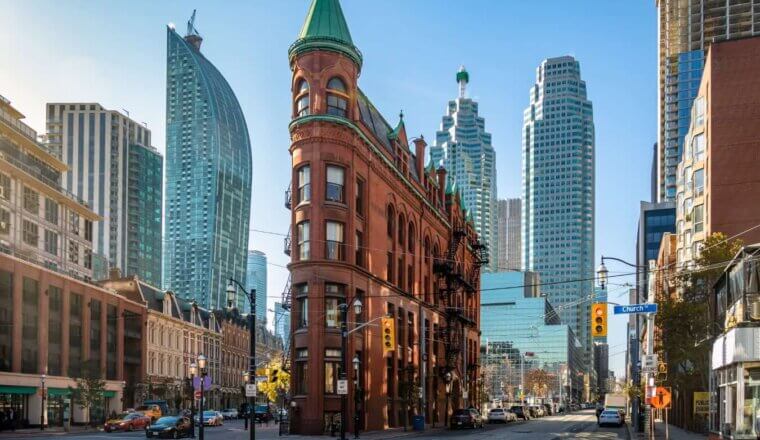
The 6 Best Hotels in Toronto
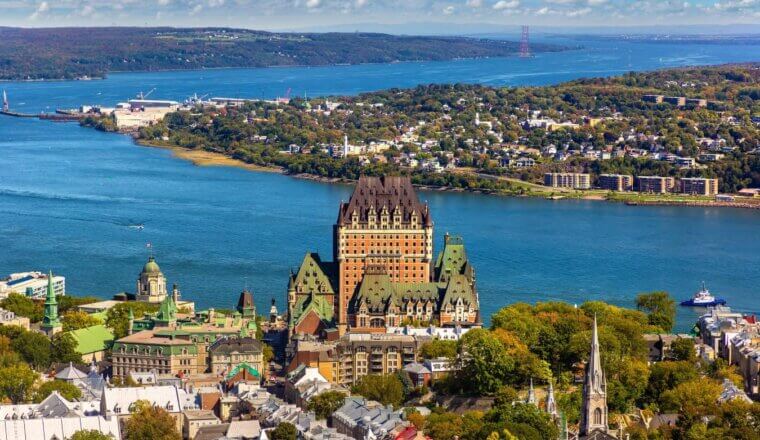
Where to Stay in Quebec City: The Best Neighborhoods for Your Visit
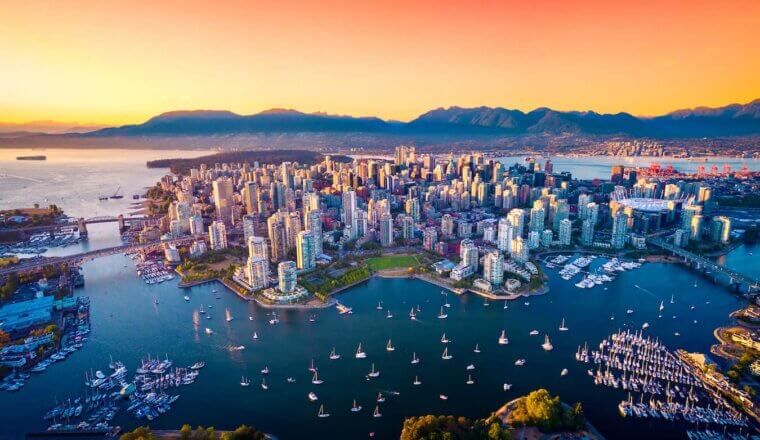
Where to Stay in Vancouver: The Best Neighborhoods for Your Visit
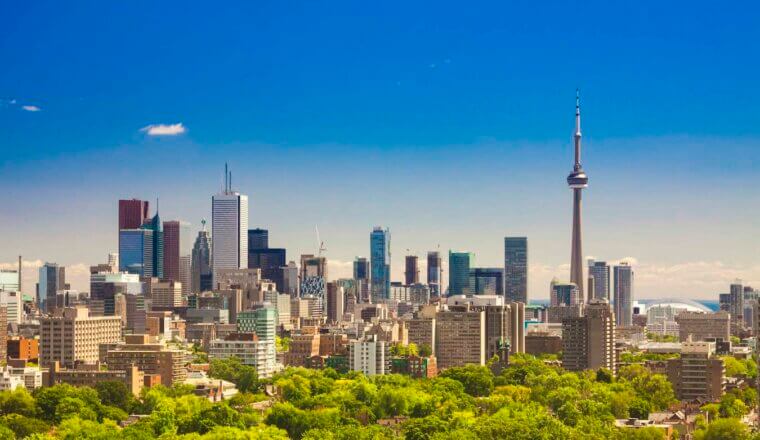
Where to Stay in Toronto: The Best Neighborhoods for Your Visit
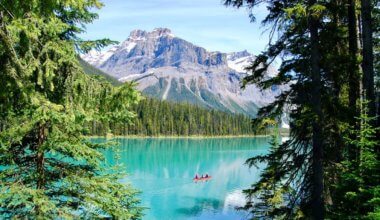
Canada Road Trip: A One Month Suggested Itinerary
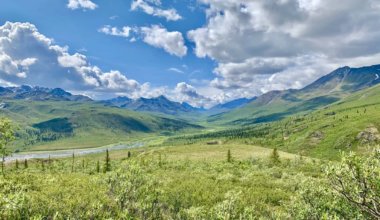
How to Road Trip the Yukon on a Budget
Get your free travel starter kit.
Enter your email and get planning cheatsheets including a step by step checklist, packing list, tips cheat sheet, and more so you can plan like a pro!

- Where To Stay
- Transportation
- Booking Resources
- Related Blogs

1 Month Canada Itinerary: Perfect Itinerary For First Timers
by Sharyn McCullum | Last updated Apr 17, 2023 | Canada Live Work and Play , Itineraries

So, you’re thinking about going to Canada “eh”? It’s a beautiful country with so much to offer but where do you start? Canada is the second largest country in the world, so it can be challenging to fit everything in for a one month long trip. I’ve simplified the planning process for you, detailing transportation, accommodation, activities and everything in between so you don’t need to. This 1 month Canada Itinerary is perfect for first timers and you’ll see the best the country has to offer. We start on the west coast and make our way over to the east, but you could always do this itinerary in reverse if that works best for you. There are a number of Canada itinerary options you could do, but this one I have put together will take you to the best cities and highlights to see.
Now let’s get into the good stuff!
Table of Contents
The Best Time To Visit Canada
Canada’s climate varies tremendously and should be considered when planning your 1 month Canada itinerary. There are warm and sunny days in summer, July to August, and then there can be sub zero temperatures in winter, December to February. I guess, it depends on what you want out of Canada. Do you want to visit the ski fields and maybe work a season, or two? Are you wanting to see the Northern Lights, best viewed from November to March. Maybe you love sport and want to experience an Ice Hockey game during the season running from October to June. Or would you like to see Grizzly and Black bears in their natural habitats during May to October. It just depends on what you want to see, but really, any time is a good time to visit Canada.
Best Canadian Transport Options
As you can imagine, due to the sheer size of Canada, knowing how you’re going to get from place to place during your Canadian holiday is a must. There are a variety of options that work for different budgets, so there’s something for everyone!
Travel Canada by Car or Campervan
If you’re looking for the freedom to travel at your own pace, hiring a car or campervan might be your best bet. There are many places in the mountainous areas of Canada where there isn’t access to public transit, making this option one of the most popular among tourists. There are a variety of car rental companies to choose from. Each with comparable prices, allowing you to pick which one works for you. Campervans also take accommodation out of the picture, combining your stay and transportation. You can find affordable campervan rentals in Canada with Wicked Campers .
Travel Canada by Train
Travelling by train might be one of the best ways to see Canada. After all, you can kick back and relax, while taking in the beautiful views throughout the entire journey! There are many options when it comes to train travel but the most popular is Via Rail which is the government run train system. Then there is the Rocky Mountaineer , a world-renowned and privately-owned train system. You can find trips from coast to coast, as well as shorter distances. Keep in mind that since the train provides a once in a lifetime view and experience, it comes at a higher price point than other modes of transportation!
Travel Canada by Bus
It is doable to travel through Canada on a bus but will take a little more planning, coordinating and a resilient attitude! Local transit throughout major cities and towns have great bus routes and for longer journeys, you can hop aboard a Greyhound bus . The bus will take longer than most other modes of transportation, so it’s best for those who aren’t on a strict timeline!
Travel Canada by Plane
Of course, air travel is often the most convenient option to get from place to place within Canada because it’s such a large country. With that being said, flights are often shockingly priced for the distance. There are many airlines that fly within Canada, the most popular and reputable being Air Canada and WestJet . A few budget airlines have recently popped up, such as Flair Airlines and Swoop (an offshoot of WestJet), making air travel in Canada more affordable!
How Much Spending Money Do I Need for A Trip to Canada?
How long is a piece string? It is hard to put an exact amount to how much spending money you will need to travel around Canada. I suggest you pay for as much as possible beforehand. Your flights , rental car and accommodation . Then you only need to worry about spending money for food, petrol and splurges going out and on souvenirs. One way to reduce your food cost is to look for accommodation that offers breakfast. And take your money in a variety of ways – cash, credit and debit card. So if you have under-budgetted your spending in Canada, you have access to money.
1 Month Canada Itinerary at a Glance
Here is an overview of how to spend your time on this 1 month Canadian holiday.
Days 1-3 – Vancouver (3 days) 4-8 – Rocky Mountains (5 days) 9-10 – Saskatoon (2 days) 11-12 – Winnipeg (2 days) 13-15 – Thunder Bay (3 days) 16-19 – Toronto (4 days) 20-22 – Niagara (3 days) 23-24 – Ottawa (2 days) 25-27 – Montreal (3 days) 28-30 – Quebec City (3 days)
1 Month Canada Itinerary
While a month may not feel like enough time to see all of Canada, you’ll be able to cover quite a lot of ground! This 1 month Canada Itinerary will get you started and help you plan an amazing adventure. Though there are many options to travel Canada, as mentioned above, I feel driving is the best option. So consider this itinerary as a one month road trip of Canada.
Days 1-3 Vancouver, BC

Beautiful Vancouver City with mountains behind
This Canadian itinerary starts or ends in Vancouver . Vancouver is one of the largest cities in Canada, with lots of action going on year round! With a relatively warm climate (for Canada), there are many outdoor activities to partake in. Maybe get your bearings from the Vancouver Lookout , where you will receive 360 degree views of the city. A visit to the iconic Stanley Park to wander amongst the totem poles is a must. Afterwards heading by Canada Place where you can take in the beautiful Vancouver waterfront and take a photo with the 2010 Olympic cauldron !
On a rainy day, spend your time wandering through the Vancouver Art Gallery . Or head about 20 minutes out of the city to walk along the Capilano Suspension Bridge ! The rain and fog will only add to the stunning scenery. There are also many unique neighbourhoods such as Gastown, Chinatown and Yaletown that are worth checking out during your stay. Each offer different shopping and dining options, so you can’t go wrong.
Maybe take a ferry across to Vancouver Island where you will find the capital of British Columbia, Victoria. Victoria boasts stunning natural beauty and has a rich heritage. Visit the Parliament Buildings and the Royal BC Museum or take a ride in a horse pulled carriage down the cobblestone streets.
One of the best ways to to discover Vancouver is to go on the Vancouver Hop On Hop Off . Yes, it can be touristy. At the same time, it takes you to all the best parts of Vancouver. It also tells you why you should visit the place, and allows you to get on and off so you can spend more time in different places.
YOU CAN PURCHASE YOUR VANCOUVER HOP ON HOP OFF TICKET HERE
Time in Vancouver: 3 days Where to stay in Vancouver: For a hostel, try Samesun Vancouver or HI Vancouver Downtown . If you’re after a hotel, Blue Horizon and Hotel BLU are great options!
Days 4-8 The Rocky Mountains

Lake Moraine
Next up on our one month Canada itinerary are the Rockies! The Rocky Mountains span over different parts of British Columbia and Alberta and there are many breathtaking spots to hike, ski, snowboard, mountain bike and more, along the way. You’ll first want to head towards Whistler which is just a two hour drive north of Vancouver. Whistler is one of Canada’s favourite year-round destinations. Imagine sparkling lakes, charming villages nestled between snow-capped mountains. No wonder so many people fall in love with this area and stay to work and ski in Canada . Then make your way across British Columbia until you reach Alberta. As you leave Whistler, take the Sea to Sky Highway for a magnificent drive!
Once you reach the Canadian Rockies in Alberta, you must spend some time in Jasper and Banff ! Jasper National Park is a UNESCO World Heritage Site with dazzling glaciers, crystal-clear lakes, thundering waterfalls and mountains. Here you could undertake the Maligne Canyon Ice Walk, try cross-country skiing, snowshoeing or ice skating. And come out at night as Jasper National Park is a dark sky preserve, meaning it is an area where almost no artificial light is visible at night.
Banff is nestled high in the Canadian Rockies with a long list of things to do. Hike the 4.3 kilometre trail up Tunnel Mountain to get a great perspective of the town and valley. Or enjoy a meal by a warming fireplace in one of the lively streets which are lined with top-class restaurants and bars. And the shopping is pretty good too.
Your trip won’t be complete until you’ve made it to Lake Louise to see its emerald green water and rugged peaks and glaciers. Fantastic winter activities to be done here or canoeing in bright blue water during the summer months. Don’t be surprised if you see bears or other wildlife while hiking or venturing through the mountainous landscape! Always be prepared with bear spray or a whistle just in case.
Time in the Rocky Mountains: 5 days Distance from Vancouver: The drive directly from Vancouver to Banff is about 9 hours, so you’ll probably want to break the drive up and stop at a few places along the way! Where to stay in Whistler : For a hostel try Whistler Lodge Hostel or in one of the many ski lodges like the Pan Pacific Whistler Village Centre . Accommodation in Banff : For a hostel try Banff International Hostel . If after a hotel try the Hidden Ridge Resort or Moose Hotel and Suites . Accommodation in Jasper : For a hostel try Jasper Downtown Hostel or for a hotel Chateau Jasper .
Days 9-10 via Calgary, CAB

Watch out for bucking bulls!
When you decide it’s time to say goodbye to the Rocky Mountains, you’ll want to make your way even further east. Saskatoon is a fairly long drive from Banff so you should consider stopping in Calgary to see what the city has to offer. If you go during the right time of year you may even catch the Calgary Stampede, which is a rodeo or really a 10 day event that takes place annually, every July. If there any other time of year there is plenty to do. Visit the Calgary Zoo or check out the views from Calgary Tower.
Accommodation in Calgary : For a hostel try Wicked Hostels . For a hotel try Best Western .
Afterwards, continue on your journey until you make it to Saskatoon. This underrated city is the largest city in the province of Saskatchewan is known as the Paris of the Prairies, because of it’s excellent cuisine. It’s an amazing spot for foodies who can check out the local farmer’s markets and restaurants. It’s also home to a large Jazz scene, so it may be worthwhile to plan your trip around the Saskatchewan Jazz Festival !
Distance from the Rockies: Saskatoon is about an 8 hour drive from Banff. Time in Saskatoon: 2 days Where to stay in Saskatoon: Book yourself an Airbnb for a night or stay at Park Town Hotel .
Days 12-13 Winnipeg
Winnipeg is another lesser-known city in Canada but it’s actually the largest city in Manitoba and has a relaxed feel. Some activities you can do while exploring Winnipeg include a trip to the Royal Canadian Min t (maybe you’ll find out where toonies & loonies come from!), learn about the local indigenous culture and take part in the different arts and cultural events!
Distance from Saskatoon: Winnipeg is about an 8 hour drive from Saskatoon. Time in Winnipeg: 2 days Where to stay in Winnipeg: The Mere Hotel is a beautiful boutique hotel in the heart of Winnipeg. It won’t disappoint!
Days 14-15 Thunder Bay

Sleeping Giant, Thunder Bay
As you leave Winnipeg and head for Ontario, the scenery will start to change. The Prairies are very flat and most of the land is used for farming but once you reach Northern Ontario, you’ll be surrounded by vast forests once again.
You’ll want to have a few days in Thunder Bay on this 1 month Canada itinerary to explore all of the natural wonders such as the Ouimet Canyon, the Kakabeka Falls and the most noteworthy landmark – the Sleeping Giant.
Distance from Winnipeg: Just another quick 8 hour drive until you reach Thunder Bay. Time in Thunder Bay: 3 days Where to stay in Thunder Bay: Book a cabin in Thunder Bay and fully immerse yourself in life up North or stay at the Courthouse Hotel if you want something more lavish! Or there is The Haven Hostel .
Days 16-19 Toronto, ON

Toronto City
As you say farewell to Thunder Bay, you’ll head south towards Toronto – Canada’s largest city and one of the most multicultural cities in the world! Since the drive is quite long, you’ll want to make a few stops along the way and allow for a few extra days for travel. There are many National Parks on the way where you can stop for hiking and a dip in the lakes (if weather permits!). You can’t miss Algonquin Park , especially during the fall season when all of the leaves are changing colour!
Once you finally reach Toronto, there are heaps of things to see and do. Take a trip to the CN Tower in the heart of downtown which was at one point, the tallest freestanding building in the world. Maybe brave the Edge Walk! Watch the Raptors go for another NBA Championship win at the Scotiabank Arena, or enjoy a Blue Jays game at the Rogers Centre . And Canadians love their ice hockey so check out the memorabilia at the Hockey Hall of Fame. Go for a stroll along the waterfront, spend an entire day visiting the Toronto Islands and explore the many diverse neighbourhoods throughout the city! The nightlife can be found mostly along King Street West but you’ll be able to find a good bar just about anywhere throughout the city.
Distance from Thunder Bay: 14-15 hour drive Time in Toronto: 4 days Where to stay in Toronto: While Toronto receives many visitors each year, it’s not much of a backpacking city. More often than not, people stay in Airbnb’s or boutique hotels like the Drake Hotel .
Days 20-22 Niagara
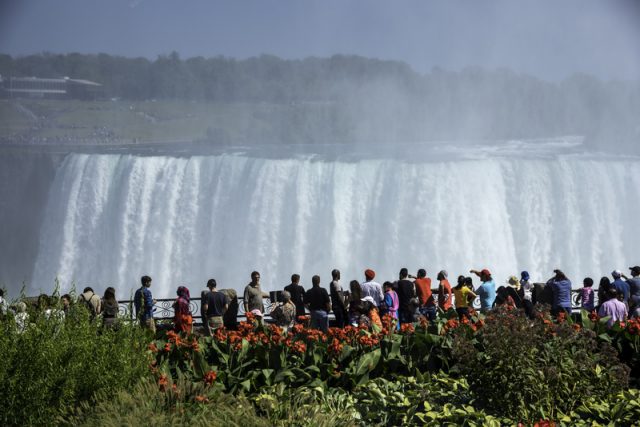
Niagara Falls – From the Canada Side
A trip to Niagara can easily be a day trip if you’re short on time but it’s worth spending a few nights in the area if you can! When most people think of Canada, they usually think of Niagara Falls. The iconic falls are on the border of the United States and are a sight to be seen! Niagara is best viewed aboard a boat cruise or scenic flight.
BOOK A NIAGARA FALLS BOAT CRUISE HERE
There’s also Fallsview Casino if you’re feeling lucky and the beautiful wine region of Niagara-on-the-Lake. Spend an entire day sipping on some of Ontario’s best vino and wandering through the quaint town.
Distance from Toronto: 1.5 hour drive Time in Niagara: 3 days Where to stay in Niagara: You can find a variety of hotels along Niagra Falls and b&b’s along Niagara-on-the-Lake!
DAYS 23-24 Ottawa
Did you think Toronto was Canada’s capital city? If so, you’re not alone but it’s actually Ottawa. That’s where you’ll stumble upon the Canadian Parliament and where the Prime Minister, Justin Trudeau resides. On your way to Ottawa, stop at the waterfall capital of the world – Hamilton! With over 100 waterfalls, this city is a great pit stop.

Yum – Beaver Tails
If you’re visiting Ottawa in the winter, you must try skating on the Rideau Canal and try a Canadian fave – Beavertails. Don’t let the name fool you, no beavers were harmed in the making of this delicious pastry!
Distance from Niagara: 5-6 hour drive Time in Ottawa: 2 days Where to stay in Ottawa: There are many hotels within walking distance to the city centre and Airbnb is also a popular choice among tourists! If after a hostel try the Ottawa Backpackers Inn or the Barefoot Hostel for women only. For a hotel try the Byward Blue Inn .
DAYS 25-27 Montreal, QC

Poutine – a local food
Nearing the end of the one month Canada itinerary, it’s time to cross over to Quebec to say Bonjour! Montreal is just a hop, skip and jump away from Ottawa but it has an entirely different feel to it. Montreal has an amazing food and music scene, with large festivals such as Osheaga held each summer.
Head up to the Mount Royal Lookout for a view of the entire city and explore the underground city in downtown Montreal – it’s never a dull moment there! Walk along the cobblestone streets and discovery Old Montreal’s galleries and historic sites. Maybe sample the local cuisine of poutine, French Fries served with cheese curds topped with brown gravey, Quebec’s favourite way to eat French fries!
Distance from Ottawa: 2 hour drive Time in Montreal: 3 days Where to stay in Montreal: Try out Hotel Bonaventure Montreal during your time in the city! or for a hostel try the M Montreal Hostel or the Samsun Montreal Central .
Days 28-29 (30) Quebec City

Through the Gate – Quebec City
Once you get to Quebec City, you’ll feel like you’re in a completely different country. With a European feel and French being the first language of most residents, it’s a pretty unique place to see! It is the only remaining fortified city in North America. You can discover all four surviving gates, Porte St. Jean, Porte St Louise, Porte Prescott and Porte Kent.
If you’re visiting during the winter, you can’t miss the Carnaval , where you can see ice sculptures and experience the best of winter in Quebec! You can also go dog sledding, tap a maple tree and taste fresh Canadian maple syrup.
Distance from Montreal: 3 hour drive Time in Quebec City: 3 days Where to stay in Quebec City: There are many places to choose from in Quebec City, the most prestigious and unique being Le Chateau Frontenac – the most photographed hotel in the world. The Hotel de Glace (Ice Hotel), which you can only stay at during the winter, for obvious reasons! For a hostel try the Auberge Jeunesse LouLou’s Backpacker Hostel.
If you end up having extra time on your itinerary, it’s worth extending your trip to see the east coast of Canada! Halifax and Cape Breton Island in Nova Scotia should be next on your list.
Final Words on this 1 Month Canada Itinerary
While you certainly won’t be able to see all of Canada with limited time, this one month Canada itinerary should help you get started on an adventure of a lifetime! If you are in Canada on a working holiday you will have 1-2 years to enjoy much more it. If you have been or are planning a trip to Canada, I would love to hear about it in the comments following.
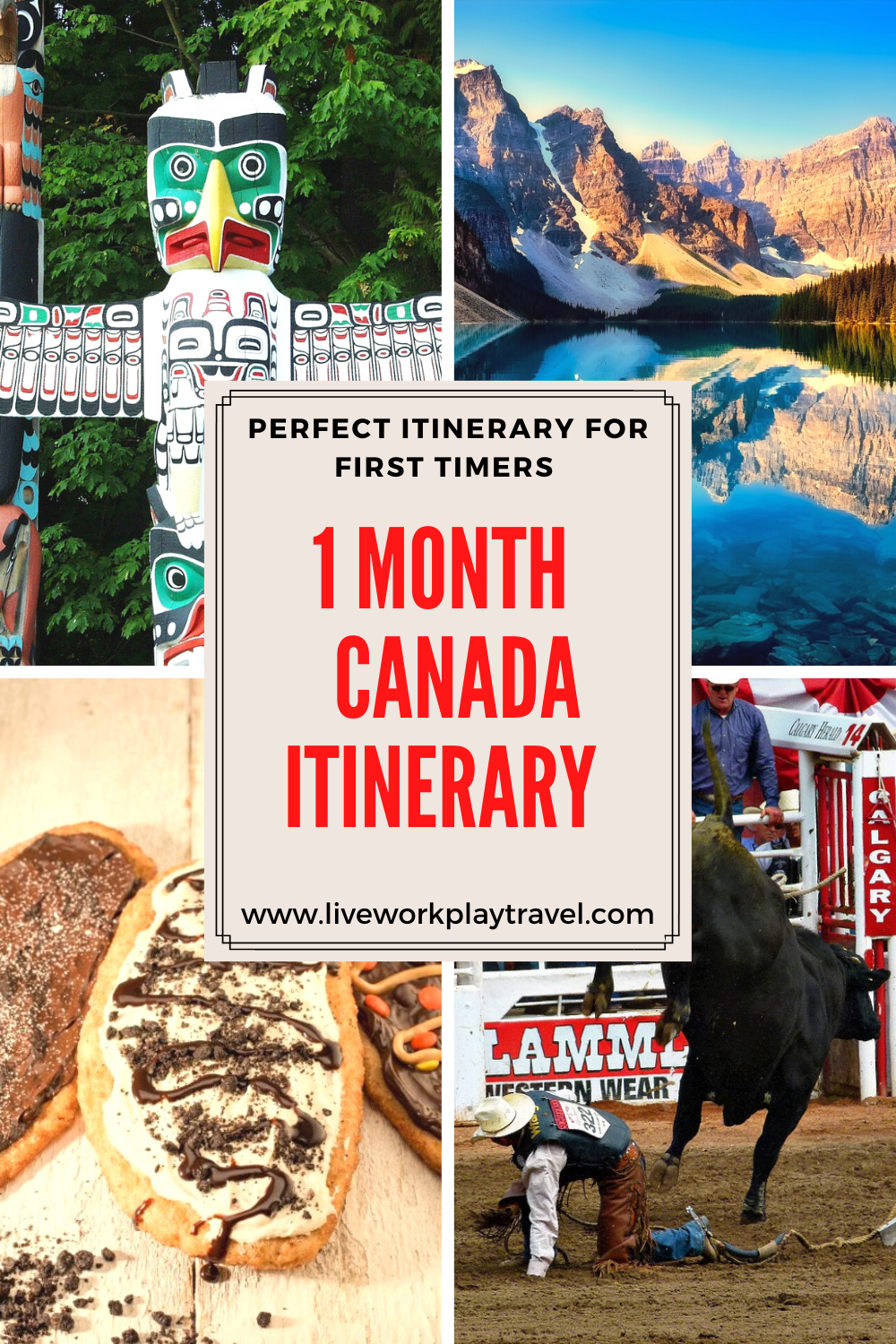
You may also like:
Thanks for sharing!
Join my Facebook Group — Ask questions, get answers!
Expat Travel Nest – Living and Working Abroad
Just so you know: some of the links in this post might be affiliate links, which earn me a small commission at no extra cost to you. No pressure to use my links, but I REALLY appreciate when you do! Also, a s an Amazon Associate I earn from qualifying purchases.
My favourite tools to Travel Live and Work Abroad
🏠 Where Will You Be Sleeping Tonight? – Get a bed in a hostel dorm through HostelWorld or for a hotel room check out Booking.com . Get free accommodation house and pet sitting through Trusted Housesitters – this has saved me thousands on accommodation, no joke!
✈️ Need a cheap and flexible airfare – head to Skyscanner .
🚙 Car Rental – search and compare vehicles at DiscoverCars .
🚆 Train Travel: I love riding the rails. For a rail pass in Europe head to Raileurope . And Japan has a great one too – JapanRail Pass .
🚌 Travelling by bus is often the cheapest way to travel. Compare and get a ticket or a pass at Busbud .
🏃🏻♀️ Jump-the-queue entrance tickets and day tours: I book these through GetYourGuide .
🌏 How to pick a country to live and work abroad in? Check out my Working Holiday Visa Country Guides and Digital Nomad Visa Country Guides to see where you can live work play travel abroad.
🚑 Should you buy travel insurance? Absolutely Yes! SafetyWing is great digital nomads and long-term travellers and World Normads has policies for general and adventure travel.
Buy the Guide to Get Ready to Live Abroad, Work Abroad and Travel Full Time Like a Pro

Join Me and Subscribe
Claim your free moving abroad checklist, + receive work and travel abroad tips and news delivered to your inbox., you have successfully subscribed, follow along on facebook, meet live work play travel.
Sharyn McCullum – Travel Writer / Blogger, Remote On-line Worker, sometime Digital Nomad and Travel, Live and Work Abroad Expert. Is a chocoholic, coffee connoisseur and lover of ’80s music. Been travelling all her life thanks to her dad who worked for an airline. Lived in London 4 years on a working holiday. Has holidayed in Hawaii over 15 times and currently calls Melbourne, Australia home. Is inspiring others to get the live work play travel lifestyle with this blog. Read more about Sharyn here.
55 Comments
What an incredibly thorough post! I’ve only been to Vancouver & the west coast, but hopefully I’ll be able to change that in 2021. As with the U.S., I bet there are so many hidden gems that hardly anyone visits in the middle of Canada!
Thunder Bay is out of the way but beautiful! Thanks for covering so many places in one post
Thunder Bay is beautiful and well worth the deviation.
Love Canada – have mostly visited Vancouver and Ottawa but so much more to see!
Yep. Plenty to see in Canada. I hope you get back there.
Ohhh I love this guide!! I grew up in Michigan, so I was lucky enough to visit Toronto and Niagara Falls area, but I would LOVE to visit Montreal. And Vancouver is probably my favorite city!! I miss having it so close like when I lived in Seattle. Can’t wait to explore more of Canada.
Sounds like you have experienced a number of Canadian places. I hope you get back to explore more!
The rocky mountains are calling my name! I think this guide was made for me, Canada is definitely on the wishlist for future travels and adventures. I’d love to snowboard there too!
They called my name too! I am sure you would enjoy the ski fields.
My best travel in 2019 was a solo trip to Toronto/Niagara. I left my heart in Canada and have a big itch to go back since. This is perfect to remind me of all the places I gotta get back to. Thank you Shelly!
You are welcome Shelly. I hope you get back to Canada soon and find your heart again!
I have had Vancouver on my list for a long time to visit! Looks like I’ll have a couple of more spot to add now.
That’s good. There is plenty to see and do in Vancouver. The longer you can stay the more you get to know the place.
This is such an amazing guide! I have yet to visit Canada, but I really want to change that this year. This guide will be so helpful for choosing where I’ll visit!
Canada is an amazing place to visit. My itinerary gives first timers to Canada an overall view of some of the best bits! But I know there are plenty more best bits to experience. Next trip!
What a great itinerary! I’ve never been to Canada, but when I do I’ll be sure to stop in Ottowa for a Beaver Tail!
Thank you. It is aimed at first timers to get a feel for Canada. And definitely stop in Ottawa for a Beaver Tail – they are yum.
Argh 1 month isn’t enough is it!? I could easily spend a month in each of these places and still feel like I only scratched the surface! I love that you saw a few of the best bits of this lovely country though!
Yeah I know, but you need to start somewhere. Next trip will hopefully be longer.
A really useful article for a first-timer’s visit. Love how you’ve incorporated food in the itinerary.
One month is a great start to a visit in Canada. Hopefully it can be longer.
Wow, this is such an in-depth post! I lived in BC and Alberta for a bit, and was meant to come back this year. One day…!
Canada is a fabulous place to visit and the longer you can spend in the country the more you can see and experience.
This is a bucket list trip for me, I’d love to cross the whole country by train, but you’re making me think maybe I’d be missing out if I didn’t drive. Is there a culture in Canada of buying campervans for travel , like in New Zealand?
The thing with trains and buses is they have set routes so you cannot deviate. This is why hiring a car or camper van is the perfect option. Yes, there are camper vans in Canada to hire.
I remember the first time I read about a beaver tail – it reminded me of something similar in California and I went into a deep dive for 20 minutes trying to figure out the difference, haha! Anyway, I’d definitely love more than a month in Canada, but I think this itinerary is a great start and it hits a ton of fantastic highlights.
I plan to visit Canada one day soon than later. This post has opened my eyes to how long my trip could possibly be. Thank you for this helpful travel guide.
Yes, this is a great way to extend your trip in Canada. There is plenty to see and do so try to make the time.
An ambitious itinerary!! I love all the details you give and info on transportation. I really need to see more of Canada!
What an amazing itinerary! A month in Canada would be a dream! Thanks for sharing.
So much to see and do! I really want to get to Alberta. Jasper and Banff look gorgeous anytime of year!
There is plenty to see and do in Canada. One month in Canada could be just the start!
Even a month does not seem like enough time to see everything Canada has to offer, but this itinerary hits all of the main spots!
Canada is somewhere I’d lovee to go back to for more than an extended long weekend layover! I actually nearly moved there but the visa process was too long and typically the day it came through was the day I set off to Australia instead as I was getting impatient ha. Anyway, I would want to go for a decent length of time, so this 1 month itinerary is great. I have saved it for when I make it over again!
Spending a month in Canada would be amazing! I’d love to see the stunning scenery in the Rocky Mountains. Thanks for the inspiration!
So many great places to see in my country. I live in Vancouver and love it, and there’s probably enough to see in this province alone to spend a month here exploring all the islands and the interior and wine country. Great itinerary, and some places I can’t wait to visit again further from the west coast
I cannot wait for the day when we can spend a month traveling around Canada. This is a great itinerary and I am saving for future reference!
I am saving this for sure. This is going to be a huge help when I go! Thanks so much!
Good. I hope you have a great time.
Wow, it is a dream of mine to visit the Rocky Mountains, your photo is stunning! Really a motivation to get started on the travel planning!
Definitely saving this! I would love to do a big trip to Canada but looking at its size it’s hard to know where to go haha
This is a really good 1 month itinerary for a first time visitor. It covers a lot of Canada (half). As I live in Ontario, I would recommend only spending 1 day in Niagara Falls and then move onto Niagara on the Lake to the wineries for a day or two. There are also a plethora of world class beaches in Ontario. I agree with you on Quebec. It’s like a completely different country.
If you haven’t yet, I hope you get to see the east coast of Canada. It’s the complete opposite to Western Canada (which is my favourite part).
Thanks for the suggestion. I will look into it. There is just so much I could include.
This is helpful itinerary to explore Canada. I will save this a future resource! Thanks.
Thank you. I’ve tried to include as much as possible for a month in Canada.
This sounds like a dream trip. I would love to road trip around Canada for a month, but preferably in the summer because I live in the desert and don’t think I can handle the cold! I am definitely saving this for future travel planning!
Looove it! This is a great start for a month in Canada… although if I am honest, if I only had a month, I’d probably spend the whole time in the Rockies! 😀
What a great resource. I’ve only been to the west coast of Canada but would love to visit everywhere else. I’ll use this for research when I do go.
The Rockies looks like an amazing place and if and when I visit I would love to spend a lot of time around there.
This is a great itinerary! I love the suggestion of doing it in a campervan
By doing this 1 month Canada Itinerary in a campervan you will not only be taking your accommodation with you but have transport that you have the flexibility to travel around wherever you want to go.
Great itinerary. It captures all the main areas to explore in Canada.
I love how detailed this itinerary is — it’s perfect! 🙂
Thank you. There is a lot to see in Canada. One month is not nearly enough, but it is a great start to spend 1 month in Canada.
Submit a Comment Cancel reply
Your email address will not be published. Required fields are marked *
Submit Comment
Privacy Overview
You have successfully subscribed..
I will not send you spam, just my newsletter. Unsubscribe at any time.

2 weeks in Canada: 14-15 Day Itinerary (First Time Visit)
2 weeks in canada: which itinerary for 14, 15 or 16 days.
You’re planning a 2 weeks trip to Canada and you’re looking for the best Itinerary?
You’re at the right place!
In order to help you plan your stay , I have prepared this recommended Itinerary for 2 weeks in Canada . You will discover some of the best places to visit in the Western part of the country!
This itinerary features 2 Vancouver and Calgary , the 2 most famous cirties of Western Canada, as well as the world famous Jasper and Banff National Parks .
Quick note : If you prefer to visit the Eastern part of Canada , particularly the province of Quebec , you should check my other itinerary: The Perfect 2-week Itinerary in Quebec.
For this itinerary, in addition to the best things to do and must-see attractions , I will also give you all my best tips as well as my list of the best accommodations depending on your budget.
So, what are the best things to do in Canada in 14, 15 or 16 days? Where to stay?
Let’s find out!
Where to stay in Vancouver
Where to stay in victoria, accommodation at pacific rim:, where to stay in whistler, where to stay in wells gray park, where to stay in jasper, staying in lake louise / banff national park, where to stay in calgary, going to canada: flight prices, you’re traveling in canada these articles will help you, 1) vancouver (2 days).
To explore Canada in 14-15 days and uncover the best of the West, I recommend flying into Vancouver.
You can explore the city by foot or public transit, but you’ll definitely need a car for all the following stages of this 2-week tour in Canada . It’s up to you if you prefer to pick it up upon your arrival or come back for it before heading to the next city.
In any case, you should book your car through Booking.com Cars . I always use it, no matter where I’m headed: Thailand , Sicily , Greece , you name it. And there are several good reasons why:
- Direct comparison of all rates from different companies to find the best deal.
- Their full protection insurance guarantees a refund of costs incurred in case of an accident or damages. Tried and trusted! They’ve refunded me over 1200 euros to date.
- Free modification or cancellation of your booking. So, you can book your car as early as possible and benefit from the best rates.
To score the best deal and if you’ve already got your vacation dates locked in, I highly recommend reserving your car now. And here’s the best part: it doesn’t require any commitment on your part,
For your first day in Vancouver , here’s my recommended itinerary (in order):
- Stroll through the historic Gastown district, admire the beautiful Victorian buildings, and don’t forget to snap a photo of the neighborhood’s curiosity, the Steam Clock .
- Discover Chinatown and the Dr. Sun Yat-Sen Classical Chinese Garden for a zen break amidst the city’s skyscrapers.
- Head to Canada Place and the waterfront , where you can enjoy views of Stanley Park and the surrounding mountains. Also, don’t miss the Digital Orca for that souvenir photo.
- Try out FlyOver Canada, a 4D tour of the country. An absolute must-do in Vancouver.
To ensure your spot, it’s essential to book your session for FlyOver Canada in advance . Don’t wait, secure your experience by clicking the green button below:
In the afternoon, make your way to Stanley Park for a walk or a bike ride (you can also book guided tours here! ) in the city’s largest park. While wandering, be sure to visit the area with the Indigenous totem poles and take in the view of the Lions Gate Bridge .
At sunset, I suggest you head to the Vancouver Lookout , a tall tower with a panoramic platform overlooking the city, similar to the CN Tower in Toronto or the Bayoke Tower in Bangkok . You can book tickets by clicking here
End your first day in Vancouver by savoring delicious dishes at one of the best restaurants in the city, located in the Yaletown district .
Spend the night in Vancouver.
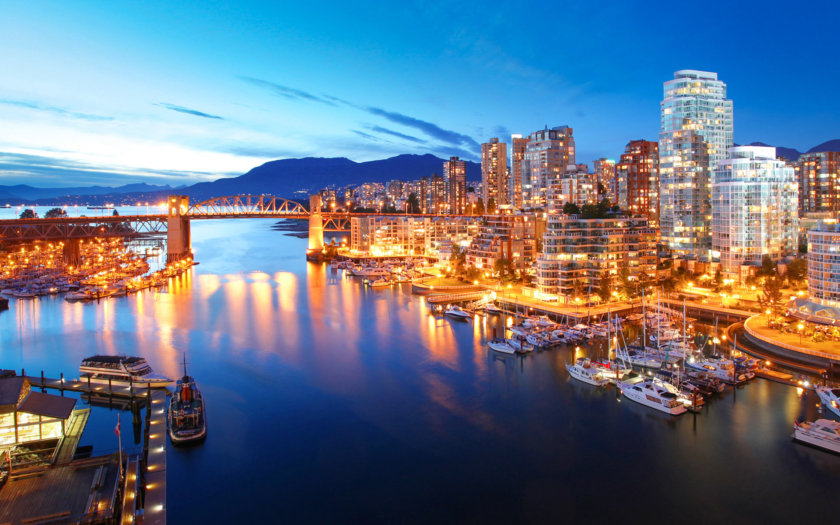
On the second day of this two-week Canadian adventure, I suggest you continue your exploration of Vancouver .
And we’re kicking off with an unforgettable experience: a seaplane flight over the city ! This twenty-minute flight offers an entirely unique perspective on the city. A big highlight of your 15-day Canadian road trip .
You can book this seaplane outing in Vancouver in advance, by clicking the button below:
Once back on land, here are some other things to see during the day :
- Granville Island and its enormous covered market where you can grab a lovely picnic or stop to eat at one of the food court’s stands.
- The Museum of Anthropology , focusing on the history of the First Nations, Indigenous peoples of British Columbia and Canada.
- Wreck Beach , located right next to the museum.
- The VanDusen Botanical Garden , home to 7,500 plant and tree species and ranked among North America’s most beautiful gardens.
- A shopping spree on Robson Street , packed with loads of awesome stores to check out.
Spend another night in Vancouver.
For more details and additional explanations on visiting Vancouver, check out my article: best things to do in Vancouver !
There, you’ll find more ideas for activities and tours to do in Vancouver. For example:
- A cruise to watch whales and orcas
- Vancouver Aquarium (perfect for a day out with kids!)
- Vancouver hop-on hop-off bus tour . 24h or 48h pass with included English audio guide.
- Commentated one-hour cruise in Vancouver’s harbor
- Sunset cruise in Vancouver with included buffet dinner. Duration: 2h30
- A guided walking tour of the city.
For all the attractions in Vancouver , such as the Vancouver Lookout, Fly Over, the botanical garden, and so on, you should definitely book your tickets in advance . These sites are pretty touristy, and there are often long queues.
- Samesun Vancouver : This funky youth hostel is right in the middle of the city, a stone’s throw away from Yaletown district. Bunk in a dorm from €40, breakfast included. Strong points: location in the city centre, the vibrant atmosphere, comfy beds, and a cracking breakfast with muffins and bagels. A top-notch pick for budget-friendly accommodations in Vancouver !
- The Sylvia Hotel : Located just a two-minute stroll from Stanley Park and a minute from the beach. Spacious and bright double rooms starting at €120 per night. Strong points: prime location, friendly staff, and the authentic charm of the place.
- Blue Horizon Hotel : This gem is on Robson Street, the main shopping artery of Vancouver. Super spacious, comfy double room with a killer view from €170. Strong points: fantastic location to explore Vancouver by foot, the view, plenty of shops and restaurants close by, room comfort. My favorite for its value for money In my opinion, the best hotel in Vancouver.
- The St Regis Hotel : Nestled right in downtown, a hop, skip, and a jump away from Vancouver Lookout. Spacious and cozy double rooms from €240 per night, breakfast included. Strong points: optimal location, helpful and warm staff, room comfort, and a scrumptious and plentiful breakfast.
- Rosewood Hotel Georgia : A splendid 5-star hotel in downtown Vancouver offering beautifully decorated rooms from €350 per night. Strong points: indoor swimming pool, spa, and top-notch services. The best hotel in Vancouver for a luxury stay !
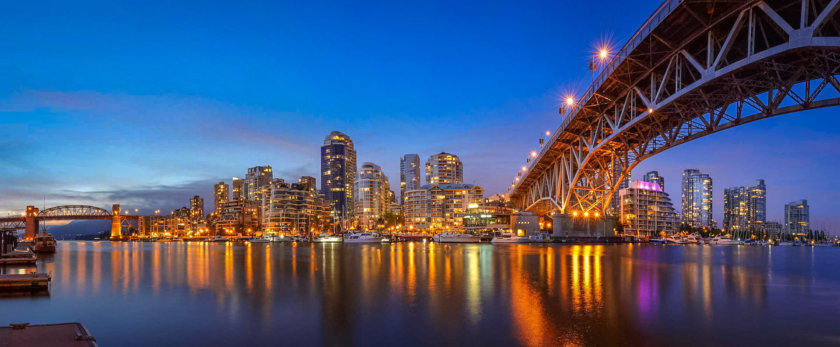
2) Victoria (2 days)
Next on your Canadian itinerary, head on over to Victoria, the capital of British Columbia .
To get there from Vancouver you’ll need to catch the ferry from Tsawwassen , which is about a 45-minute drive south of downtown. The ferry ride takes an hour and a half , costing about $60 for the car and $18 per passenger.
The boat will drop you off at Swartz Bay, 30 km from downtown Victoria .
Before reaching the city, I’d recommend you stop off to visit Butchart Gardens , located halfway between Swartz Bay and Victoria. These gardens are one of the major tourist attractions to check out.
You can take a stroll amidst gorgeous flower beds and trees. The park is organized into various theme gardens , including a rose garden and a Japanese garden.
Then head to Victoria , just a 30-minute drive away.
For the end of the day , you can take a leisurely stroll :
- In the Chinatown District
- At Market Square , where you’ll find shops and restaurants
- Bastion Square
- Along the Inner Harbour , Victoria’s port, where you can admire the city’s most famous hotel: the Fairmont Empress .
Spend the night in Victoria.
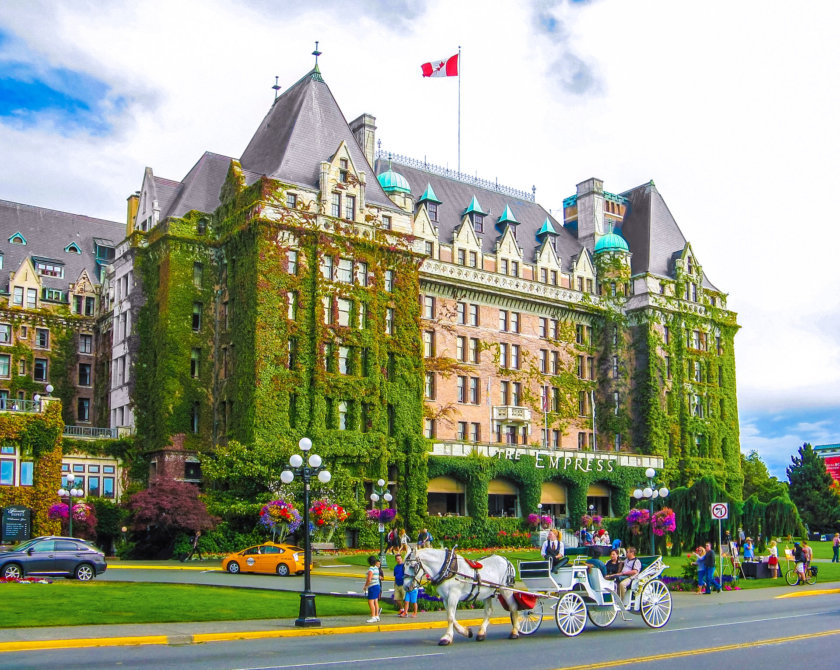
On your second day in Victoria , I recommend you take a boat trip to spot orcas and whales !
There are departures every hour between May and September, and the cruise lasts 3 hours .
After your morning boat ride, head over to the Parliament , which you can visit for free , then visit the Royal BC Museum next door. This museum is the most popular in Victoria. It’s rich and expertly presented, taking you on a journey through the province’s captivating history and culture . You’ll be immersed in interactive exhibits, complete with meticulously crafted reconstructions and captivating scenarios.
For the end of the day, you can go for a walk at Beacon Hill Park , which is by the sea.
Spend a second night in Victoria.
To arrange your boat trip from Vancouver to Victoria , you’ll find all the information on the ferry’s website: BC Ferries .
The best option is to book your tickets in advance.
- Ocean Island Inn | Backpackers | Suites : A centrally-located hostel. Dorm beds start from 30€, breakfast and dinner included. It’s the most budget-friendly option in the city. Perfect for backpackers .
- Robin Hood Inn and Suites: A mere 5-minute drive from the heart of Victoria. Double rooms are spacious and super clean, starting from €100. Strong points: the helpful staff, location, tranquillity.
- Oak Bay Beach Hotel : Seafront location, 5 minutes drive from Victoria. Cozy double rooms with large windows start from €200. Strong points: the view, heated outdoor pool, spa, hotel comfort and prestige.
- Hotel Grand Pacific: Just 100 meters from Parliament and 5 minutes from Beacon Hill. Modern, bright double rooms from €250, breakfast at €15. Strong points: the large indoor pool, bay views, location.
- Fairmont Empress Hotel: A 5-star hotel in the heart of Victoria. Elegant double rooms with exquisite decor from €350, breakfast included. Strong points: the indoor pool, Spa, location.
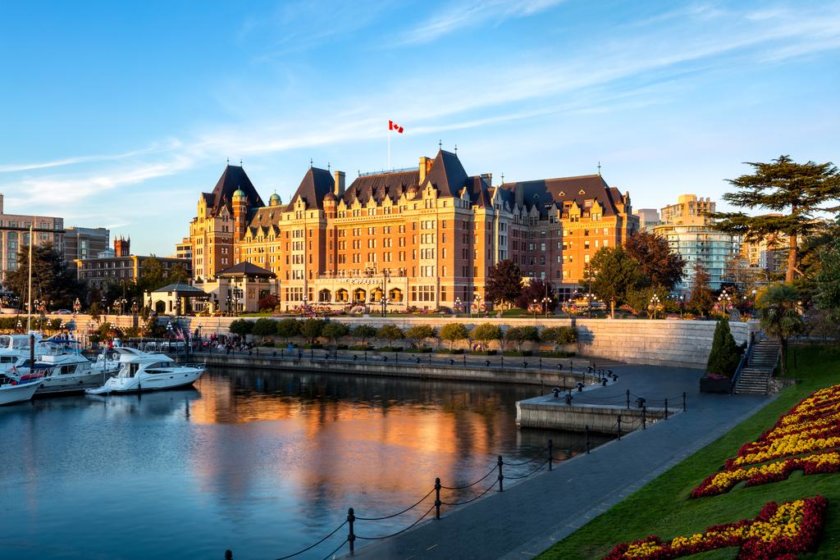
3) Pacific Rim (2 days)
For the next leg of this 2-week trip to Canada , I suggest you discover more of Vancouver Island.
Your day will be dedicated to reaching Ucluelet, 300 km from Victoria . To break up the 4-hour journey and stretch your legs, you can make 2 stops :
- In the village of Duncan , 50 minutes from Victoria. A stroll around downtown will let you admire the multitude of traditional First Nations totems scattered throughout the streets. Follow the yellow footprints on the ground, and you won’t miss a single one.
- At Cathedral Grove (1h20 from Duncan) in Mac Millan Provincial Park, where you can walk along marked trails among stunning centuries-old trees, some of which are over 800 years old!
From Cathedral Grove, it’s another 1h50 drive to reach Ucluelet.
Stay the night in the area.
The next day is dedicated to the Pacific Rim National Park Reserve . From Ucluelet, you can easily explore the part of the park located between the town and Tofino which includes the famous Long Beach .
There are several really nice, easy hikes , like the Rainforest Trail or the Schooner Cove . Don’t hesitate to stop by the visitor center to pick up a trail map.
Spend a second night near Pacific Rim.
- C&N Backpackers – Ucluelet : A seaside hostel with views of the Pacific Ocean. Dormitory beds from €25. Strong points: the garden, the setting, the relaxed atmosphere, the cleanliness.
- West Coast Motel on the Harbour : Located in Ucluelet, 10 minutes from Long Beach. Clean, comfortable double rooms starting at €65. Strong points: indoor pool, friendly staff, harbor view. My favorite for its value for money !
- Pacific Rim Motel : Also located in Ucluelet. Spacious, clean double rooms starting at €110. Strong points: nearby shops and restaurants, comfortable bed, friendly welcome.
- Waters Edge Shoreside Suites : Located in Ucluelet, 10 km from Pacific Rim. Suites with equipped kitchen and balcony with outdoor bathtub and sea view starting from €180. Strong points: magnificent view, jacuzzi, very comfortable bedding. This one’s my top pick for a high-end stay!
- Black Rock Oceanfront Resort : Located a 15-minute drive from Pacific Rim National Park. Studios and suites with a sitting area, kitchenette, and balcony starting at €240. Strong points: outdoor pool, ocean views, attentive staff.
4) Whistler (2 days)
To continue your 2-week tour in Canada , leave Vancouver Island and head to your next stop: Whistler , one of the most renowned ski resorts in Western Canada.
Allocate a full day for the journey from Ucluelet to Whistler. You’ll first need to make your way to Nanaimo (a 2h40 drive) to catch the ferry . After a 1h40 ferry ride, you’ll arrive in Horseshoe Bay . From there, you’ll still have another 1h30 drive until you reach Whistler .
Having arrived in the mid or late afternoon, take a leisurely stroll through the streets.
Spend the night in Whistler.
Day two brings a plethora of options for you to indulge in:
- In the winter , you can indulge in the full spectrum of winter sports : skiing, sledding, dog sledding, snowmobiling…
- Take the Peak to Peak Gondola to reach Whistler’s highest peaks and enjoy a panoramic view of the glaciers and the entire valley.
- Embark on a hike on one of the many trails.
- Go mountain biking.
- Experience Canada’s longest zip-line , for some guaranteed thrills! Activity that can be booked by clicking here !
- Fly over Whistler’s glacier in a seaplane.
- Wrap up your day with a spa session in one of Whistler’s luxury hotels.
Spend a second night in Whistler.
Whistler is the ultimate famed ski resort in Western Canada. Even if you book as early as possible, expect somewhat hefty prices. In the peak winter season, the rates I’m about to give you could likely double.
- Summit Lodge Boutique Hotel Whistler : Located a 10-minute walk from the slopes. A cozy, modern studio equipped with a kitchenette. Starts at €170 per night. Strong points: the comfort and decor of the rooms, super-friendly staff, pool, and hot tub. It’s my favorite for its value for money in Whistler!
- Pan Pacific Whistler Mountainside : Only 150 meters from the gondola departure. Spacious studio, very well equipped with oven, microwave, dishwasher – handy for cooking up your own meals. Starts from €200 per night. Strong points: location, amenities, friendly staff.
- Four Seasons Resort Whistler: Upscale hotel located in the upper part of Whistler. This 5* hotel offers very comfortable, cozy double rooms with mountain views, starting from €400 per night, breakfast at €37. Strong points: heated outdoor pool, SPA, hot tubs, complimentary shuttle service. The best hotel in Whistler for a luxury stay !
For a slightly more economical alternative and if you’re okay with bunking in a dormitory, I recommend staying at the Hi Whistler Hostel . Dormitory bed from €40 per night.
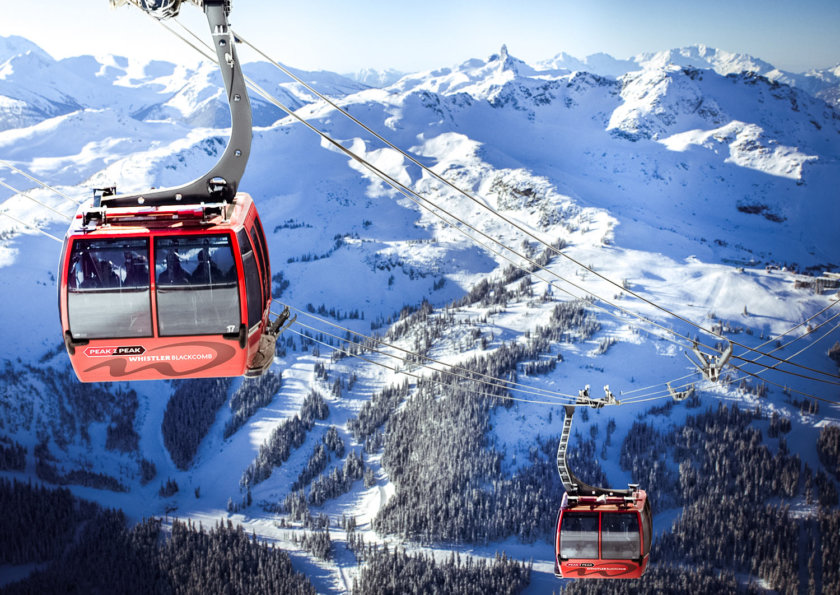
5) Wells Gray Provincial Park (2 days)
Let’s keep the Canadian ball rolling on this 2-week adventure with another big driving day of around 5 and a half hours to get to Wells Gray Provincial Park .
Yeah, it’s quite a long journey, but this park is an absolute must for any trip in western Canada , plus it’s got the bonus of being right between Whistler and Jasper (our next stop).
You can decide to bolt early from Whistler to get to Wells Gray by the afternoon and start your exploration. Or you could just set aside a whole day for a road trip to soak in the scenery and snap a few pics. Worth knowing that Route 99 which you’ll be driving on, is rated as one of the most beautiful roads in Canada , so it’d be a real shame to not take your sweet time.
The next day, spend the day in the provincial park . Depending on your fancy, there’s a whole load of stuff to do and see at Wells Gray :
- The Helmcken Falls, the unmissable site of the park! These are the most famous falls, and you’ve got no excuse not to visit, they’re just a 10-minute walk away.
- The Bailey’s Chute, Spahat Falls and Dawson Falls are also among the waterfalls you shouldn’t miss.
- The Clearwater Lake , where you can have a dip or try canoeing.
- Hiking . One of the most popular is the Trophy Mountain trail, which goes through stunning landscapes and leads to Sheila Lake.
- Go on a black bear hunt , with a guide, of course.
To plan your itinerary in the park, pop by the visitor center. They’ll give you a map with all the info.
Access to Clearwater Lake is via a 26 km dirt road, I’d recommend going only if you’ve rented an SUV .
Just a heads up – the park’s hotels aren’t necessarily the most up-to-date and some may have slightly dated decor or facilities. But for a brief stopover, they’ll do just fine.
And in any case, there aren’t many other solutions.
- Wells Gray Inn : Located at the park entrance. Basic but clean double rooms from €60 per night, breakfast at €10. Strong points: location, outdoor hot tub, friendly reception. An economical and convenient hotel for a night in the park.
- Ace Western Motel : Located 4 km from the park. Double rooms from €120 per night. Strong points: friendly staff, parking space, close to restaurants.
- Best Western Plus Gateway to the Falls : Brand new hotel situated in the heart of Clearwater. Modern, spacious, and comfortable rooms starting at €180, breakfast included. Strong points: great location, comfort, free parking.
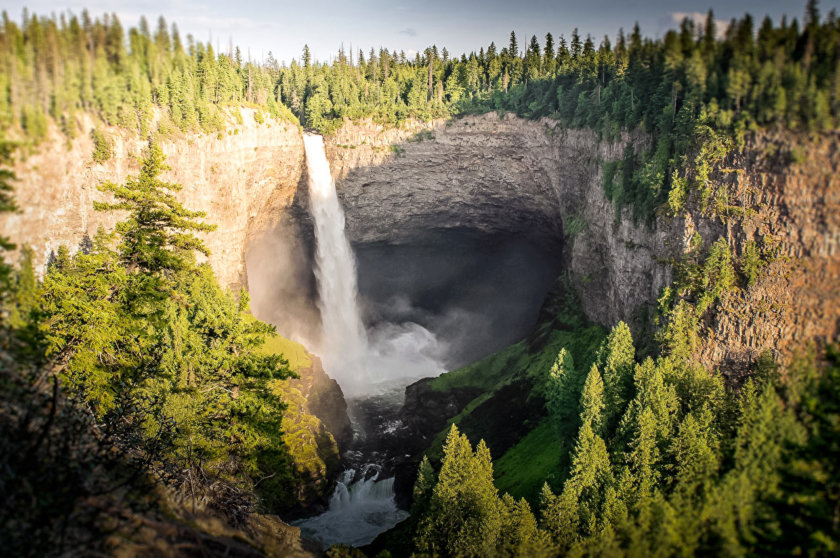
6) Jasper National Park (2 days)
Next stop on this two-week Canadian road trip, we’re heading to Jasper National Park . A UNESCO World Heritage Site , it’s a classic must-see on any good western Canada itinerary.
From Wells Gray Park, you’re looking at around 4 hours of travel to get there. Just before arriving, make a pit stop at Mount Robson , the tallest peak in the Canadian Rockies.
For the rest of the day , you’ll have time to feast your eyes on the 2 most stunning lakes in the national park :
- Maligne Lake , an hour’s drive after Jasper. As the largest lake in the Rockies and home to Spirit Island, it’s one of the most photographed spots in the world. You can take a walk or opt for a 1.5-hour boat trip on the lake.
You should absolutely make sure you book this boat tour in advance to secure your spot (this goes for all activities in Jasper). It’s super easy, just hit the green button below:
- On the way back, between Maligne Lake and Jasper , make a pit stop at the Medicine Lake , another lake you shouldn’t miss.
Spend the night in Jasper, the only town in the national park with some shops, hotels, and restaurants.
The next day, I’d recommend going for a hike. With a wide range of trails suited to all levels , the park is the perfect place for a good stroll. It’s wise to swing by the visitor center to get a map of the different trails.
Here’s a little list of the most popular ones:
- The Maligne Canyon Trail : round-trip distance is 4.4 km with moderate difficulty
- The Cavell Meadows Trail in the Mount Edith Cavell area: round-trip distance of 7 km, moderate difficulty
- The Sulphur Skyline : 8 km round-trip with a hard level because it’s a steep climb of 700 m. And to top it all off, prepare to be blown away by the breathtaking 360° view of the Rockies!
- The Old Fort Point Loop offers superb panoramas of the Athabasca River: distance of 3.8 km with medium difficulty
- The Valley of the Five Lakes : 4.5 km distance and medium difficulty.
After a day of adventure, nothing beats a relaxing visit to the Miette Hotsprings , where you can soak in the outdoor hot springs and bask in an extraordinary view of the surrounding mountains .
For the second day in Jasper, you can also opt for other activities instead of hiking. For all these activities, you must book in advance by clicking on the following orange links:
- Take the sky tram up to an elevation of 2,260 meters for a 360° view of the Canadian Rockies
- Take a guided bus tour exploring the park’s wildlife . You could spot moose, elk, and if you’re lucky, even a few bears.
- Take a bus excursion into Maligne Valley complete with photo stops + wildlife viewing + a guided 4 km hike
- Raft down the Athabasca River
- Take a helicopter flight over the Rockies for an unforgettable experience!
- In winter, there’s also a special tour for exploring wildlife .
Here’s a tip: book your Jasper accommodation ASAP ! Most places are fully booked months in advance, even the campgrounds.
Also, prices can fluctuate wildly from week to week: a room that costs 120€ one week could skyrocket to 350€ the next. So, the hotel prices I’m suggesting are more or less ballpark figures.
- Chateau Jasper : This hotel offers spacious, well-equipped double rooms starting from €110 a night. Strong points: the pool and SPA area, room comfort, value for money.
- Mount Robson Inn: A hotel close to downtown Jasper, just a two-minute drive away. Super quiet double room with mountain views starting from €200 per night, breakfast included. Strong points: tranquility, the two hot tubs.
- Best Western Jasper Inn & Suites : The hotel offers various types of suites with a living area, some with a kitchenette. They’re all super cozy and spacious. Prices start at €230 per night, breakfast included. Strong points: sauna, steam room, pool, good location, warm welcome.
- Fairmont Jasper Park Lodge : Situated 7 km from Jasper, on the shores of Beauvert Lake. Cozy, comfortable double room starting from €400 per night. Strong points: the stunning lakeside location, the heated outdoor pool, the dedicated and attentive staff.
If you’re on a tight budget for sleeping in Jasper National Park, I recommend the Jasper Downtown Hostel . This hostel offers dormitory beds from 30€ a night. Everything is super clean and modern.
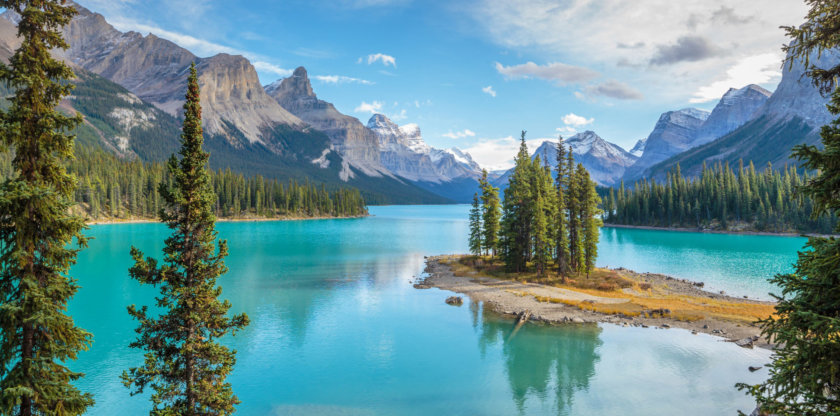
7) Banff National Park (2 days)
You can’t tour Western Canada in two weeks without making a stop in Banff National Park !
From Jasper, you’ll have to take the legendary route of this part of the country: the Icefields Parkway . Known as one of the most scenic routes in Canada, the Icefield Parkways (Route 93) connects Jasper and Banff in 230 km.
The best thing is to set aside a full day to travel it because there are several scenic viewpoints with parking spots where you can stop.
Here are the spots I recommend you absolutely shouldn’t miss :
- The Athabasca Falls , over 20 meters high
- The Sunwapta Falls
- The Athabasca Glacier and the Columbia Icefield . You can visit on foot or by taking a giant-tire bus tour. Activity that can be booked directly by clicking here !
- The glacier’s glass walkway . The bus tour automatically includes access to the walkway, but if you don’t want to take the bus and just step onto the platform, here is the ticket you need !
- Peyto Lake, which you can reach on foot in just 15 minutes. The water’s incredible color is a sight to behold!
All points of interest along the Icefields Parkway are listed on the official website .
As the day winds down, don’t miss the chance to visit the charming town of Lake Louise, nestled next to the famous Lake Louise (I’m not the one making up the names!) renowned worldwide for its intensely turquoise-blue water.
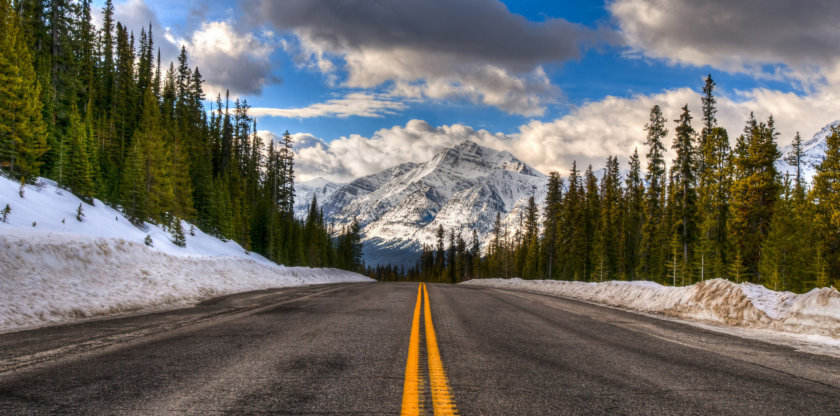
The next day’s agenda will undoubtedly include a hike , the main activity to do in Banff National Park.
Most trails start from Lake Louise (you can actually walk around it in an hour) or from Lake Moraine (tour in 45 minutes). These two walks are among the easy trails, including the hike to the Fairview Lookout to admire the lake (45 minutes).
If you want a bit more of a challenge, I recommend the Six Glaciers Plain hike that takes you through stunning landscapes. Expect about 4 hours of walking round trip.
All possible hikes in Banff can be found on the Parks Canada website .
For added safety, you can also go hiking in the park with a guide . You’ll have a choice between several different routes . All information is available here :
And if you don’t feel like walking, no problem, you can choose between:
- Taking the cable car (click here for tickets) to reach the summit of Sulphur Mountain, at 2,281 meters above sea level. Let me tell you, the view is stunning!
- Embark on a cruise on Lake Minnewanka
- Go horseback riding along the river
- Go on a traditional canoe ride on the Bow River
- In winter, take a guided ice cleat hike in the Johnston Canyon.
Spend a second night in Lake Louise.
Here are some extra tips for arranging your Banff stay:
- Parking lots are available at Lake Louise and Moraine Lake but in the high season (June to September), they fill up pretty quickly. It’s best to get there before 9 AM .
- When parking is full at Moraine Lake , the road is closed and you won’t be able to drive there. Please note that this road is only open between May and October.
- For Lake Louise, free shuttles are available from the village of Lake Louise. They run every 20 minutes until 6 PM.
- The park is home to many bears . It’s strongly recommended to walk in groups, make noise while walking, and carry pepper spray just in case.
To avoid these minor traffic or parking issues , you can also choose the hop-on, hop-off bus that stops at Johnston Canyon, Lake Louise, and Moraine Lake . Hop on and off whenever you want!
The guides will be happy to help you plan your day according to the schedule.
Here, I’m going to echo my advice for Jasper National Park: book early ! And, similarly, brace yourself for the high prices.
- Baker Creek Mountain Resort : Located a breezy 20-minute drive from Lake Louise. This resort offers suites and chalets bedecked in classic mountain style, complete with wood paneling and fireplaces, starting from €280 a night. Strong points: the riverside location, the natural setting, the charm of the chalets. My recommandation for a romantic stay in Banff Park !
- Paradise Lodge and Bungalows : Situated 1 km from Lake Louise village. Wooden suites and bungalows that are both typical and cozy, starting from €300 a night. Strong points: the ideal location, the beautiful setting, and the outstanding welcome.
- Fairmont Château Lake Louise : This is the renowned hotel located by Lake Louise! Elegant and well-decorated double rooms with views of the lake or the chateau park starting from €470 a night. Strong points: the panoramic terrace for lake viewing, the location, the warm staff. The best hotel in Banff National Park for a luxury stay!
For a much more budget-friendly option, consider a night in a hostel. I’d recommend the HI-Lake Louise Alpine Centre . Dormitory beds start at €40 a night – you’ll be hard-pressed to find cheaper! They also offer double rooms starting from €100 a night.
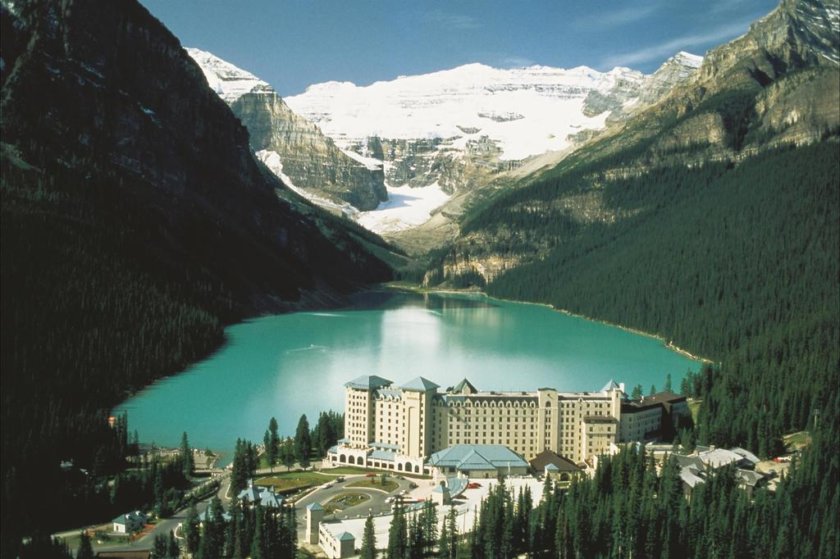
8) Calgary (1 day)
Welcome to the final stop on this 15-16 day itinerary through western Canada.
It’s time to hit the road one last time to reach Calgary , the city where you’ll wrap up your incredible vacation. From Lake Louise, you’re looking at a 2-hour drive .
Use your final day to explore the city .
Here’s an idea of a schedule to discover the main points of interest :
- Visit the Glenbow Museum which traces the history of the city and the Alberta region. It’s the largest art museum in western Canada and is a fascinating visit.
- Ascend the Calgary Tower for a stunning 360° view of the city and a glimpse of the Rockies. There’s even a glass floor 190 meters high for a bit of a thrill. And, like many panoramic towers of its kind, there’s a revolving restaurant at the top. You should get your skip-the-line tickets in advance by clicking here !
- Explore Heritage Park Village : a recreation of a typical Western village from the last century with its shops, forge, and bakery. If you’ve decided to spend 15 days in Canada with your family, this is the perfect activity for your kids. Tickets are available online by clicking here !
- Stroll around Kensington Village neighborhood where you’ll have your last chance to do some shopping and snag a few souvenirs. You could also enjoy dinner at one of the excellent restaurants in the area.
For more details and information on Calgary, check out my article: Best things to do in Calgary !
The next day, all you’ll need to do is head to Calgary airport to catch your flight back home.
For a 14-day trip to Canada , cut out a day in Vancouver.
- Wicked Hostels : This youth hostel is located opposite the Calgary Stampede. Bunk in a dorm from €25, breakfast included. Strong points: the central location, the full breakfast, the warm atmosphere, and free laundry. This is a fantastic budget-friendly accommodation choice in Calgary !
- Coast Calgary Downtown Hotel & Suites by APA : Located right in the city center, 900m from Calgary Tower. Cozy and comfortable studio with kitchen from €130 per night, breakfast included. Strong points: the central location, the full breakfast, the cleanliness. It’s my favorite for its value for money in Calgary !
- Grey Eagle Resort : Located a 10-minute drive from the city center. Modern and comfortable double room starting at €160 per night. Strong points: the indoor swimming pool, the room size, the hospitality.
- Residence Inn by Marriott Calgary Downtown/Beltline District : Located 800m from the tower. Modern, spacious, and fully decorated studio with kitchen, from €210, breakfast included. Strong points: the abundant breakfast, the view from the rooms, the location.
- Hôtel Le Germain : The hotel is located right opposite the Calgary Tower, ideal for exploring the city on foot. Modern and spacious double room from €250 per night, breakfast included. Strong points: exceptional hotel with attentive staff, delicious breakfast, comfortable rooms, the size of the bathrooms. The best hotel in Calgary for a luxury stay !
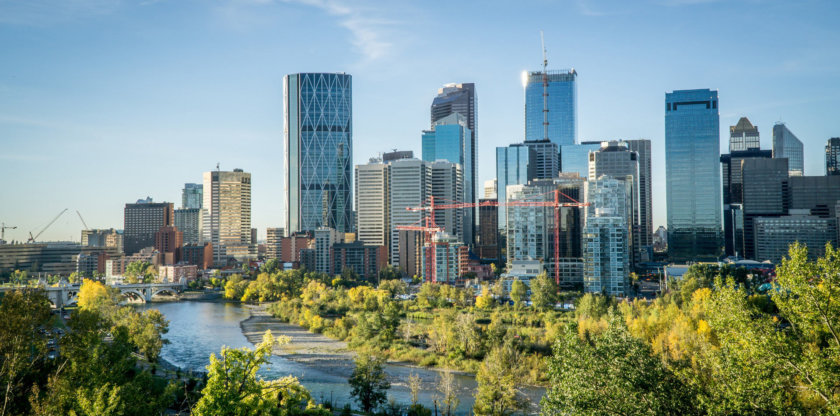
The prices for flights to Canada can vary greatly, so it’s a good idea to compare them as soon as possible. For this, you can use our flight comparison tool, in partnership with Skyscanner. This ensures you get the best price.
Once on the results page, don’t hesitate to compare several websites to make sure no fees are added to the final prices.
Discover all my articles about Canada : All my articles to help you plan your trip to Canada are listed there.
- 20 Best Things to do in Canada
- 20 Best Things to do in Quebec – All best places to visit in the French-speaking province!
- Itinerary: One week in Canada: The perfect itinerary to visit Canada in 6, 7 or 8 days!
- Itinerary: 10 days in Canada: All my best tips for organizing your 10-day trip to Canada
- Itinerary: 2 weeks in Canada: How to visit Western Canada in 15 days.
- Itinerary: 3 weeks in Canada: My epic itinerary to visit Western and Eastern Canada in 21 days
- Itinerary: 1 month in Canada: How to visit Eastern Canada in a month!
- Itinerary: One week in Quebec: How to visit Quebec in 6, 7 or 8 days, with all my best tips!
- Itinerary: 10 days in Quebec: An amazing 10-day itinerary in Quebec
- Itinerary: 2 weeks in Quebec: All my best tips to visit Quebec in 14, 15 or 16 days
- Itinerary: 3 weeks in Quebec: the perfect 3-week road trip in Quebec !
- Road trip in Canada: The best itineraries for 7, 10, 15, 21 days and 1 month
- Road trip in Quebec: The best itineraries for 7, 10, 15 and 21 days
- Calgary : Top 11 things to do during your visit
- Montreal : 33 best things to see and do
- Ottawa : 15 epic places to visit
- Quebec City : Top 17 things to do and see
- Toronto : The 17 things to do during your stay
- Vancouver : Top 25 places to visit and activities
- Toronto in 3 days – The perfect itinerary to visit the city in 72 hours!
You’re using Pinterest? Here is the picture to pin!
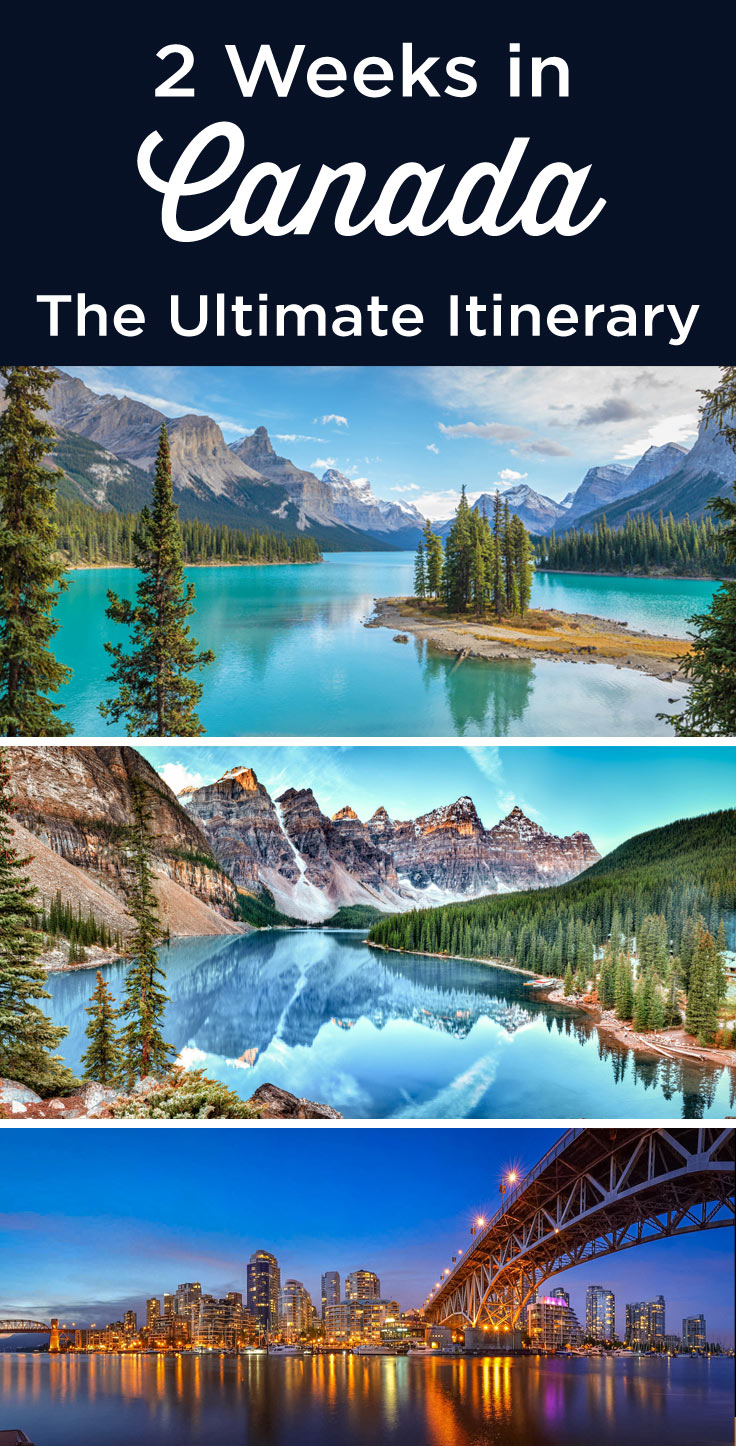
Creator of the Voyage Tips blog, travel and photography lover. I give you all my best tips to plan your next trip.
Related Stories
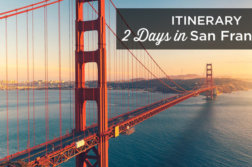
2 Days in San Francisco: The Perfect Itinerary (First Time Visit)
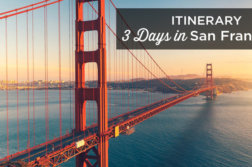
3 Days in San Francisco: The Perfect Itinerary (First Time Visit)
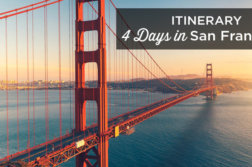
4 Days in San Francisco: The Perfect Itinerary (First Time Visit)
Leave a reply cancel reply.
Your Name (required)
Your Email (required)
Your Website (optional)
Save my name, email, and website in this browser for the next time I comment.
- Middle East
- North America
- Cheap car rentals: my best advice
- Back to Homepage
Plan Your Trip
Travel tips & resources for your visit, getting here, getting around, border crossing, know the ins and outs of crossing the border, accessibility, guide to parking in niagara falls, additional information, check out our visitor's guide.

Home » Destinations » North America » Canada » 13 Must-Knows When Travelling To Canada For The First Time
13 Must-Knows When Travelling To Canada For The First Time
Links in this article may earn us a little money if you book/ order stuff. More here .
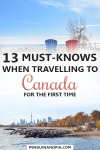
Tips for Travelling to Canada for the First Time… From a Canadian!
So, you travelling to Canada, eh? Good for you! Whether you are travelling to Canada for the first time as a tourist, as an immigrant, or just up from the US on a short trip, there is lots of information you should know about! We breakdown helpful tips for travelling to Canada.
Now, we wouldn’t call ourselves a Canada travel blog exclusively, but we do have lots of Canadian content. After all, half of Penguin and Pia (Eric) is a die-hard Canadian born and raised!
Lisa visited and lived in Canada for a few months on a Canadian Working Holiday Visa and so this post is full of some things she would have liked to know before heading over to the land of the maple leaf! So, here is our list of things to know before visiting Canada!
Table of Contents
General Information About Canada
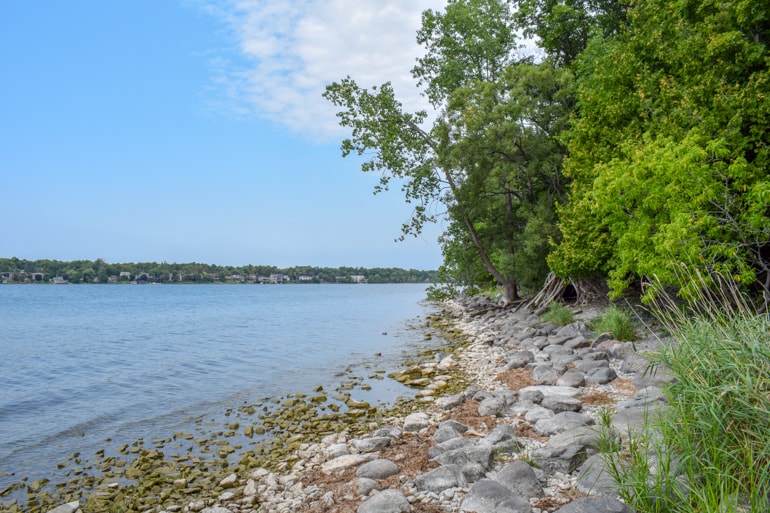
Canada is located in North America. What comes as a surprise to some is that Canada is the second biggest country in the world.
Its capital is Ottawa – sometimes people think it is Toronto because that is the biggest city in the country with about 5.5 million people (in the Great Toronto Area).
Other big cities are Halifax in Nova Scotia, Montreal in Quebec, Calgary in Alberta and Vancouver in British Columbia.
- Canada has a population of about 36 million people. Fun Fact: Canada has about the same population as the state of California.
- The country is huge but well over 80% of the population lives within 100 miles (160 km) of the US border.
- There are actually two official languages in the country – English and French. French is primarily spoken in the Province of Quebec and some parts of the East Coast, while English is the main language in the rest of the country.
- Canada is a very multicultural country and Toronto is consistently named one of, if not the most, culturally and ethnically diverse city on the planet.
- There are 10 provinces and 3 Territories.
- There are 5 major time zones across the country. There is also one time zone on the East Coast that is only a half hour difference so you likely don’t need to worry about it.
Visa Information to Visit Canada
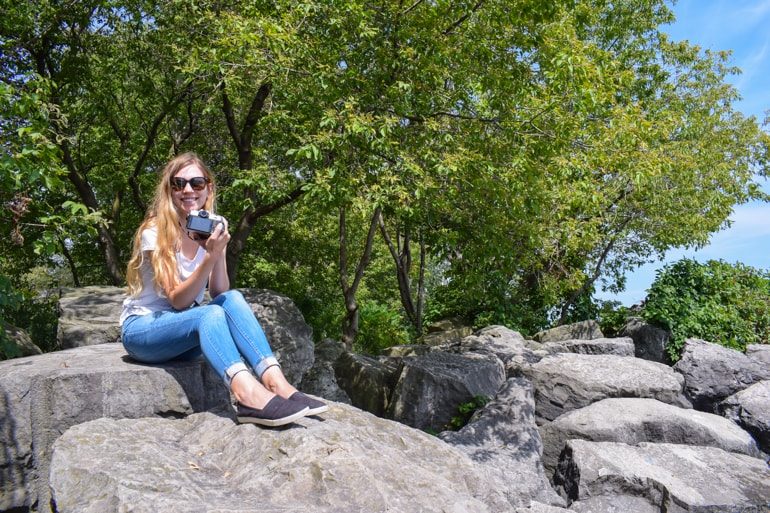
If you are travelling to Canada, some travellers have “visa-free” travel depending on their passport. However, even with “visa-free” entry to be a tourist, many European travellers STILL need an eTA.
An eTA stands for Electronic Travel Authority. It is applied for online and for 7 Canadian Dollars, and you have a number linked to your passport information.
You must have to fill out a few simple questions as a “pre-screen” and you will be granted your eTA. You do get a confirmation email with your eTA number but you don’t have to print it out. Do, however, keep that number written down or yeah, just print the email if you want to be extra secure.
Watch out for visa companies charging crazy amounts for the Canadian eTA. Here is the Official eTA Website through the Government of Canada . It costs $7 Canadian. It shouldn’t cost $39 CAD or 39€ (as we have found online through other services).
If your passport doesn’t allow for “visa-free” entry to Canada, you will need to apply for a Tourist Visa. You can find more information about applying for a Tourist Visa to Canada here .
A Super, Super Brief Lesson on Canadian History
Canada was originally settled by our Indigenous Peoples (First Nation, Metis, and Inuit) before European explorers arrived (French and British, mainly).
Wars were fought between the British and the French colonies in Canada and wars were then fought against the Americans in 1812.
We actually burned down the White House – true story. Those remaining colonies (mainly British in origin but also French-speaking Quebec) gained independence from Britain in 1867. In fact, we just celebrated our 150th birthday in 2017.
Debunking Canadian Stereotypes
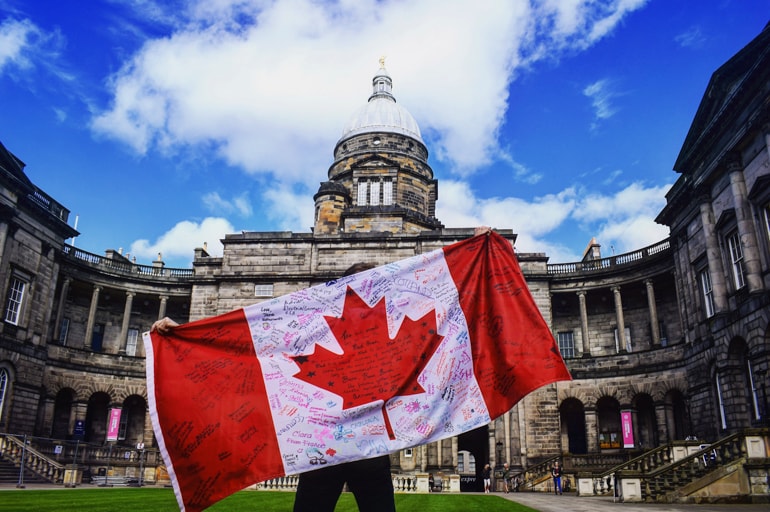
Canadians are not all lumberjacks, fur traders, fishermen, or hockey players. Not every Canadian knows every other Canadian – remember, there are 36 million of us.
Although, we do really love hockey or “ice hockey”. The rest of the world usually says “ice hockey” because they actually have more than one type of hockey – field hockey.
We don’t all drink maple syrup from the bottle (although Eric has been known to do that on occasion). We’re friendly and usually pretty polite. Generally, people are willing to help you if you ask for directions or need something.
Canadians are patriotic, not nationalistic. This means that we are proud to be Canadian, but we don’t think that “being Canadian” makes us better than anyone else.
Paying and Tipping In Canada
Money in Canada is renowned for looking like “Monopoly” money. This is because the money is now plastic and each denomination of bill is a different colour.
This is very different from U.S bills, which are all green and made from a mix of cotton and paper. Canadian money makes it easy to actually understand how much money you have at a glance.
You can get Canadian Dollars (CAD) in $100, 50, 20, 10, and 5 bills. Then we have coins which can be dollars and cents – and yes, they have funny names. A dollar coin is gold, has a loon (the bird) on it, and is called a “loonie”.
A 2 dollar coin is two colours, has polar bears on it, and is called a “toonie”. The next coin is 25 cents – called a “quarter”, 10 cents – called a “dime”, 5 cents – called a “nickel”.
We used to have 1 cent and it was called a “penny” but they got discontinued in 2012 because they became basically useless.
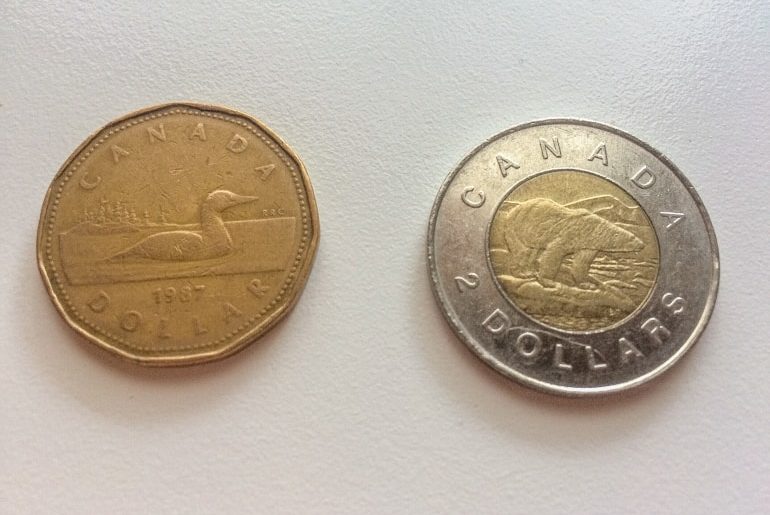
That’s another thing to know – rounding of prices. Because we got rid of the penny, if you pay for something in cash, it will be rounded up or down to the nearest 5 cent interval.
If you pay by card, the amount will be paid as exactly the amount. So don’t be surprised if your coffee at Tim Horton’s costs 3 cents more when the cashier cashes you out!
In Canada, tipping is expected for service. Generally, tipping is 15% of the bill but it is not uncommon to tip to 20% for great or outstanding service.
Sometimes, if you eat out as a larger group (usually of 6 or more) the tip may get added automatically so if you are unsure just ask your server. Even if service is bad, you would still tip a lesser amount – perhaps 10% – but not tipping anything can be seen as rude.
If you are at the bar, tipping is also recommended but it certainly depends on the setting. If you order a beer and pay with cash, you’d toss a coin (loonie or toonie) on the bar as a thank you for quick, friendly bar service.
Plugs/Electronics Used in Canada
In Canada, we use the North American-style plug. That’s the two-prong style like in the United States. Sometimes, there is a third prong and that is for “grounding”.
This means that if you are travelling to Canada from Europe, you’ll need to buy an adapter for the kind of plug you have to fit Canadian outlets.
As for voltage, we use 120 volts in wall outlets which you can find in coffee shops, airports, and USB chargers in more and more long-distance buses.
Many electronics these days can handle a range of voltages but bringing a European appliance that runs on 230 or 240 volts and plugging it into a lesser voltage Canadian wall outlet means that might not work as well/at full power. Check the label of your electronics for the supported voltages.
If your electronic isn’t compatible with a 120-volt plug, then you will need to buy BOTH a voltage converter AND an adapter. Buying a travel adapter that can handle different voltages can save you some worry.
You can find one exactly like that here. It even includes USB ports for charging smaller electronics (cameras, phones, etc).

Weather and Climate in Canada
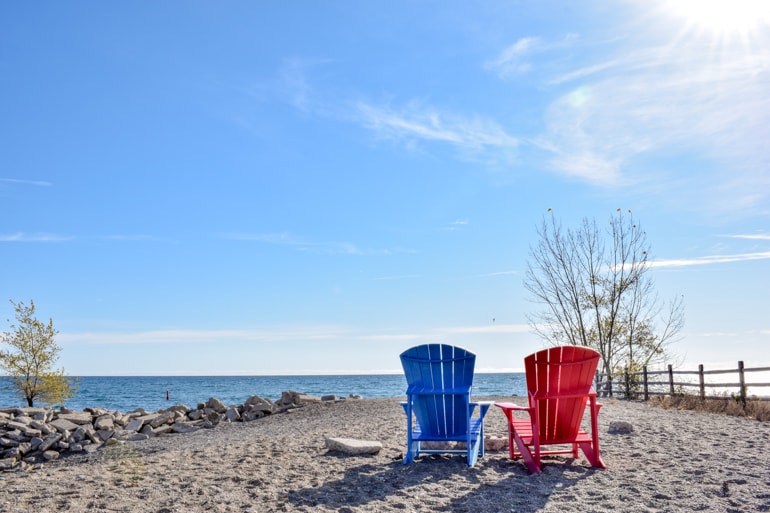
Canadian weather is all over the place. No, seriously – we wrote a whole guide on the best time of the year to visit Canada and it was a nightmare! Canada is so large that the climate and weather will vary depending on where you are and at what time of the year.
Ontario, for example, has four distinct seasons – and the temperature can go from -30 degrees Celsius in the winter to +35 degrees Celsius in the summer. Ontario is also notorious for humid summer heat as opposed to dry summer heat. This means that even in the shade, you still sweat!
The West Coast, like Vancouver, experiences a maritime climate – like in the UK. The summers never get too hot, the winters don’t get snowy. Vancouver experiences rain in the winter months from November to April.
In the Rocky Mountains, the summer can be hot and the winter blankets them in a fair amount of natural snow.
Atlantic Canada (far East Coast) enjoys ocean breezes and sunny summers but brutal winters. Climate and weather really vary so be sure to look at where you want to visit and in what month to best prepare for the temperature and conditions!
If you want to read up on what you should pack depending on when you are travelling, where you are going, and the activities you are doing, read our comprehensive packing list for Canada !
Public Transportation in Canada
The biggest difference between Canada and Europe is that Canada doesn’t make use of public transport (specifically regional trains) in nearly the same way.
This is partly because the country is so large and things are very spaced out – it wouldn’t necessarily make sense.
In Canadian cities, there is usually a metro and bus system that is pretty good to get you around the whole city – Montreal, Toronto, Vancouver, etc. Outside the cities – that’s a tough one.
As I said, Canada is large. As such, neighbourhoods outside of cities sprawl for ages and ages. Between towns outside the cities, there can be vast expanses of farmland, forest, or other landscape. Point is – to get around – you need a car.
We have some regional trains – these only exist in city centres to bring people into and out of the cities (eg. Toronto). They don’t take you anywhere else, and they certainly don’t connect the whole country.
We also have regional buses (Greyhound, GO Bus in Ontario, etc) but these only get you so far. Fares are cheap, but people don’t utilize the buses since they rely on cars.
We have a national train system and company (ViaRail) that does cross the country. However, it can be very expensive to take the train. Even short routes between Toronto and Montreal (5 hours approx by train) can be hundreds of dollars.
As a visitor, the rental car and the price of gas are going to be cheaper than the train and you’ll have the autonomy to drive where you want once you get there. We talk about rental cars in the driving section down below!
Language Spoken in Canada: English and French
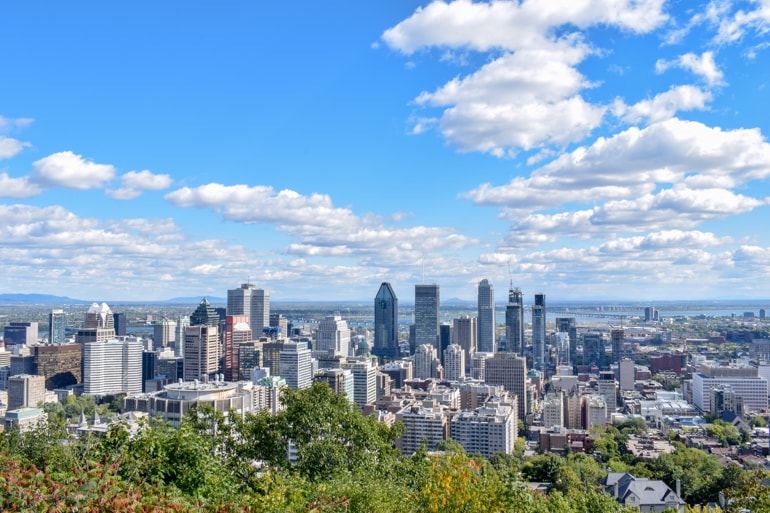
If you’re travelling to Canada the first time, you’ll very quickly find out that we have two official languages: English and French. That said, there are certain places where you wouldn’t need to use the other.
For example, you would basically never speak French in Toronto, and in parts of rural Quebec, you won’t find an English speaker. Montreal is a bilingual city and you can get by in English easily.
If you are from abroad and you speak English and another language that is not French, there is a chance you will find someone who speaks that language in a city like Toronto – but don’t count on it. It’s not uncommon to hear multiple languages in a coffee shop in Toronto.
That said, one time in a coffee shop in our neighbourhood in Toronto, there was a woman with her two kids speaking German. When one of the kids dropped something, Lisa helped out and spoke in German.
The woman was super surprised and happy to hear German from a stranger. Many tour operators conduct their business in multiple major languages and many attractions or museums have multiple languages provided. It’s best to check websites for attractions beforehand if you are unsure.
Renting a Car & Driving in Canada
Driving in Canada is done so on the right. We use a weird mix of the metric system and the imperial system but when it comes to driving it’s all metric.
We measure gasoline in litres and distances in kilometres. The speed limit on most major highways is 100 km/hr but the usual driving speed is between 110-120 km/hr.
Smaller highways and regional roads can be 80 km/hr or even 60 km/hr, while roads in cities and smaller neighbourhoods at 40 km/hr or posted at 25 km/hr for school zones. Just watch for signage. It’s usually pretty clear what the speed limits are.
Canada has all the major rental car brands like Enterprise, Budget, Hertz, or Avis. The minimum age to rent a car differs by province but is generally around 21 or as high as 24/25.
It’s a common practice and you’ll find them at airports and in many of the larger centres and even smaller towns have a rental a car depot for pick-up and drop-off. If you want to rent a car in Canada, you can compare rental car prices across companies in Canada here .
Safety While Travelling in Canada
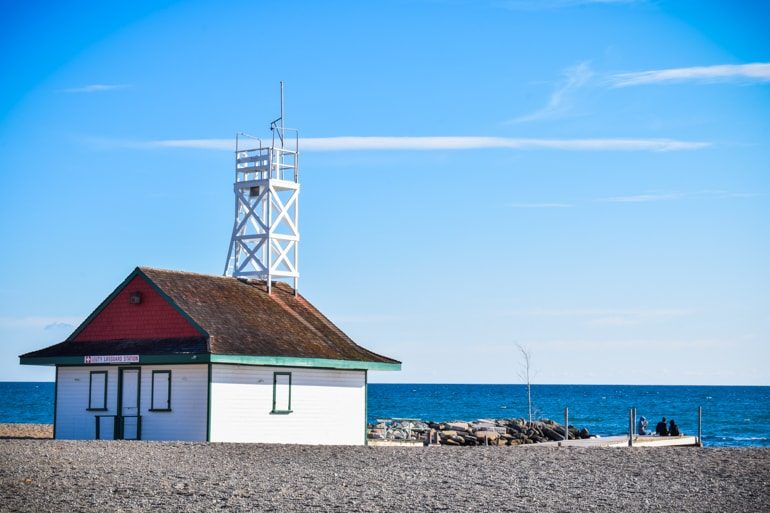
Generally, Canada is a very safe country. The country is politically stable and Canadians enjoy many freedoms. That said, you will always need to take the usual precaution when travelling. In bigger cities, pick-pocketing can and does happen in tourist areas.
Driving in Canada is also very safe – different cities have more aggressive drivers (Montreal) but it’s nothing too crazy. Once you’re in the country, you’ll drive for ages and have roads with far less congestion.
If you are driving, be sure to know how to change the spare tire, and have the number for CAA ( Canadian Automobile Association ) on hand if you ever need roadside assistance.
In the mountains and backcountry (especially in national parks in Western Canada), there are lots of dangerous wildlife (like grizzly bears) that you need to be aware of.
Canada, in general, is full of amazing hiking trails through lots of remote areas and hiking trails that can be dangerous if you are unprepared for the terrain and the climate.
Water is another big thing in Canada – since there are so many lakes, rivers, and waterways. Boating safety (canoeing, kayaking, motor boats, and the water sports) should be done correctly and with the right gear.
In nature, waterways, dams, and waterfalls need to be respected. In the wintertime, check for signs or ask locals about ice on lakes and waterways. Even if ice looks safe to walk on, you have no idea how thick it is.
Canadian Slang
There are lots of different sayings, phrases, and terms you might want to know before you go. This way, you’ll be prepared for any conversation or situation that comes your way.
One of the biggest things that Canadians do actually say is “eh”. Eh is used at the end of a sentence or statement to bring emphasis, agreement, or to ask a question or opinion.
For example, you might say to someone “The Leafs [Toronto Maple Leafs] had quite the game last night, eh?” With the “eh”, the person is asking for confirmation of what you said about the Leafs and/or your opinion on the game.
Some other Canadian slang words that you might hear:
- Clicks – short for kilometres. “The park entrance is just about 2 click down the road”.
- Timmies – short for Tim Horton’s. This is a very Canadian brand and is a popular donut/coffee shop.
- Double Double – a coffee ordered with two cream and two sugars at Tim Hortons.
- Timbit – a small donut at Tim Horton’s. They are really good – go grab a “10 pack of Timbits”
- Toque – is a winter hat with a pom pom (or not). You might call it a “beanie”… it’s a toque.
- Pop – is the word for soda or for soft drinks. Pepsi is pop. Sprite is pop. Fanta? That’s pop.
Cultural Need to Knows – Small Talk and “Sorry!”
One of the things that surprised Lisa (as a German) about Canada was the amount of small talk that happens.
Now, it’s not like Canadians won’t shut up – but compared to Germans, we talk quite a bit more. Waiting in line for food, on the subway, waiting for the ATM, you name it – people do tend to chat!
People can be particularly chatty at the cash register or in the gas station. So, if you want to get to know what the locals are like – feel free to strike up a conversation if you think the situation allows for it. You never know what you might find out!
Another thing that you will find is that Canadians apologize – a lot. We tend to say sorry often – and for things that we don’t really need to be sorry for.
If you bump into someone on the street, it’s typical that both people will say sorry regardless of who was at fault! I’ve even bumped into a bar stool or other object and instinctively said “sorry”. I’m not even kidding.
Canadians aren’t actually truly sorry for faults or for bumping into people – “sorry” is used more in a way that states that “I’m aware that other people exist in the community around me”. It’s more of a collectivist thing, I guess – but I don’t mind!
And there you have it – our guide on travelling to Canada for the first time! Obviously, we couldn’t cover every aspect of your Canada trip but we tried our best to get you ready with useful things to know.
In another post, we’ll cover a Canada itinerary to help you actually plan your trip route. Canada is a beautiful country that is amazing to explore.
I haven’t even seen most of it myself – and each time I write a post, it makes me want to play tourist in my own backyard! Someday soon – it’s on the list!
As always, Happy Canada Waddlin’, eh? -L&E
- Compare flights on Skyscanner
- Check for Hotel Deals or Book A Hostel
- Get A Rental Car (depending on the destination)
- Research plug types and possibly get a travel adapter
- Go over our packing list
Related Articles
If you are in need of more Canada travel tips and information, perhaps a few of these posts can get you started:
- Here are 26 Top Attractions Across the Whole Country !
- Explore Ontario: Visit Niagara on the Lake Wineries or Rent a Cottage !
- A Local’s Guide to Vancouver Sights and Our Vancouver Neighbourhood Guide
- Explore Montreal: A Where to Stay Guide and One Day Itinerary
- Explore Toronto: Where to Stay , Top Attractions , and a One Day Itinerary
Pin it for later!
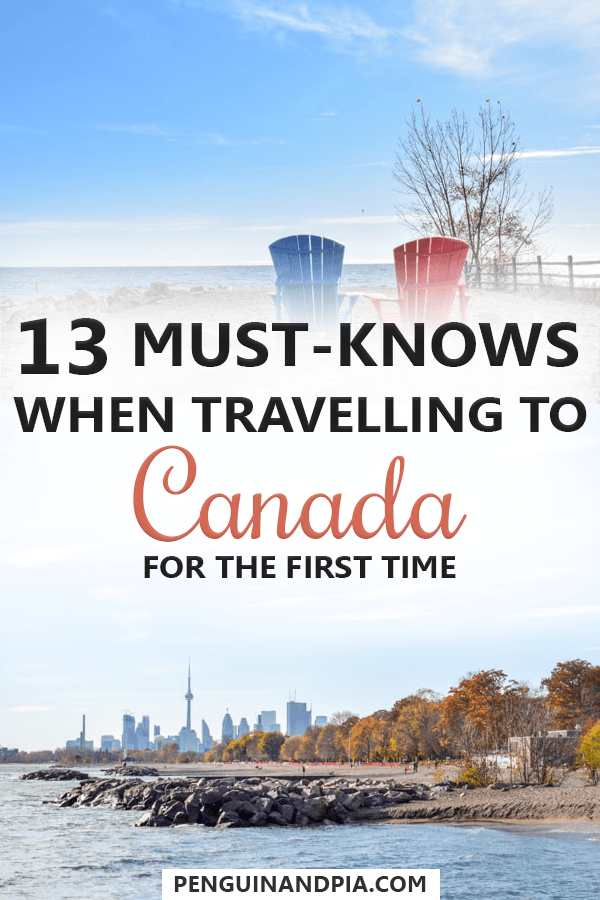
As an Amazon Associate we earn from qualifying purchases.
Destinations
Privacy policy
Disclaimer & Affiliate Disclosure
Terms of use
© 2024 Creativlier Media Inc.
Our local experts can design your trip based on your preferences
Warning - You are using an outdated browser. Please upgrade your browser to properly view this website.

- Destinations
- North america
- Plan your trip
Planning a trip to Canada
Plan your trip to Canada with our in-depth travel advice:
Visa and entry requirements
Embassies and consulates, health and safety, money and budgeting, what to read.
US citizens travelling by air between the US and Canada must present a current passport. Amtrak also requires a current passport if travelling by rail between the US and Canada. Permanent residents in the US must bring their green card. For most updated information visit the Citizenship and Immigration Canada website at www.cic.gc.ca/english/visit/visas.asp .
All physical importation and exportation of currency and monetary instruments equal to or greater than $10,000 must be reported to Canada Customs, tel: 800-461 9999 in Canada and 506-636 5064 or 204-983 3500 outside of Canada. You can also access information at www.cbsa-asfc.gc.ca/noncan-eng.html .
The embassies, high commissions and consulates listed below are all to be found in Ottawa.
Australia: High Commission, Suite 710, 50 O’Connor Street, Ottawa, Ontario, K1P 6L2; tel: 613-236 0841 or 888-990 8888, www.cbsa-asfc.gc.ca .
Great Britain: High Commission, 80 Elgin Street, Ottawa, Ont ario, K1P 5K7; tel: 613-237 1530, www.gov.uk/world/canada .
Ireland: Embassy of Ireland, Suite 1105, 130 Albert Street, Ottawa, Ontario, K1P 5G4; tel: 613-233 6281.
New Zealand: High Commission, Metropolitan House, Suite 727, 99 Bank Street, Ottawa, Ontario, K1P 6G3; tel: 613-238-5991, www.mfat.govt.nz .
South Africa: High Commission, 15 Sussex Drive, Ottawa, Ontario, K1M 1M8; tel: 613-744-0330, www.southafrica-canada.ca .
US: Consular Section, US Embassy, 490 Sussex Drive, Ottawa, Ontario K1N 1G8, tel: 613-238 5335, https://ca.usembassy.gov .
Getting to Canada
Air service is available from most major European cities to one or more of the following Canadian gateway cities: Halifax, Montréal, Toronto, Winnipeg, Calgary, Edmonton and Vancouver.
Frequent flights connect the major US cities and some European capitals to centres across Canada. Flying time from London to Toronto is 71⁄2 hours, from New York 11⁄2 hours. The journey from London to Vancouver takes 91⁄2 hours (7 hours from New York). The largest Canadian air carrier is Air Canada, tel: 888-247 2262, www.aircanada.com (among many other things, this site has an extensive list of international contact numbers for Air Canada). Travel operators feature many charter flights and package tours, including city stays, camping holidays, adventure tours and northern expeditions. Hotel accommodation and car/RV hire is often included in the package.
Marine Atlantic ferries carry cars and passengers between Bar Harbor, Maine and Yarmouth, Nova Scotia – a journey of some six hours (tel: 800-341 7981, www.marineatlantic.ca ). On the West Coast, the Victoria BC Clipper Ferry Service runs boats between Seattle and Victoria. It’s a good idea to reserve passage well in advance for peak periods, tel: 250-382 8100 in Victoria, (206) 448-5000 in Seattle, toll-free 800-888 2535, www.clippervacations.com . Also on the West Coast, BC Ferries is the main carrier, www.bcferries.com or tel: 888-223 3779 in BC or 250-386 3431 from outside the province.
Travel from the US to Montréal is via US Highways 87, 89 or 91. If you’re heading for Toronto, follow the Queen Elizabeth Way from Niagara Falls, or Highway 401 (Macdonald-Cartier Freeway) from Detroit; US Interstate 5 leads to Seattle and the Canadian border. From there, it’s just half-an-hour’s drive into Vancouver on Canadian Highway 99. Maps that outline other points of entry to Canada from the US can be obtained from a company called MapArt which specialises in all maps of Canada, printed and digital (tel: 905-436 2525, www.mapart.com ).
Getting around Canada
Most cities and large towns lie on or near the Trans-Canada Highway, the country’s main east–west artery. It crosses southern Canada from Newfoundland to Victoria on the Pacific, a distance of 7,821km (4,860 miles). The going is slower in the rural north, where roads may be unpaved.
Canada has two national airlines and many more regional and local carriers. Frequent scheduled and charter flights connect the cities and larger towns, while light planes provide regular service to places that are inaccessible by road. Seaplanes shuttle between coastal towns and offshore islands.
Greyhound routes cover Canada from coast to coast, and many regional companies cooperate to provide convenient country wide connections. Stopovers may be made on most lines, and passes for cheap travel during specified periods may be available. Greyhound’s Discovery Pass is valid for certain routes into Canada.
Cross the country by train (travel time: five days), or take a series of short, scenic journeys – up into the Arctic on the Polar Bear Express, for example. It’s essential to book well ahead for these routes during the tourist season. The national company is via Rail. Several smaller lines operate regional services: the Ontario Northland, Algoma Central and the Rocky Mountaineer. Long-distance trains have observation, dining and sleeping cars (with berths, roomettes and bedrooms).
Car and passenger ferries shuttle year-round between the mainland and offshore islands. Ferries also serve central Canada’s lakes and rivers. Two popular routes are BC Ferries’ Port Hardy to Prince Rupert run by way of the magnificent Inside Passage, or the spectacular crossing on the Manitoulin Island Ferry from Tobermory to Manitoulin Island in Lake Huron. A replica steamship plies the St Lawrence River between Kingston and Québec City, and the nostalgic Paddlewheel Queen and Paddlewheel Princess cruise Manitoba’s Red River. You can even sail Hudson Bay on a tour or charter boat.
Local transport
You’ll have no problem getting around the cities on public transport, via the underground (subway), bus, tram or trolleybus. The newest thing in Canadian rapid transit is the light railway. Toronto, Edmonton, Calgary and Vancouver, among other cities, have introduced this system.
Subway tickets or tokens may be purchased singly or in sets, at newsstands or in stations. When you board a city bus in Canada, have the exact fare ready. Drivers never carry change. Get a transfer if you need to connect to another line.
Taxis wait for customers at airports, railway stations and hotels. Hail a cab in the street or ask for one by telephone (look in the Yellow Pages under Taxicabs). A 10–15 percent tip is customary.
Medical care
Large hotels will have a contact number for a doctor or nurse. You can also seek treatment for minor complaints at medical centres in many cities. Hospital care in Canada is of a very high standard, and casualty departments generally give swift and efficient service. But medical fees can be costly, so make sure your travel or health insurance will cover you while in Canada. In an emergency, call 911 for assistance.
Crime and safety
Incidents of urban violence and street crime are rare in Canada. People walk about comfortably after dark in the country’s town centres. Nevertheless, it’s always good to take a few common-sense precautions. Avoid badly lit or run-down areas at night. Store any valuables and reserves of cash in the hotel safe. Be sure to lock your car and hotel room. Keep a photocopy of your plane tickets and other personal documents, with a note of the phone number of your travel agent; they could come in handy in case of loss or theft. If you see a crime being committed and you want to report it, you can call Crime Stoppers (échec au crime). Crime Stoppers is a national organisation dedicated to serving Canadians by making it possible for those who have information concerning a crime to contact the police and still remain anonymous. Tel: 800-222 tips (8477).
The Canadian and US dollars have a different rate of exchange. All dollar prices quoted in this book are in Canadian dollars. Current coinage comprises: 1cent (a penny), 5 cents (a nickel), 10 cents (a dime), 25 cents (a quarter), $1 (a loonie), and $2 (a toonie). Bank notes come as $5, $10, $20, $50 and $100.
To get the best rate, exchange your money before leaving home. Canadian banks and foreign exchange bureaux will convert funds for a fee. US funds are readily accepted by many department stores and hotels, but may not offer the most advantageous rate.
Airport/hotel porter, per bag$1
Maid, per day$2
Waiter15 percent
Taxi driver10–15 percent
Tour guide 10 percent
Budgeting for your trip
Accommodation and food
The daily costs for an average traveller in Canada varies considerably across the country. In the large cities – Vancouver, Toronto, and Montréal – the comfortable daily cost should be about $250 ($170 for hotel, $10 for breakfast, $20 for lunch, $40 for dinner and $10 for public transport). Accommodation and food costs generally decrease away from the main centres, except in the far North. A thrifty traveller in the city – and an average traveller in more rural areas – might get away with about $160–185 per day ($100–125 for accommodations, $50 for restaurant food, or as little as $20 self-catering and $10 for fares). For extravagant luxury in the city – and in hot spots such as Banff, Whistler, and Mont Tremblant – you could pay $700–800 per day ($300–500 for accommodation, $25 for breakfast, $75 for lunch, as much as $200 for dinner and $100 for taxi fares). Other costs of note: a bottle of wine in a restaurant will generally cost from $16, beer $5–6, cocktails from $6.
Public transport
Underground (subway), bus, tram or trolleybus $2.50 and up. Series of tickets and monthly passes are available at lower rates.
Starting tariff $3, plus at least $1 per km on average.
Canada: A People’s History, Vol. I and II by Don Gillmor, Achille Michaud, and Pierre Turgeon. These richly illustrated books tell the epic story of how Canada came to be the nation we know, from its earliest days.
Smalltown Canada by Stuart McLean. A well-known author and radio host takes his readers on a cross-country tour of small-town life in seven communities across Canada, presenting a humorous, rich portrait of the people and their history.
The Two Solitudes by Hugh MacLennan. This novel, first published in 1945, has become such a classic that the title has moved into common parlance to describe the linguistic and cultural conflicts between Canada’s two founding nations.
This is my Country, What’s Yours? A Literary Atlas of Canada by Noah Richler. Originally a cbc radio documentary, Noah Richler interviewed the who’s who of Canadian literature about the places and ideas that are most meaningful to their work, to create a bold cultural portrait of contemporary Canada.
Popular trips in Canada
Mexico's Highlands and Coast
Vietnam Culinary Experience
Completely Galapagos on M/Y Beluga
Read more from the travel guide to Canada
- Top attractions
- Historical highlights
- Cultural features
- Top restaurants

16 things to know before visiting Nova Scotia

May 22, 2024 • 7 min read

Get the most out of your visit to Nova Scotia with these local tips and insight © aprott / Getty Images
As a born and bred Nova Scotian and a one-time tourism promoter, I’ve been welcoming and advising visitors for decades.
This is my home and my playground, and I never tire of exploring Nova Scotia ’s nooks and crannies. There’s always a new winery or restaurant, a kayaking tour or an Indigenous experience to renew my appreciation of the home I thought I knew.
The good news is that my fellow Nova Scotians are just as eager to receive visitors. On a whale-watching tour, the captain will invite you into the wheelhouse for a yarn. It’s their fishing boat – they're eager to show it off. At a winery, the vintner is more than happy to talk about varietals and the organic approaches to growing them. Inside a rural museum, an interpreter might invite you to help fit that next board onto the dory they're building. Their great-grandparents might have built similar boats here.
Nova Scotia is very safe, but more than that, its people are ready to welcome visitors with open arms, a glass of wine and a tale or two, some of which might even be true. Get the most out of your trip to Nova Scotia with these things to know before you go.

1. Plan to spend at least three days in Nova Scotia
A common misconception among visitors to Nova Scotia is that it’s driveable in a single day. While technically true – a one-way trip tip-to-tip takes eight hours – you’ll want to immerse yourself in its rural charms and urban panache. Get off the 100-series highways onto the rural routes and scenic drives. Take that side road down to the wharf. When that beach tempts you to pull over and walk it, answer the call.
Looking for other ways to travel around Nova Scotia? Here's our transportation guide
2. Pack for changeable weather
Casual, comfortable clothing is ubiquitous – lots of denim, plaid, t-shirts, sneakers, sandals. Smart casual for the theater or a nice dinner is as formal as it gets. More importantly, pack layers and a waterproof windbreaker for cool nights, foggy coastlines and rainy days. Winter’s a different story when freezing temperatures require hats, mittens and warm coats.
Figure out which time of year you should visit Nova Scotia
3. Book accommodations and car rentals well ahead
Especially in summer and near the sea, accommodations fill up months in advance, sometimes a year out. Rental cars are hard to come by in summer, so book one well ahead of arrival.

4. Getting into and around Nova Scotia requires creativity
Everyone needs a passport to enter Canada through Nova Scotia, including Canadians returning from abroad. Citizens of the US and many other countries need only a passport, others need additional documentation .
Maritime Bus serves some parts of Nova Scotia with daily stops. A two-hour trip costs about $25. VIA Rail, the only passenger train , links Halifax and Montréal three times a week. EV charging stations are coming online quickly, but the total number is only around 100. While useful in Halifax, ride-hailing apps won’t likely get you a ride in rural areas. A few taxi services survive in some small towns.
Halifax’s Metro Transit runs a network of efficient, affordable bus routes and the ferry service that makes several harbor crossings per hour. An adult fare for either is $2.75. Ask for a paper transfer each time you get off a bus or ferry so you can catch the next one for free. Sydney on Cape Breton Island has its own public transit , but that’s about where services that are useful to visitors end in Nova Scotia.
5. Call 911 in an emergency
That number gets you an ambulance operated by professional paramedics. In rural Nova Scotia, it gets you a first responder, a volunteer with extensive first aid training who can quickly reach the services required for whatever the emergency might be. Medically essential transportation by ambulance can cost over $1000 for tourists, so be sure to have adequate travel insurance and contact your insurance company immediately.
6. Cell phone options are expensive, so stick with your home plan
Picking up a SIM card upon arrival in Canada won’t land you the savings it does in other countries. Phone plans in Nova Scotia are notoriously expensive. It’s likely cheaper to stick with your own roaming plan.
First time in Canada? Here's what you need to know
7. Wi-fi is common and free
Hoping to cut down on expensive data use? Most bars, restaurants and attractions offer free wi-fi. Just ask a server for the password. Need a keyboard? Libraries across Nova Scotia are equipped with computers that are free to use.

8. Debit and credit cards are widely accepted, but take cash to farmers markets
Nova Scotia businesses of all sizes have gone fully electronic. Debit and credit cards are almost universally accepted. Just remember that small businesses have to eat the transaction fees, so debit is better than credit for them, and cash is better than both. Small companies like Wilson’s sell gasoline at a discount when you pay with debit or cash.
9. ...and tipping is expected
When paying by card, you’ll see a range of percentages pop up. The standard tip at Nova Scotia restaurants is 15%. There's no need to go higher than that, but do remember that many servers are paid minimum wage.
10. Place names can be tricky to get right
Expect strange, hard-to-pronounce place names in Nova Scotia, many with Mi’kmaw, French or Gaelic roots. Nobody in Antigonish is against something called a “gonish,” as one visitor enquired. No one is looking for anything in Ecum Secum. There’s no bumper crop of fungi in Mushaboom. Nova Scotians are known for their healthy sense of humor and will happily help with correct pronunciation. Pronounce Musquodoboit as “mus-ka-dob-it.” When asking how far to Ben Eoin, it helps to think of a sleepy friend named “Ben Yawn.”
11. Practice your French in Acadian communities
In communities of Acadian ancestry such as Cheticamp, Isle Madame, Pubnico and Clare, French is the first language. It’s an older form of the language, influenced by English and Mi’kmaq, the local Indigenous language. Slipping into a conversation with a speaker of Acadian French will make an instant friend, but be prepared for a heavy accent and a hybrid language in which un pickup and un truck à garbage are easily translated terms.
12. Canada is in the midst of a reconciliation process with Indigenous peoples
Centuries of mistreatment of Indigenous peoples in Canada by settlers has led to a process called reconciliation . Governments at all levels and Canadians of settler descent are working to address the fallout of that mistreatment. At a musical performance, you’ll likely hear a land acknowledgment that declares the area as the ancestral home of the Mi’kmaq. Visitors are encouraged to seek out the welcoming Mi’kmaq, who offer interpretive experiences such as Eskasoni Cultural Journeys and work as guides in places like Kejimkujik National Park and the Millbrook Cultural and Heritage Centre .

13. Stand well back from breaking waves
If there’s one danger Nova Scotians want every visitor to be aware of, it’s unpredictable coastal waves. At popular sites, waves roll straight in off the Atlantic, gently washing over the rocks one minute and potentially rising up to swallow onlookers at the next. Stay well back from rocky shores where waves break. At Peggy’s Cove , watch the waves from the viewing deck. On beaches, learn how rip tides work and how to escape them .
14. Forget bottled water
All restaurants serve free water with meals, usually from the tap, that's safe to drink. There’s rarely a need to buy water in plastic bottles.
15. Put down that lobster bib
I know, I know. Cracking open and devouring a whole lobster is a messy business, and you don’t want stains on your shirt. But nothing marks a tourist faster than donning the plastic bib decorated with little lobsters that restaurants provide. Be bold. Go local. Dive into that big, red, delicious crustacean with both hands, bib-free.
16. Cannabis is legal but confined to private places
Canada legalized cannabis in 2018. The Nova Scotia Liquor Commission (NSLC) is the only legal retailer of cannabis in the province, and it’s sold in the same stores as beer, wine and spirits. If you’re at least 19 (that’s also the legal drinking age), feel free to use it in the privacy of your accommodations. You can possess up to 30 grams in public, but it’s illegal to use in most public places and in a vehicle. Don't drive under the influence, and don’t forget it in your suitcase when flying out of Halifax. Otherwise, if you’re one for the weed, enjoy this rare freedom.
Plan your trip to Nova Scotia:
- Save this list of the best things to do
- These are the places you have to visit
- Head out on one of these scenic road trips
Explore related stories

Tips & Advice
May 28, 2024 • 9 min read
From Aarhus to Zanzibar, plan your travels for July 2024 with these top places to visit.

May 27, 2024 • 7 min read

May 26, 2024 • 7 min read
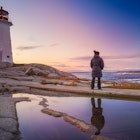
May 23, 2024 • 4 min read

May 21, 2024 • 11 min read

May 17, 2024 • 7 min read

May 11, 2024 • 9 min read

May 7, 2024 • 8 min read

Apr 29, 2024 • 5 min read

Apr 26, 2024 • 6 min read
Language selection
- Français fr
Do you want to come to Canada, or extend your stay?
Find out if you are eligible to apply.
Do you want to work, study, visit, travel through or live permanently in Canada?
Answer a few questions to find out what immigration programs you can apply for. Each immigration program has different application and eligibility requirements. You will need about 10-15 minutes to complete the form.
You may be asked questions about your:
- nationality
- language ability
- family members
- work experience
- income and/or net worth
- details on any job offer
Based on your answers, we will tell you what programs you may be eligible for, so be as accurate as you can.
If you are eligible, we will give you a detailed list of instructions on what to do next.
This online service will be unavailable from 11:30 p.m. to 6:30 a.m. Monday, June 10, 2024, Eastern time , in order to perform system maintenance.
Our online services are unavailable. Please try again later. Thank you for your patience.
Check your eligibility
Important: This information is for reference only and no immigration decision will be made based on your answers. If you choose to apply, your application will be considered by an immigration officer in accordance with the Immigration and Refugee Protection Act, without regard to any outcome you attain through this questionnaire. Read the full notice .
Page details
JavaScript is required to run Acrobat online services

IMAGES
VIDEO
COMMENTS
When to Travel in Canada: Best Times to Visit. Planning a trip to Canada involves more than geographical considerations; the weather should be high on the list of things to research as well. Canada is so massive that the country can be experiencing four seasons on the same day. For example, on a typical June day, it could be 30 degrees Celsius ...
11 Safety tips for your Canadian trip. Canada welcomes you with open arms and boasts a reputation for safety. Crime rates are low, especially in major cities, and the culture is peaceful. Strict gun control laws contribute to a lower risk of gun violence compared to other countries. Canada Road Trip Planning Tips.
Planning a Canada travel itinerary: Essential Travel Tips. Here are quick travel tips to prepare for your trip to Canada! Best time to visit Canada. Canada is a popular summer destination. And there is a good reason - most Canadian cities in the summer are bustling with activities from outdoor cafes, farmer's markets, to festivals and picnics.
27707 / Pixabay. All U.S. citizens arriving in Canada must have a valid passport or passport equivalent, such as a passport card or NEXUS card. Gone are the days of casual cross-border visits with only a driver's license; those disappeared after 9/11. There's some leniency when it comes to children coming to Canada.
Discover all my articles about Canada: All my articles to help you plan your trip to Canada are listed there. 20 Best Things to do in Canada; 20 Best Things to do in Quebec - All best places to visit in the French-speaking province! Itinerary: One week in Canada: The perfect itinerary to visit Canada in 6, 7 or 8 days!
CAPITAL: Ottawa: OTHER MAIN CITIES: Quebec, Toronto, Vancouver, Montreal, Calgary, Edmonton CURRENCY: Canadian dollar (See current exchange rates) ELECTRICITY: In Canada, the standard voltage is 120 V, while the standard frequency is 60 Hz. The power plugs and sockets are of type A and B. Type B works with plug A as well. (Be sure to get your universal travel adapter before you leave)
Visit the famous Royal Tyrrell Museum to learn more about Alberta's dinosaur history and take a guided tour of one of the world's largest deposits of Cretaceous fossils. Day 5 - 6: Banff National Park. ... When planning a trip to Canada, it's important to consider your budget. Since Canada is a large country, the cost of travel will ...
Canada Itinerary: Practical Tips for Planning Your Trip . Hotel options are limited in areas like the Canadian Rocky Mountain Parks - book immediately after deciding where you plan to go. You can get a good look at a specific region over a 5 to 7-day Canada itinerary, but I'd recommend staying longer to explore more than one area.
Visit Canada. Find out what document you need to travel, visit family and friends, do business, or transit through Canada, and how to extend your stay. Special measures for. For people affected by. Iranian temporary residents in Canada. The situation in Lebanon.
Canada Travel Guide. Last Updated: April 29, 2024. Canada is a massive, stunning country filled with friendly people, diverse cities, and unique landscapes. Spanning over 9,000 kilometers (5,600 miles) from the icy tundra of the Yukon to the rocky beaches of the east coast, the Great White North is a country that has something for everyone.
5. Baffin Island. Best for Inuit art and incredible landscapes. The rugged landscape of Baffin Island is home to cloud-scraping mountains and a third of Nunavut's human population. It's Canada's largest island (the fifth biggest in the world) and the ideal place for an arctic safari where you can spot narwhals, belugas and bears in their natural habitat.
The Best Time To Visit Canada . Canada's climate varies tremendously and should be considered when planning your 1 month Canada itinerary. There are warm and sunny days in summer, July to August, and then there can be sub zero temperatures in winter, December to February.
Here is an itinerary to help you plan a vacation to the place less travelled in Canada. Before going through this itinerary, read - A Guide to Planning a Trip to Yukon in Winter. Day 1:Arrival & Northern Lights Arrival: If you've heeded this advice and flown Air North, you will arrive at Erik Nielsen Airport in downtown Whitehorse, Yukon.
This itinerary features 2 Vancouver and Calgary, the 2 most famous cirties of Western Canada, as well as the world famous Jasper and Banff National Parks.. Quick note: If you prefer to visit the Eastern part of Canada, particularly the province of Quebec, you should check my other itinerary: The Perfect 2-week Itinerary in Quebec.. For this itinerary, in addition to the best things to do and ...
Travel tips & resources for your visit. To help you plan your visit to Niagara Falls, Canada, we've provided a handy collection of travel resources, planning tips and destination information below. Find everything you need to know to begin your adventure to Explore Niagara!
Canada trip planner: An easy to follow Canada Travel Checklist. Step 1: Choose where to go in Canada. Step 2: Pick a time - month or season to travel to Canada. Step 3: Set a budget for your Canadian getaway. Step 4: Finalise your Canada itinerary. Step 6: Get your travel documents sorted.
Itinerary #1: Explore Canada's National Parks: Banff & Jasper. Perfect for nature lovers, this Canada itinerary explores the bucket list highlights of Banff and Jasper national parks. In just five days, you'll drive through the Canadian Rockies, visit Lake Louise, explore Athabasca Glacier, and go in search of deep canyons and roaring ...
A 2 dollar coin is two colours, has polar bears on it, and is called a "toonie". The next coin is 25 cents - called a "quarter", 10 cents - called a "dime", 5 cents - called a "nickel". We used to have 1 cent and it was called a "penny" but they got discontinued in 2012 because they became basically useless.
Today we share tips on how to plan a trip to Canada, including the best time to visit Canada and when to visit Canada. We share tips on getting around Canada...
4. Book Your Flights. Most travelers to Canada either fly into one of the country's major airports like Toronto, Montreal, or Vancouver, or they drive across the border from the US. I've visited Canada many times and arrived both by crossing land borders and by flying into the country.
Insight Guides' practical guide to planning a trip to Canada. Find out when to visit, for how long, how to get around, what to see and do and where to stay. Plan your trip to Canada with Insight Guides.
Don't forget your eTA. When visiting Canada you may need to apply online for an eTA (electronic travel authorization). This only costs $7 Canadian Dollars and you can do this online. The process is quick and you will often get approval within the hour. However, it's always best to do this a few weeks in advance just in case you have any issues.
6. Cell phone options are expensive, so stick with your home plan. Picking up a SIM card upon arrival in Canada won't land you the savings it does in other countries. Phone plans in Nova Scotia are notoriously expensive. It's likely cheaper to stick with your own roaming plan.
To apply for a visitor visa to join a vessel as a marine crew member (seafarer), you must. be travelling to Canada to join a ship's crew. hold a seafarer's identity document. hold a valid passport or travel document. have proof of employment on a vessel at a Canadian port.
Do you want to work, study, visit, travel through or live permanently in Canada? Answer a few questions to find out what immigration programs you can apply for. Each immigration program has different application and eligibility requirements. You will need about 10-15 minutes to complete the form. You may be asked questions about your ...
Argentina vs Canada Live free : It's Argentina vs Canada Live Online Free and this Today ESPN fight Argentina vs Canada Match. The Argentina vs Canada Match will air on ESPN Live today at 1 p.m. ET. Ready to tune into the Argentina vs Canada Knights showdown? Here's how to watch the Match this afternoon, plus our recommendations for the best ways to watch every ESPN fight Match this year ...
Your group can check in via the app or online, but you'll need to do it in increments of 9 passengers. For instance, if your group consists of 27 passengers, the group representative will need to complete 3 check-in sessions containing 9 passengers each.
Personal information is collected under the authority of the Metrolinx Act, 2006, and in accordance with FIPPA.Personal information you provide will be used, as requested, to respond to your enquiries, add you to an e-mail list that may send promotional messages, enhance and improve our services, or otherwise provide you with a personalized experience.
Adobe Acrobat online services let you work with PDFs in any browser. Create, convert, compress, edit, fill, sign, and share files. Sign in to get started.